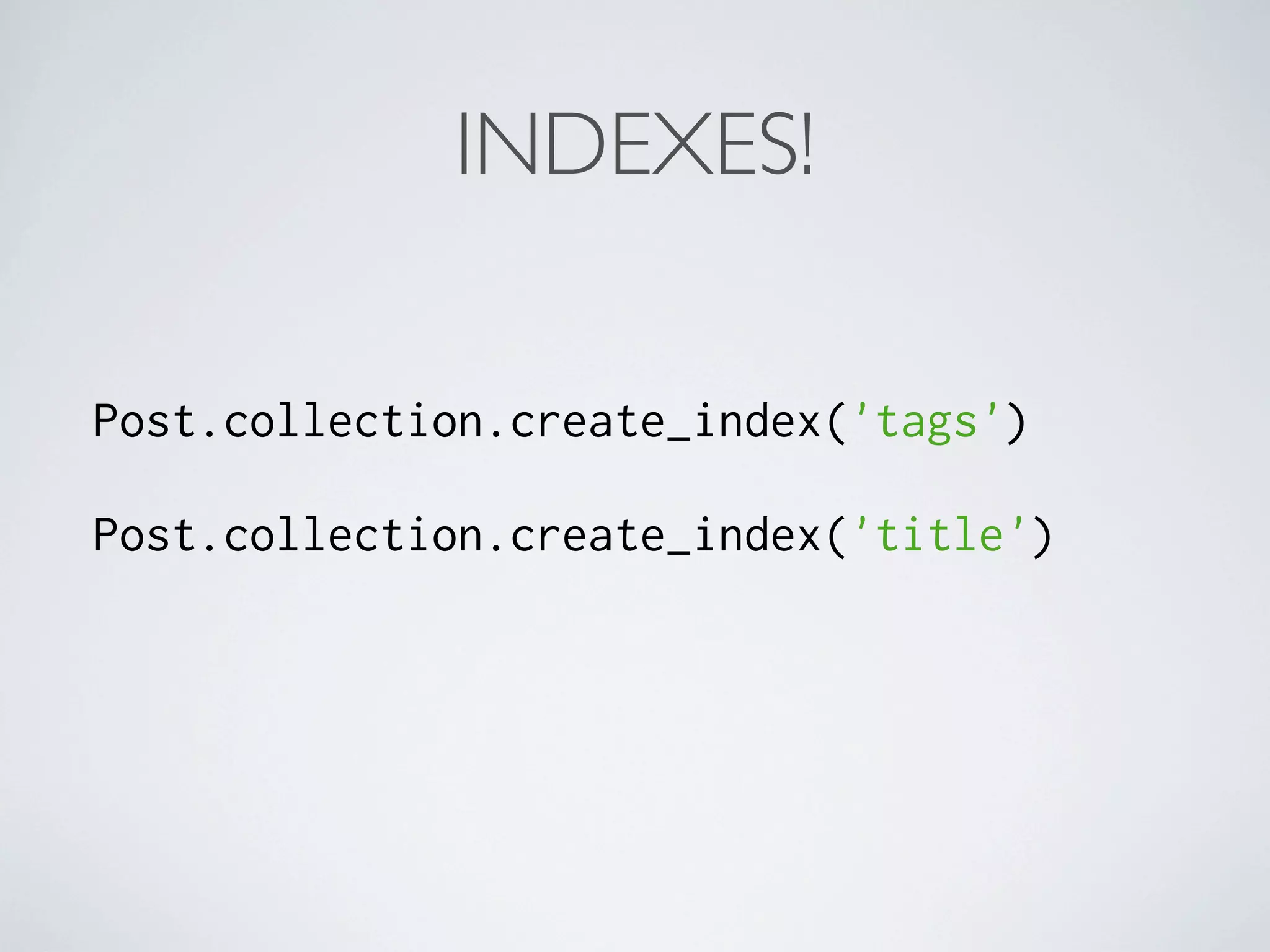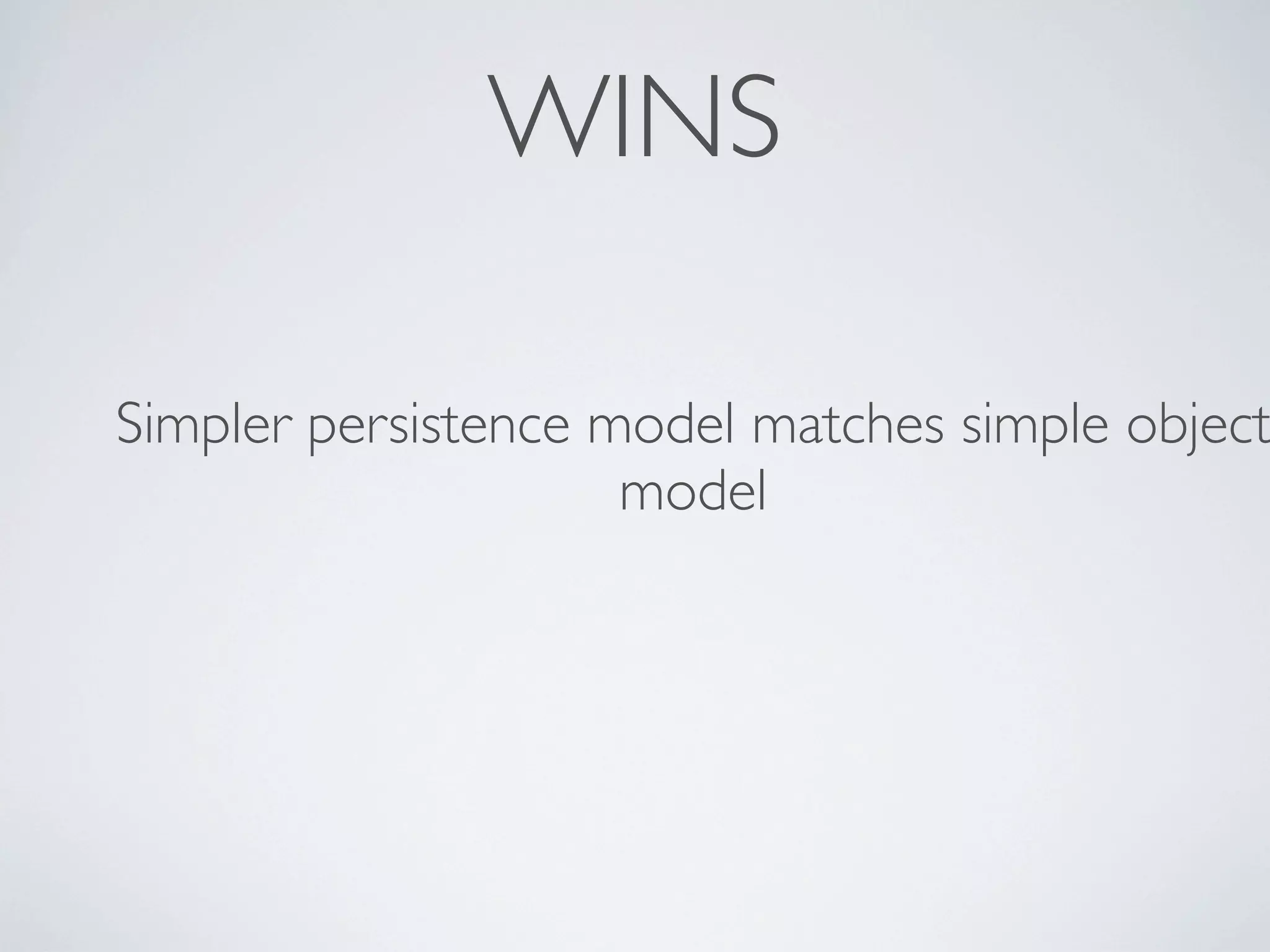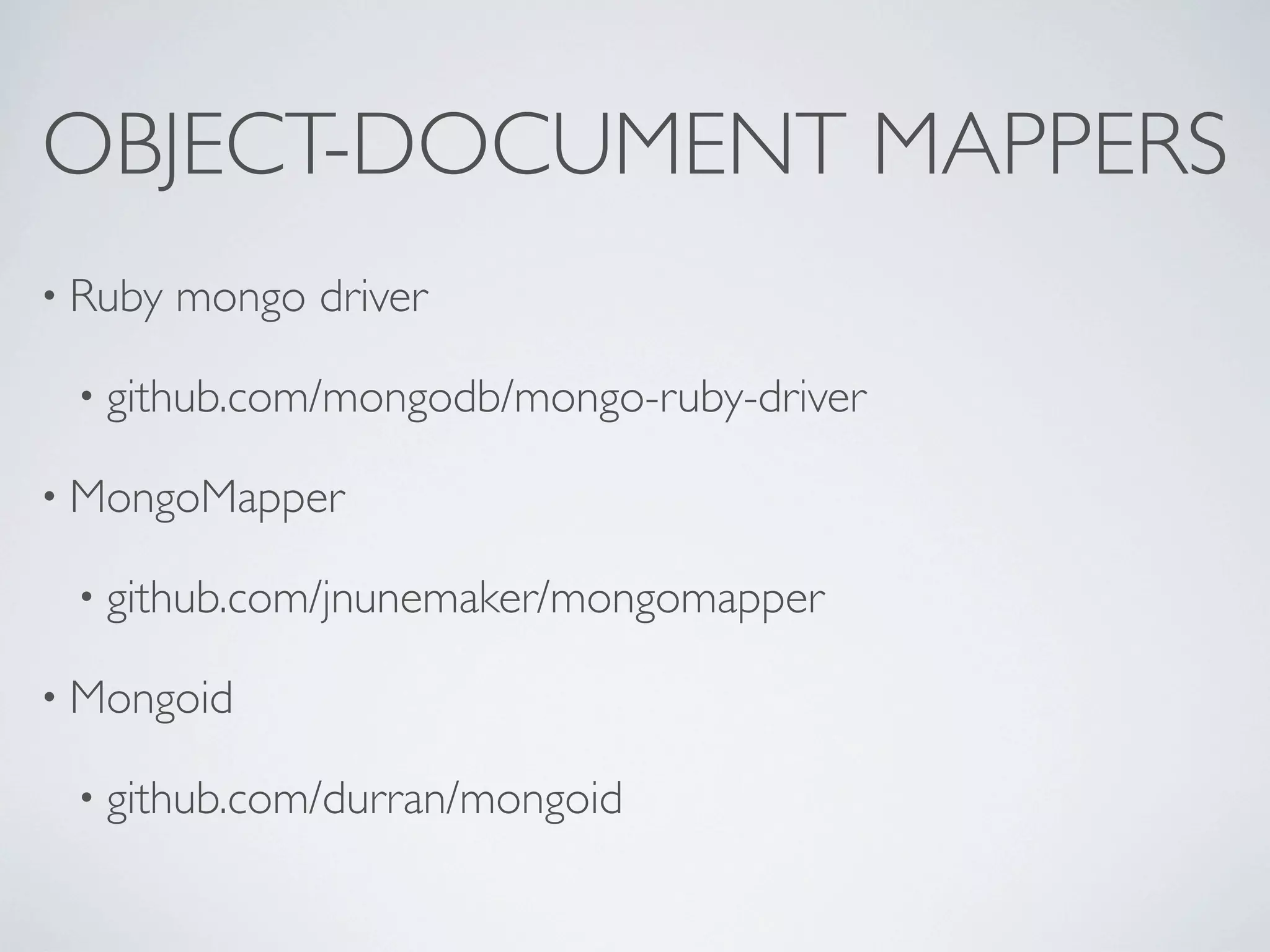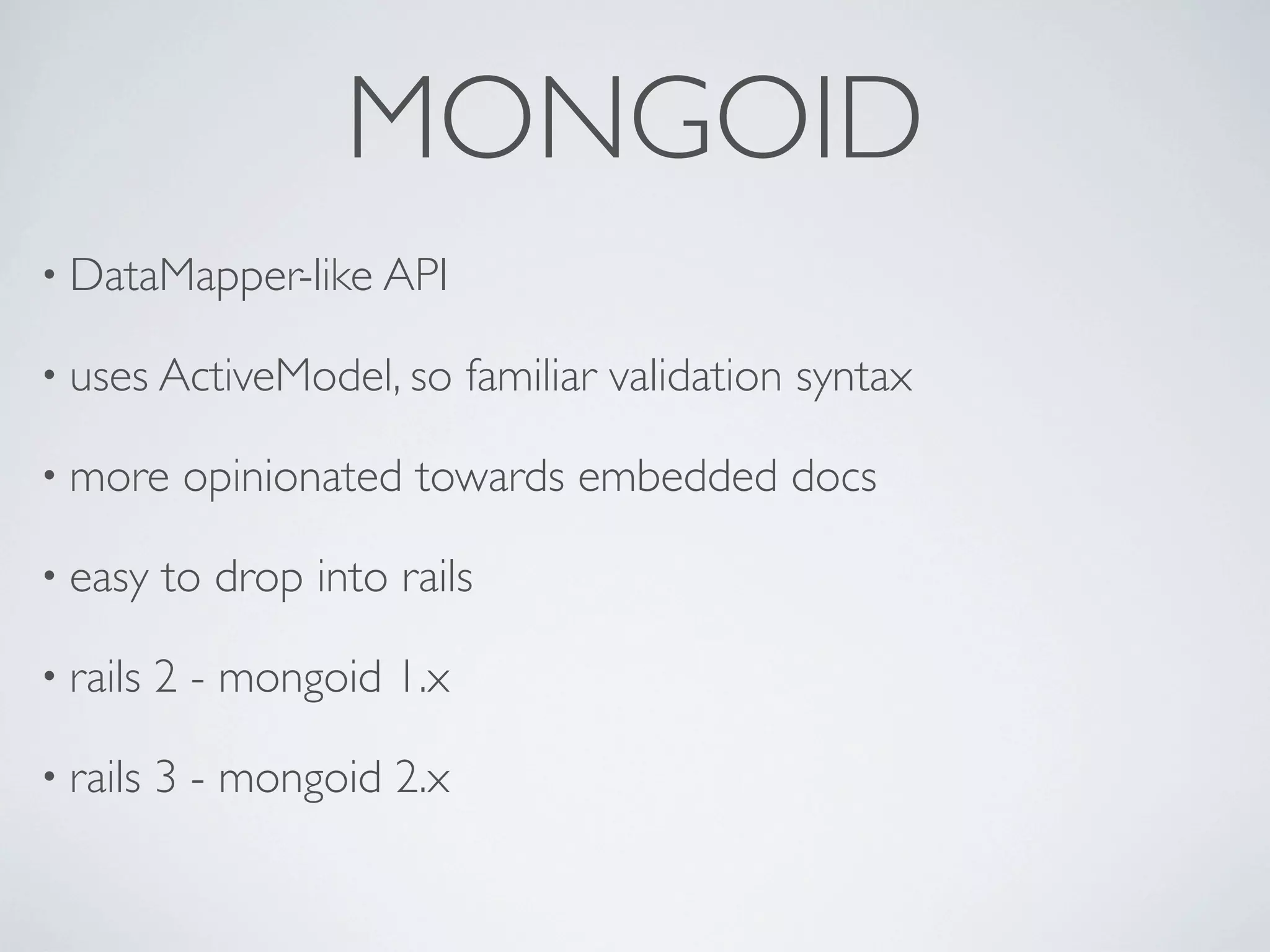The document discusses using MongoDB for practical projects by modeling objects in a document-oriented way rather than using an ORM with a relational database. It provides examples of accounting, logging, and blogging applications that are better suited to MongoDB's schema-less and embedded document features compared to a relational database.
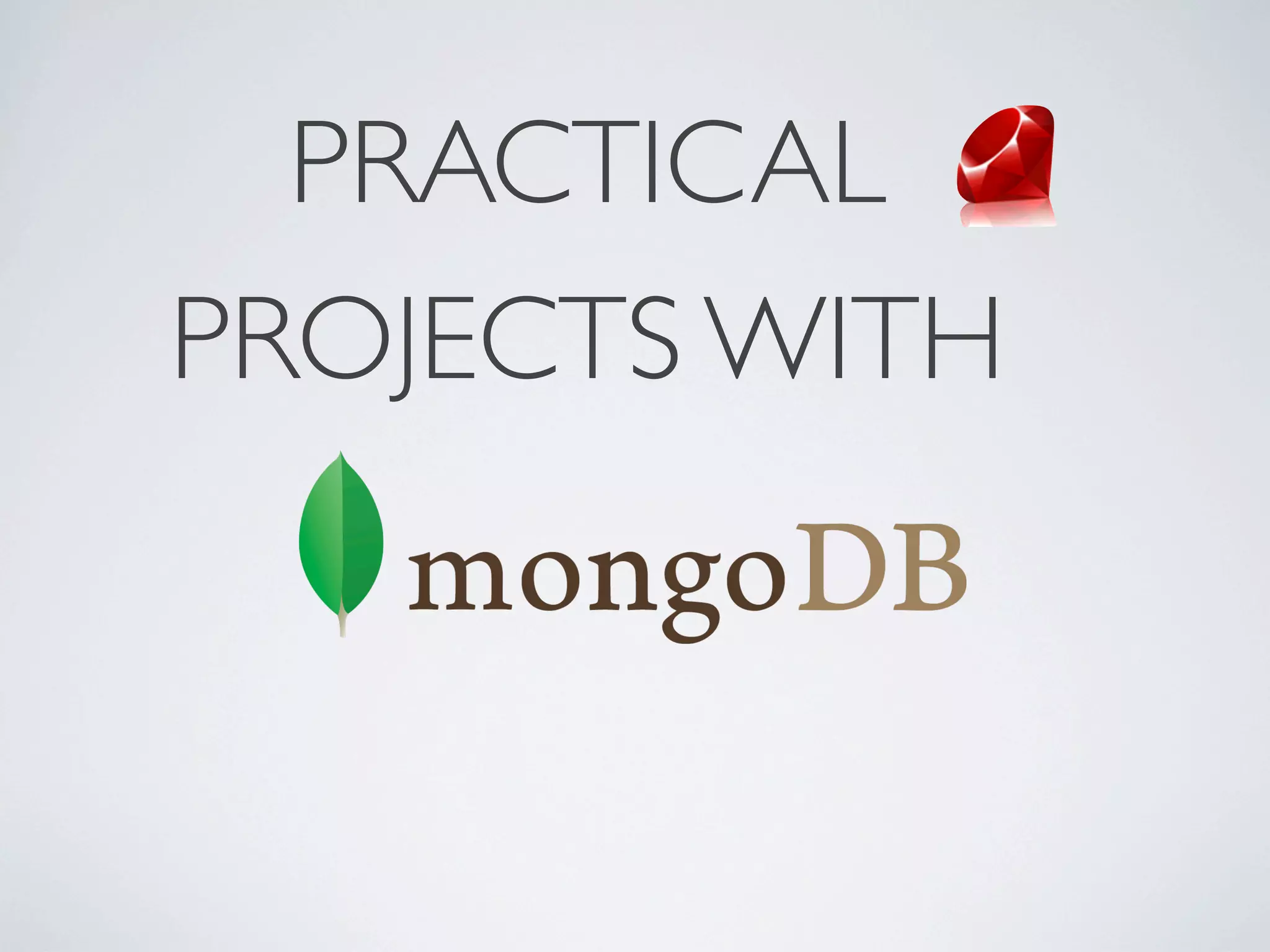
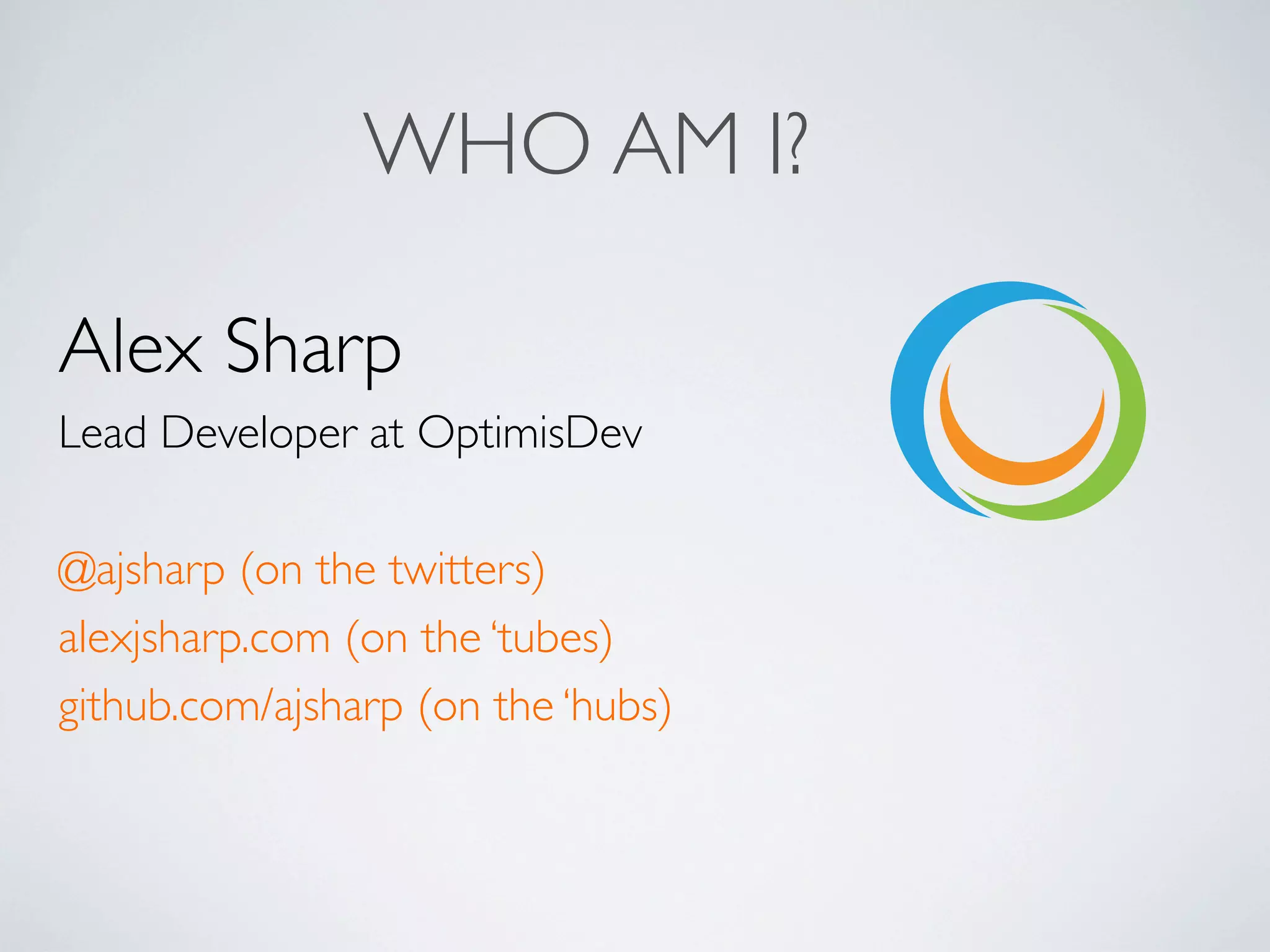
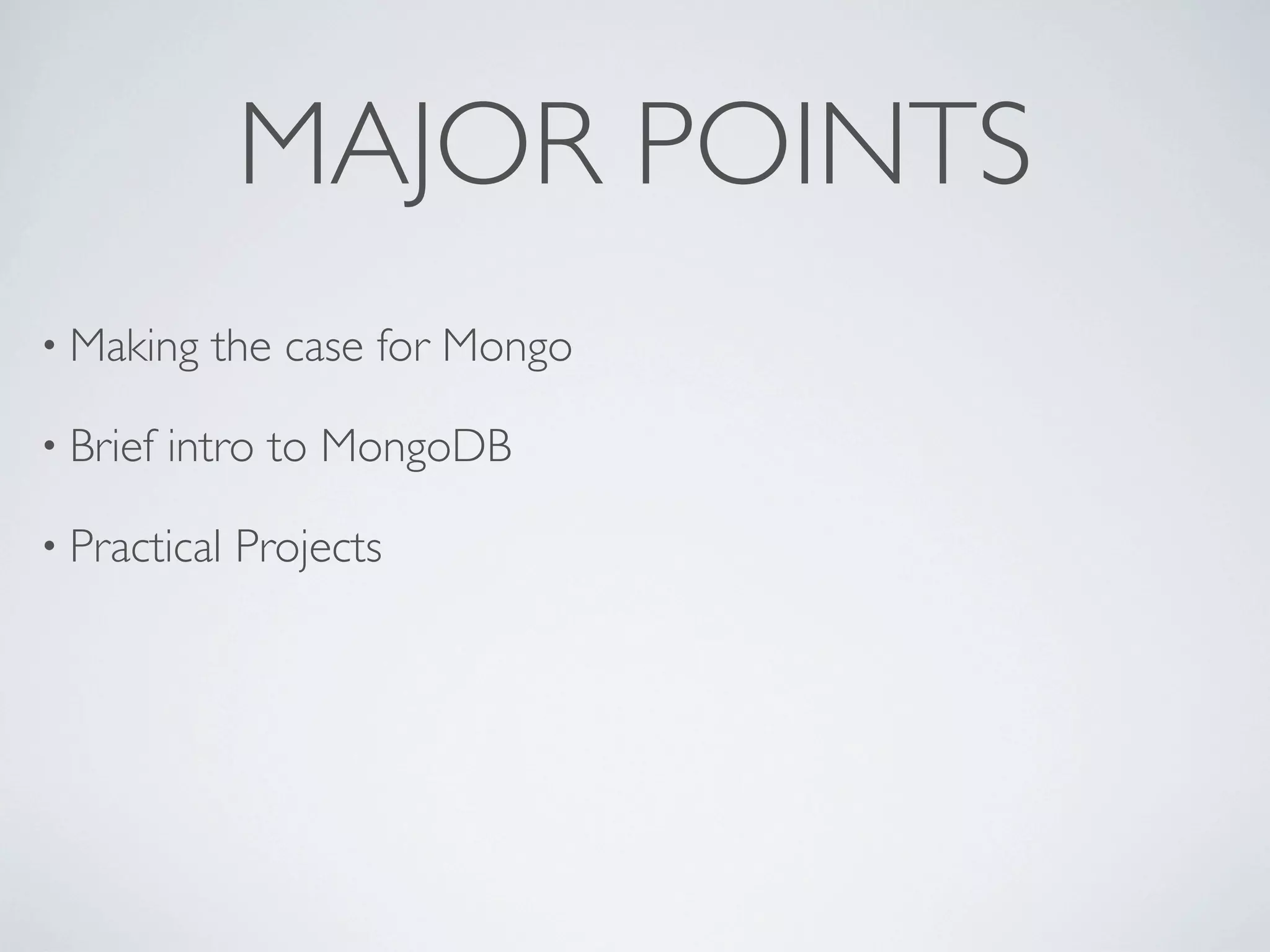

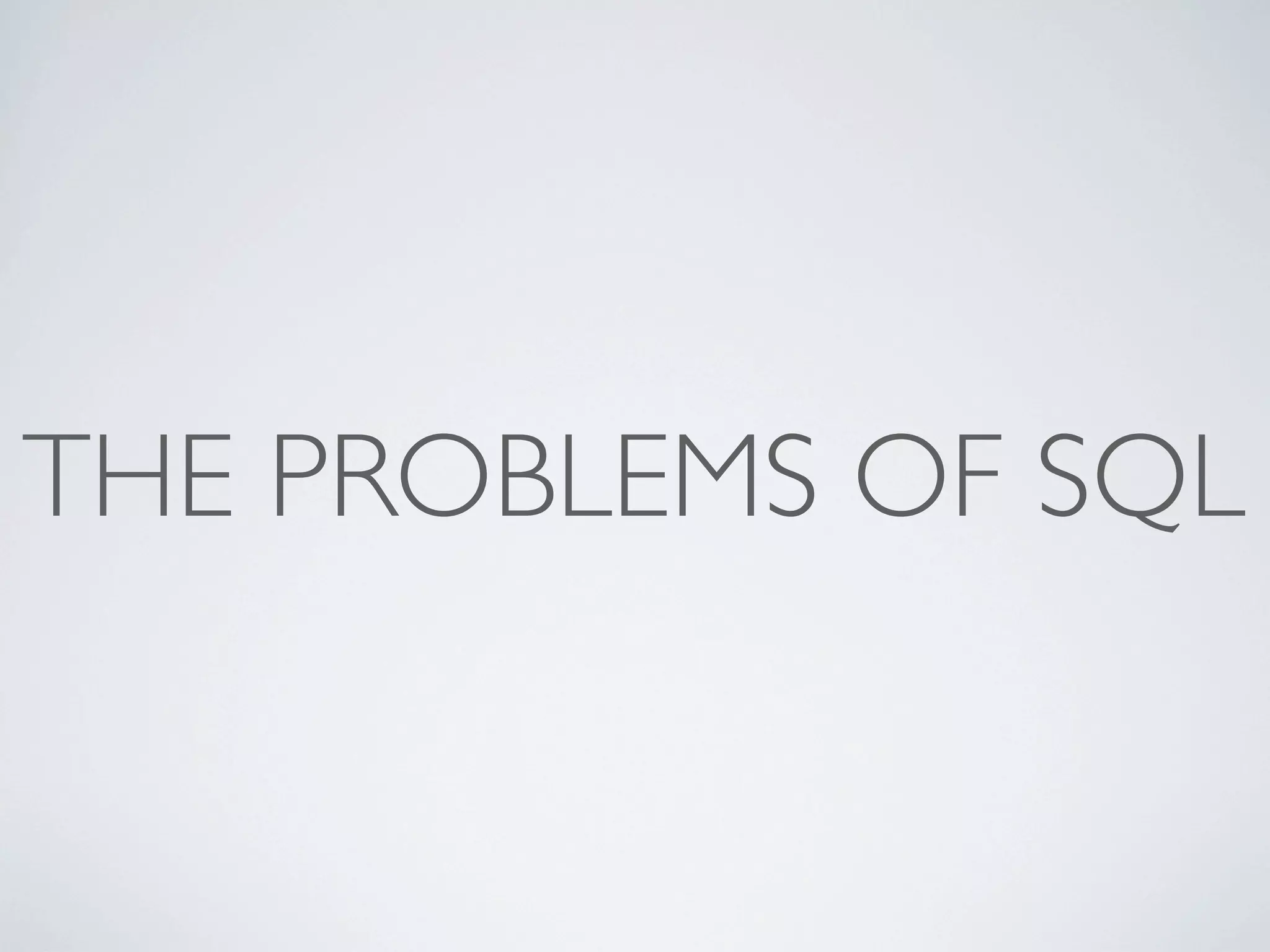
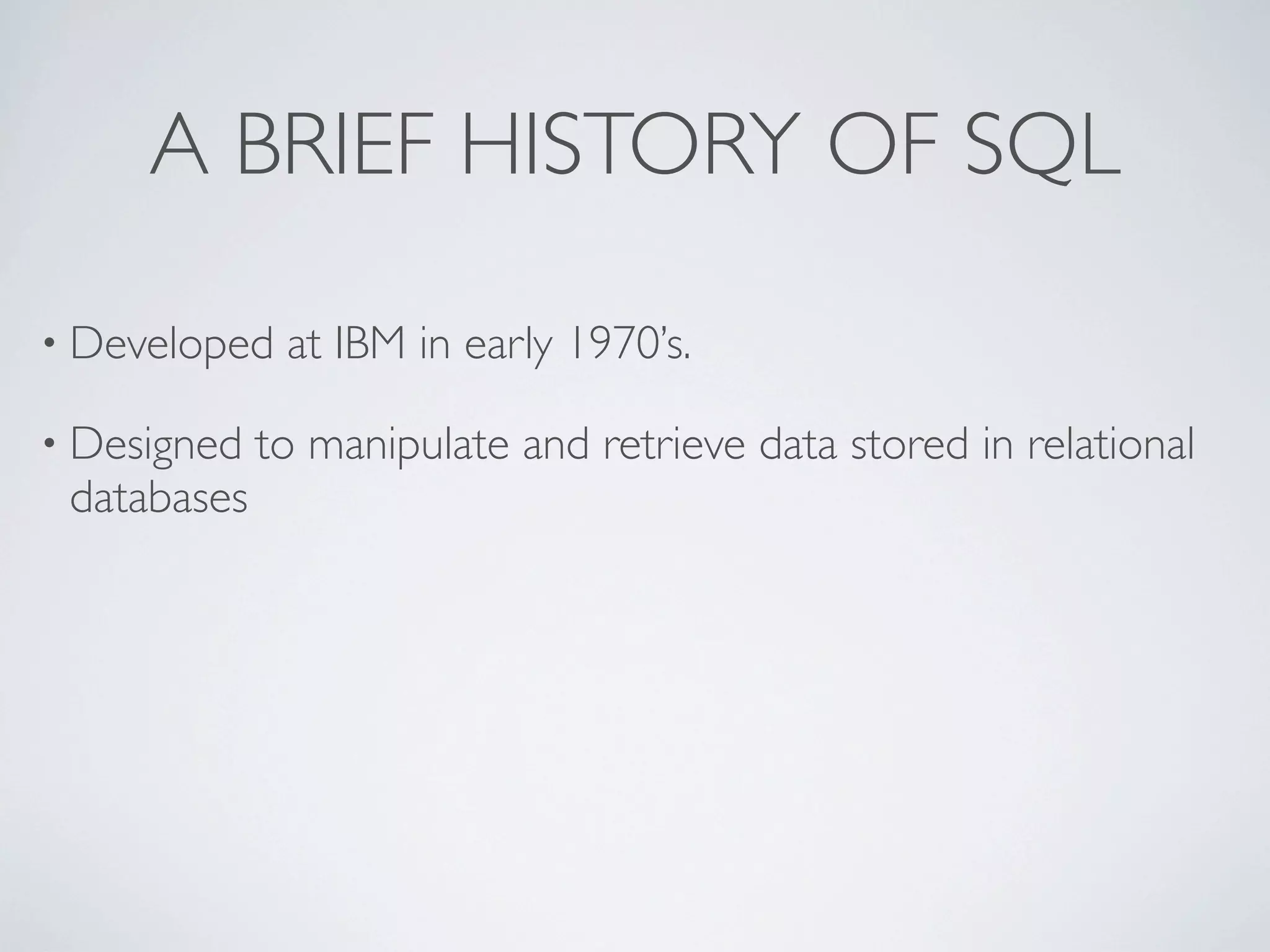
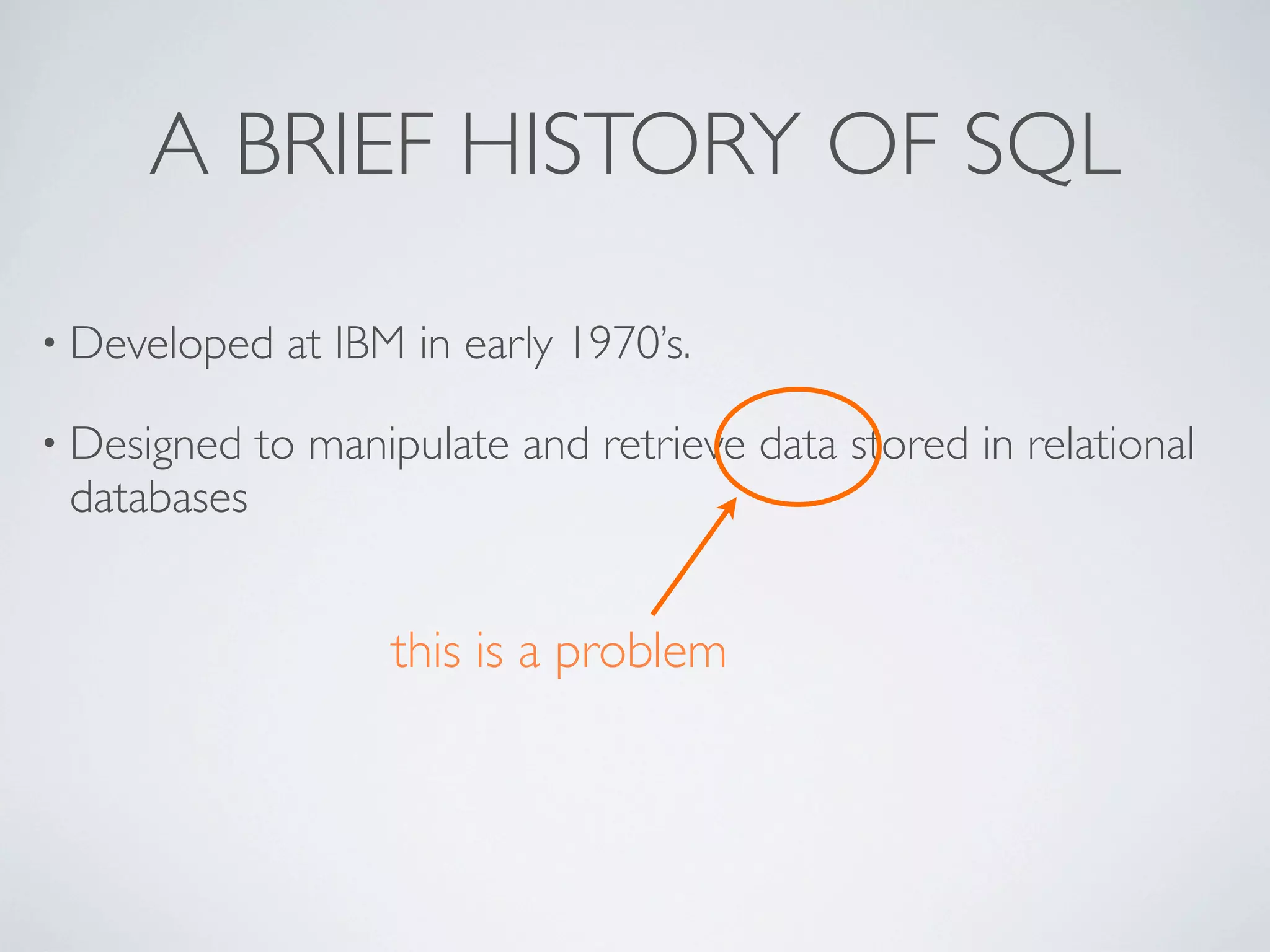


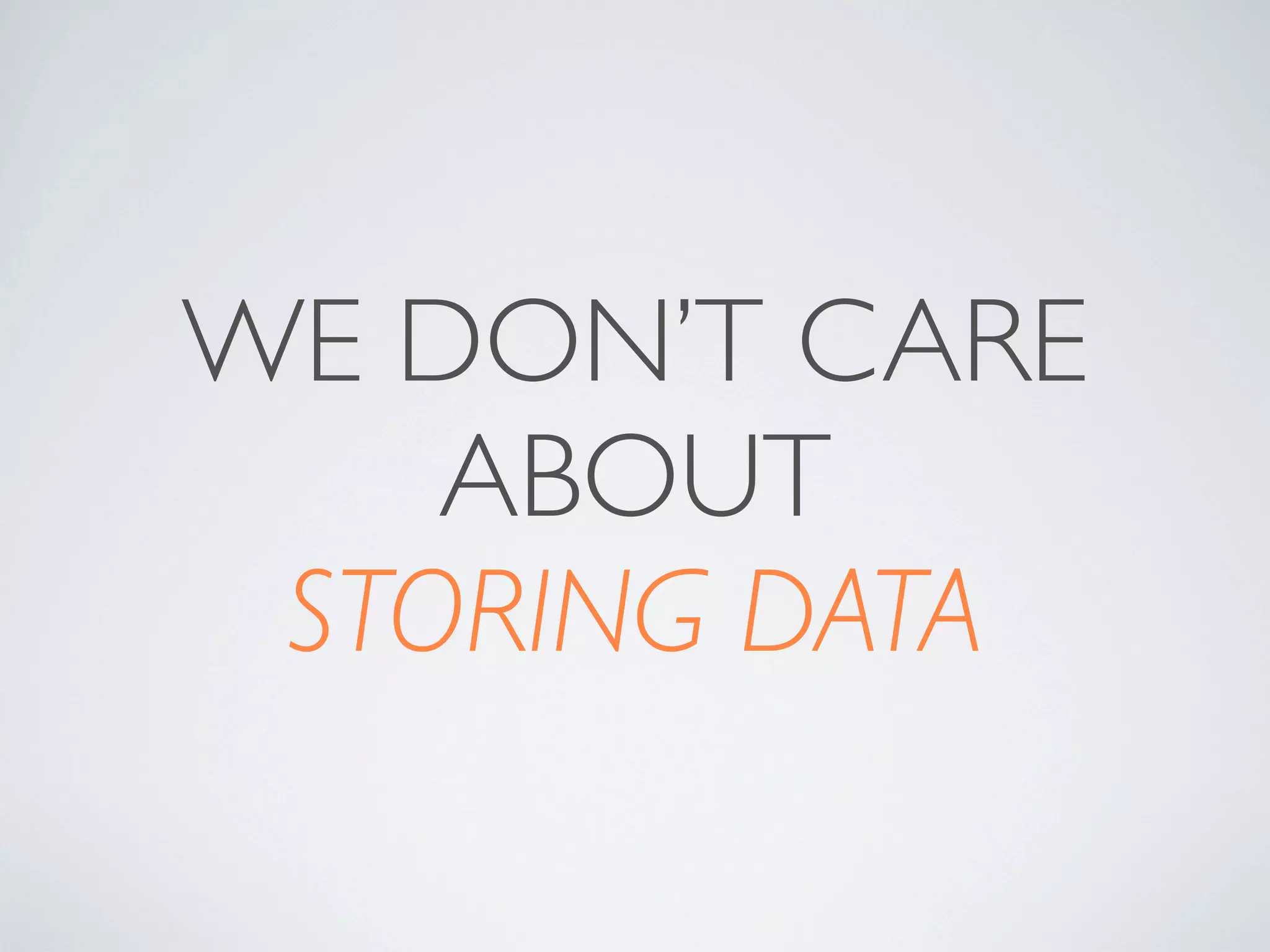

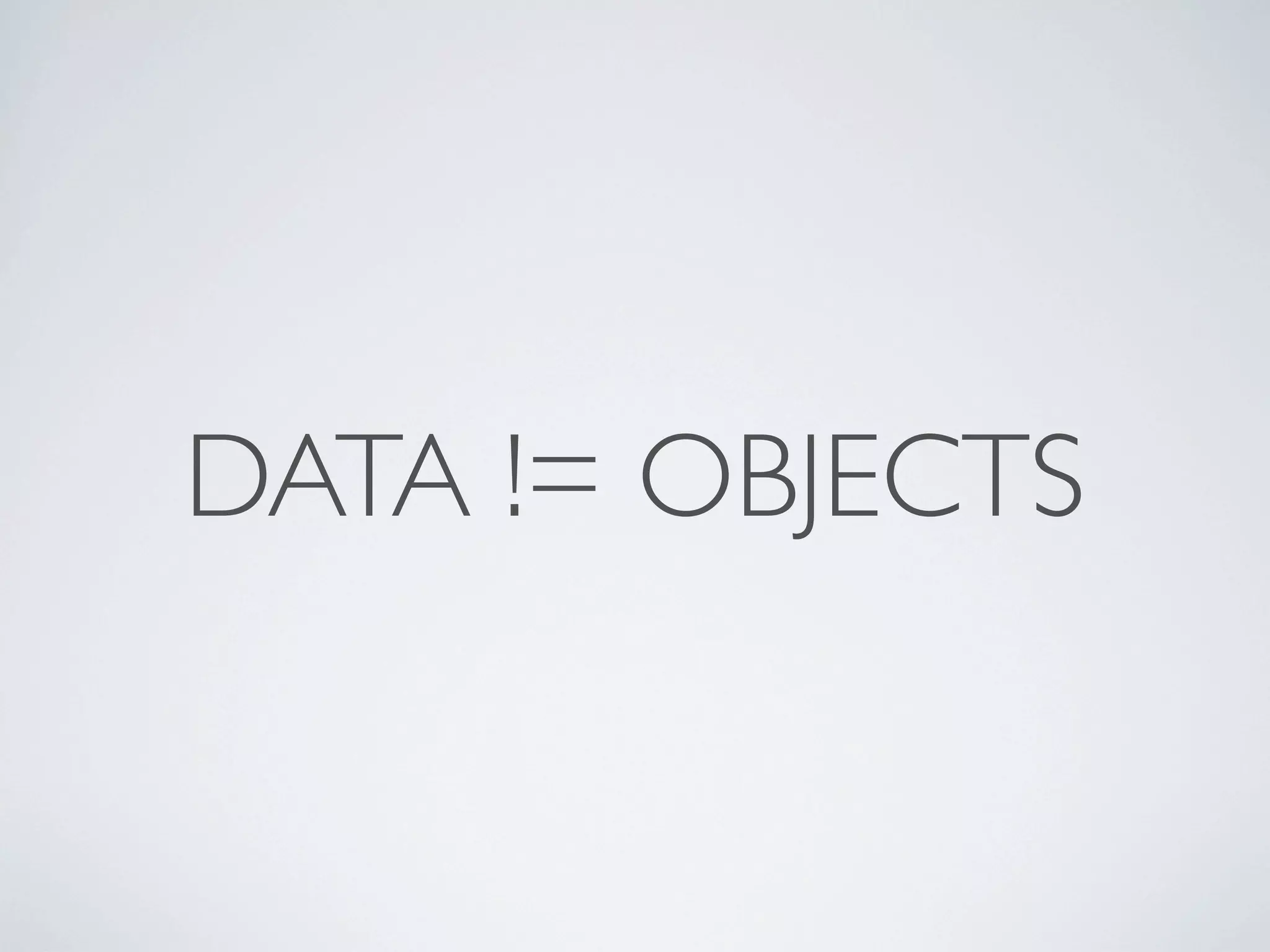

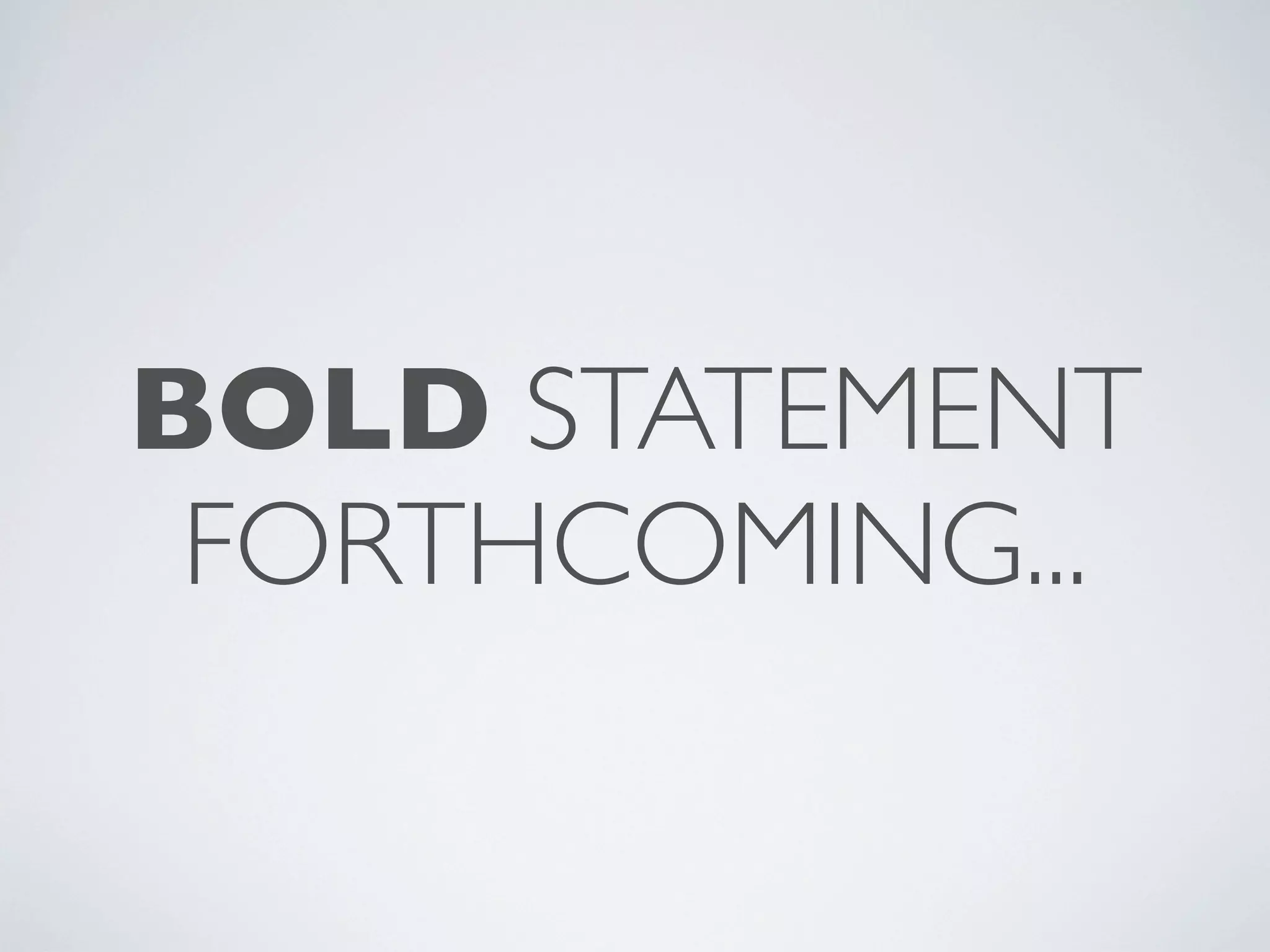
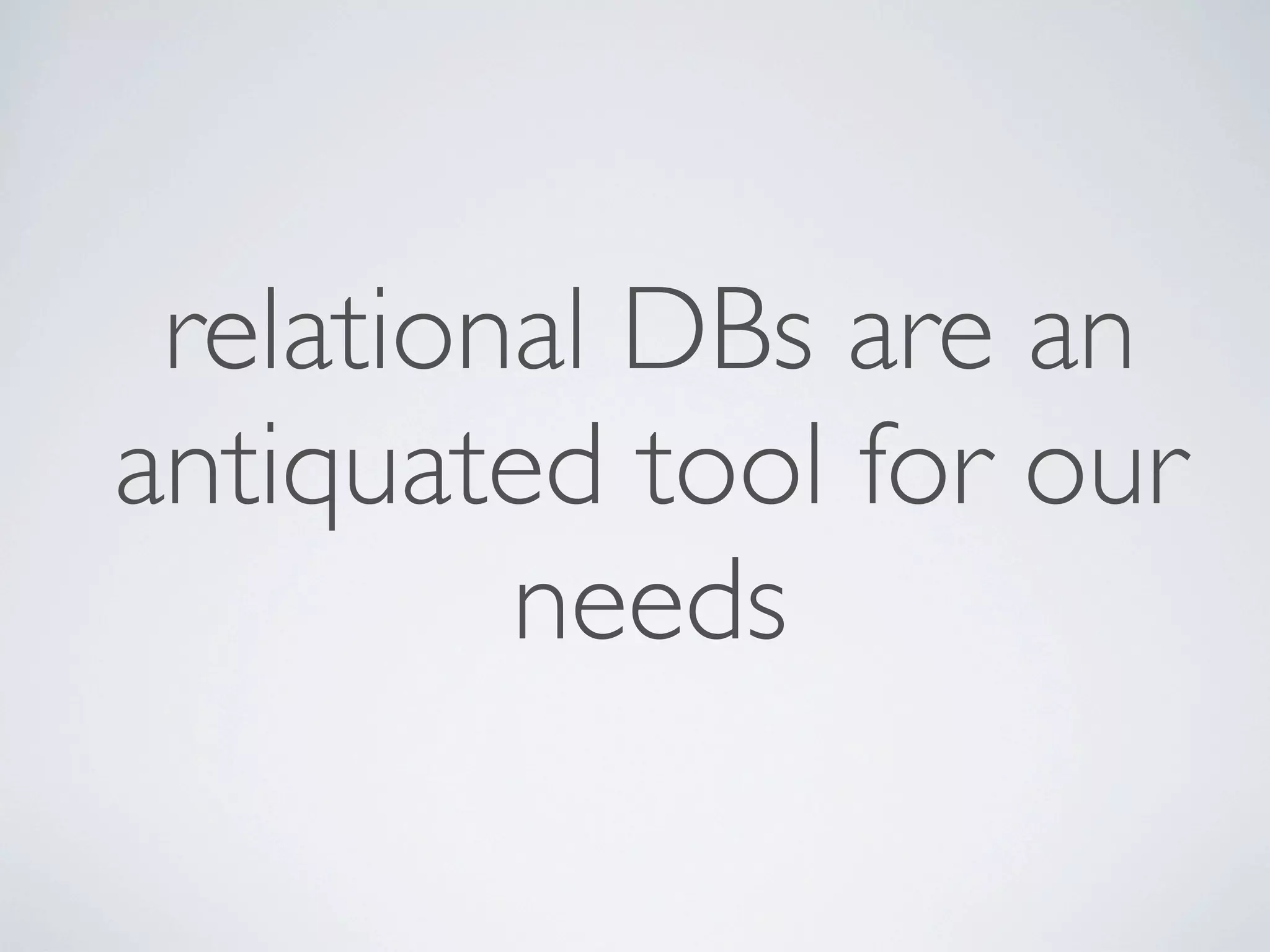
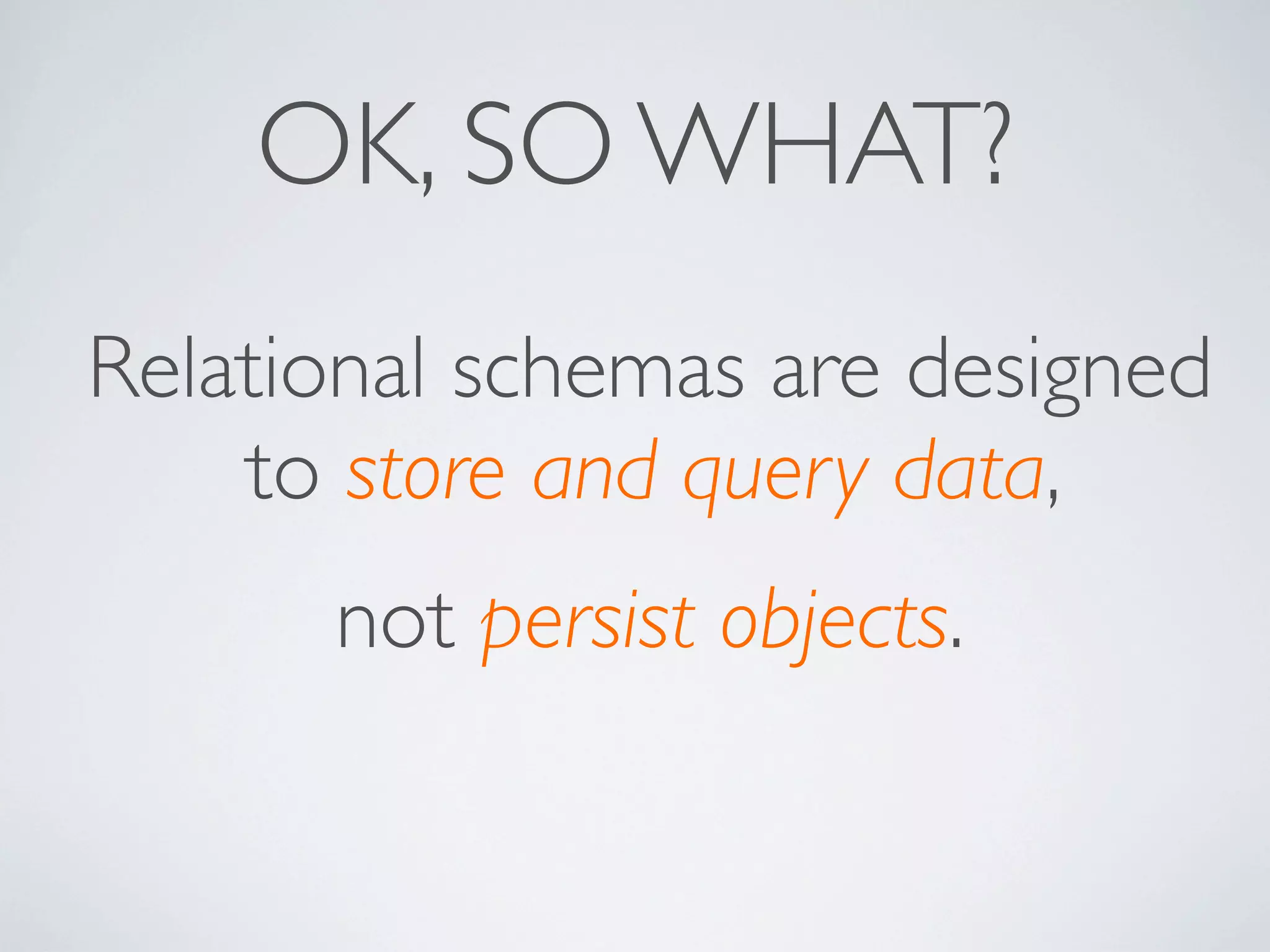
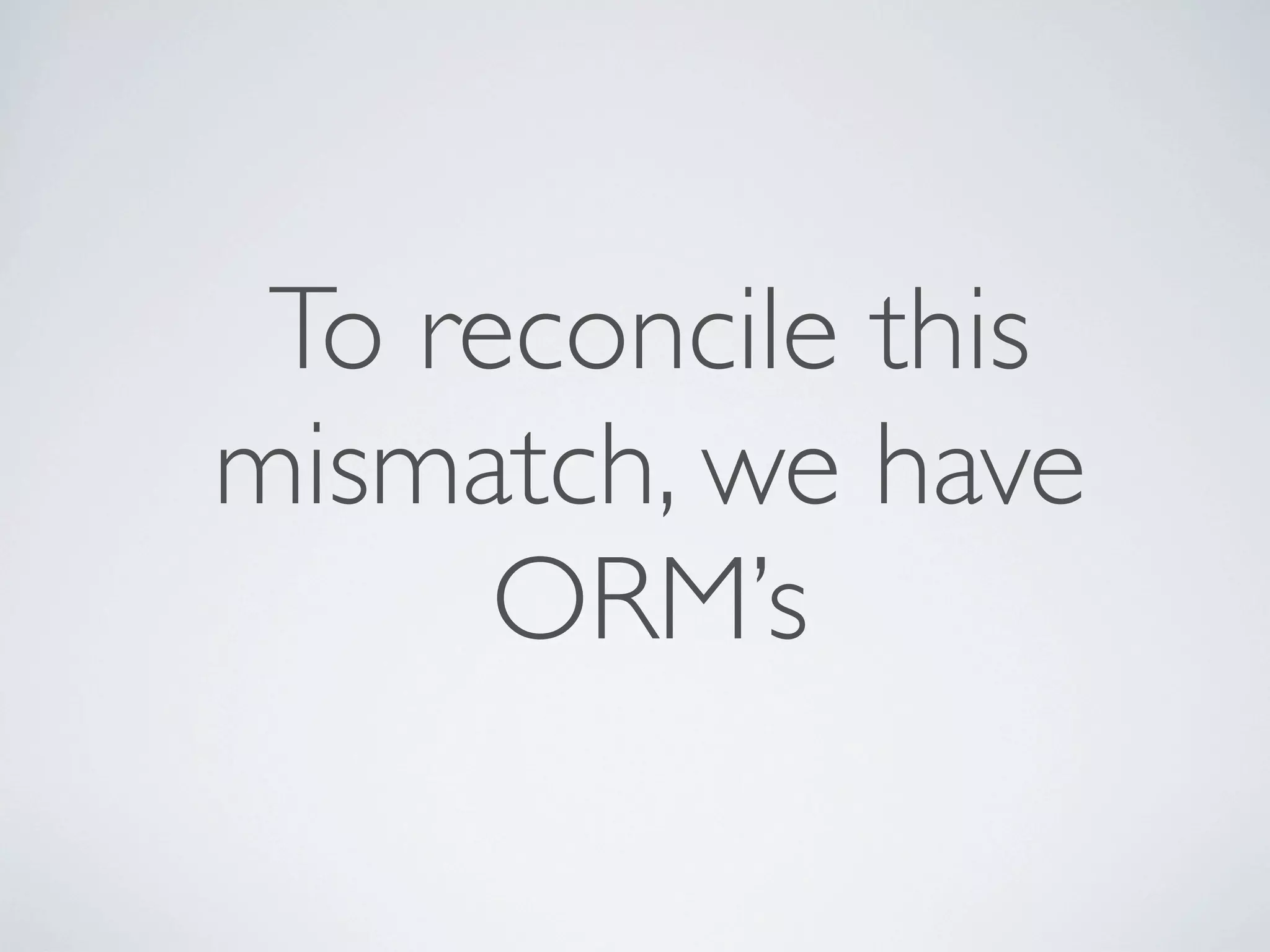
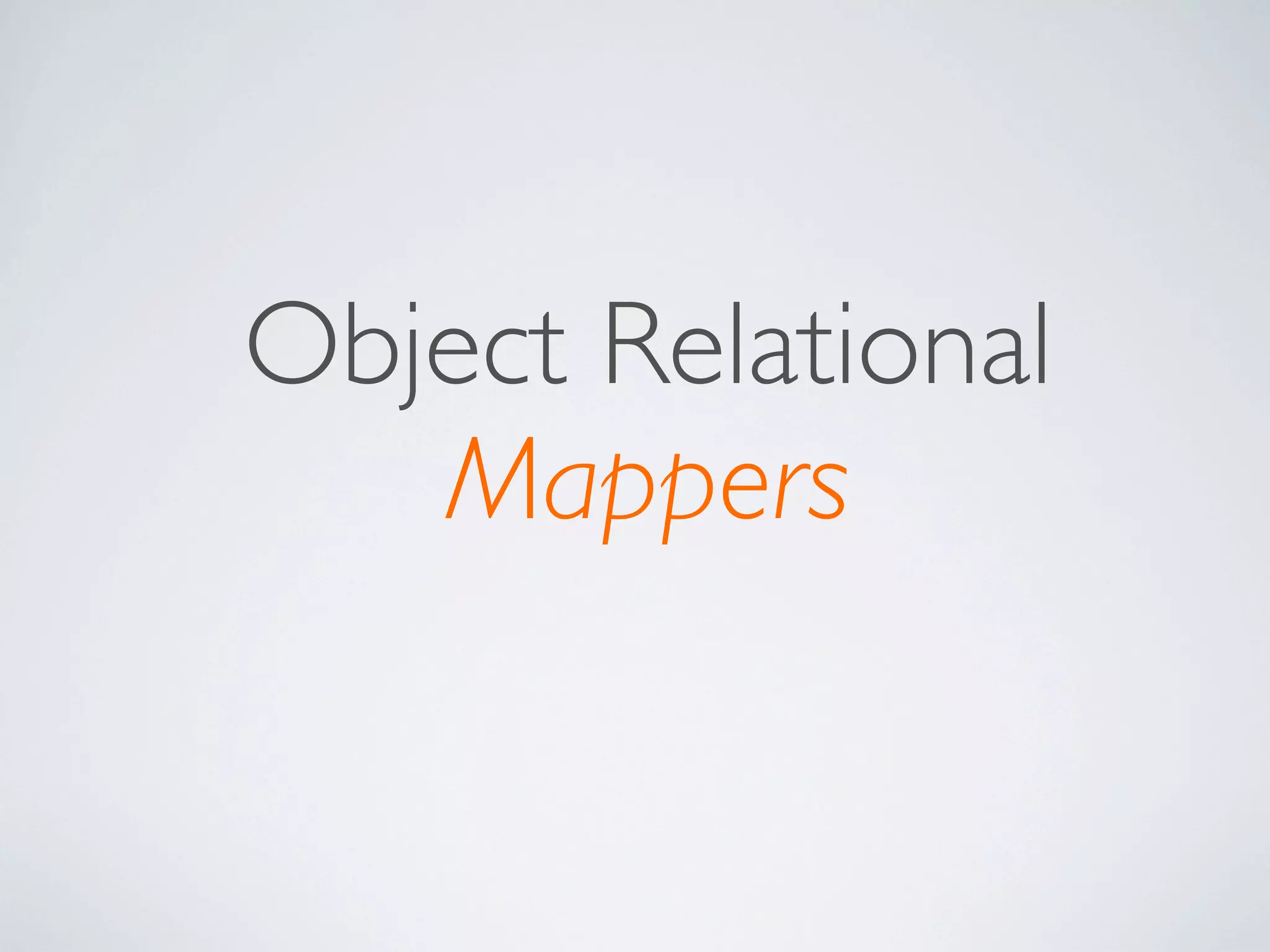
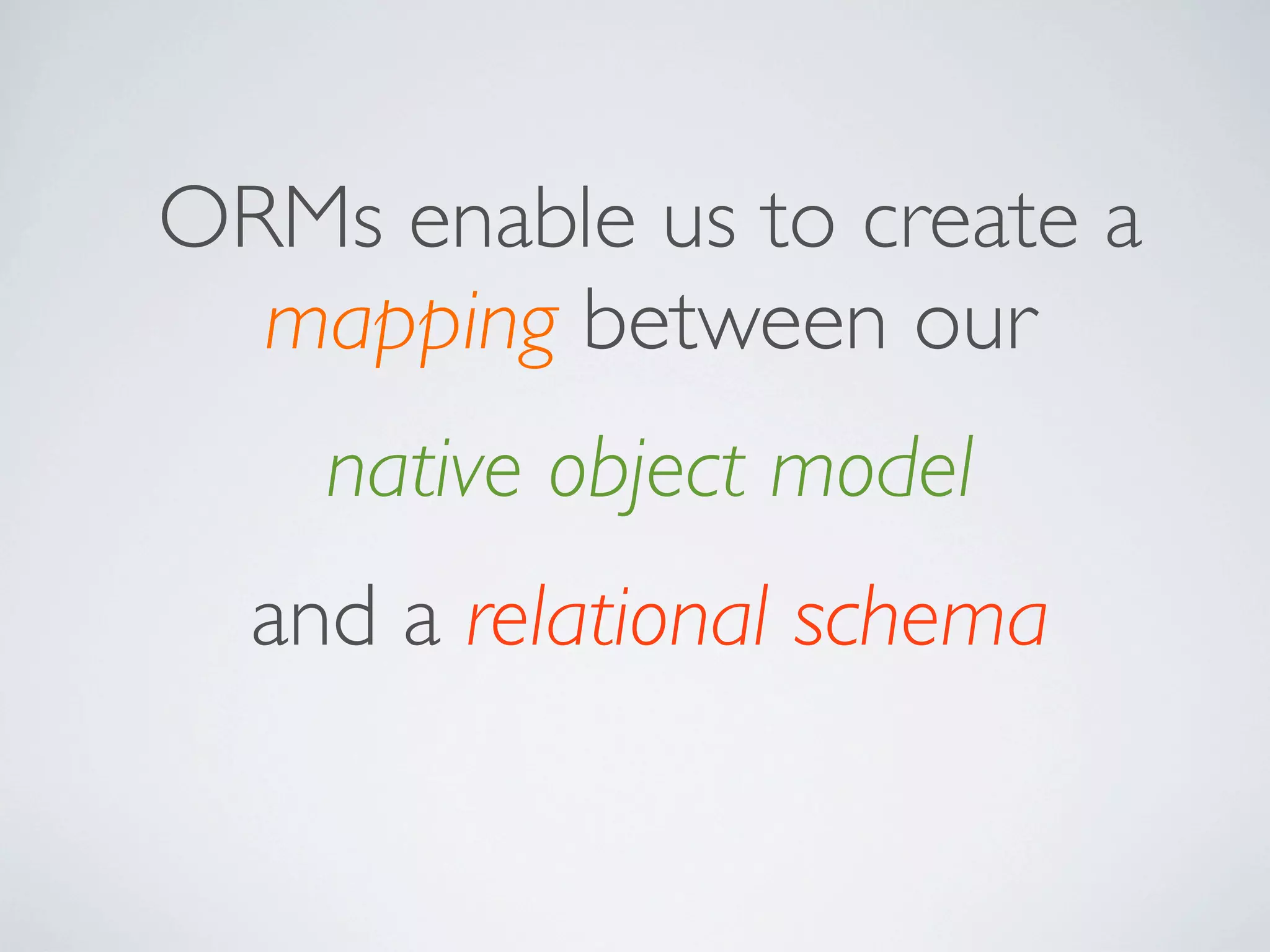
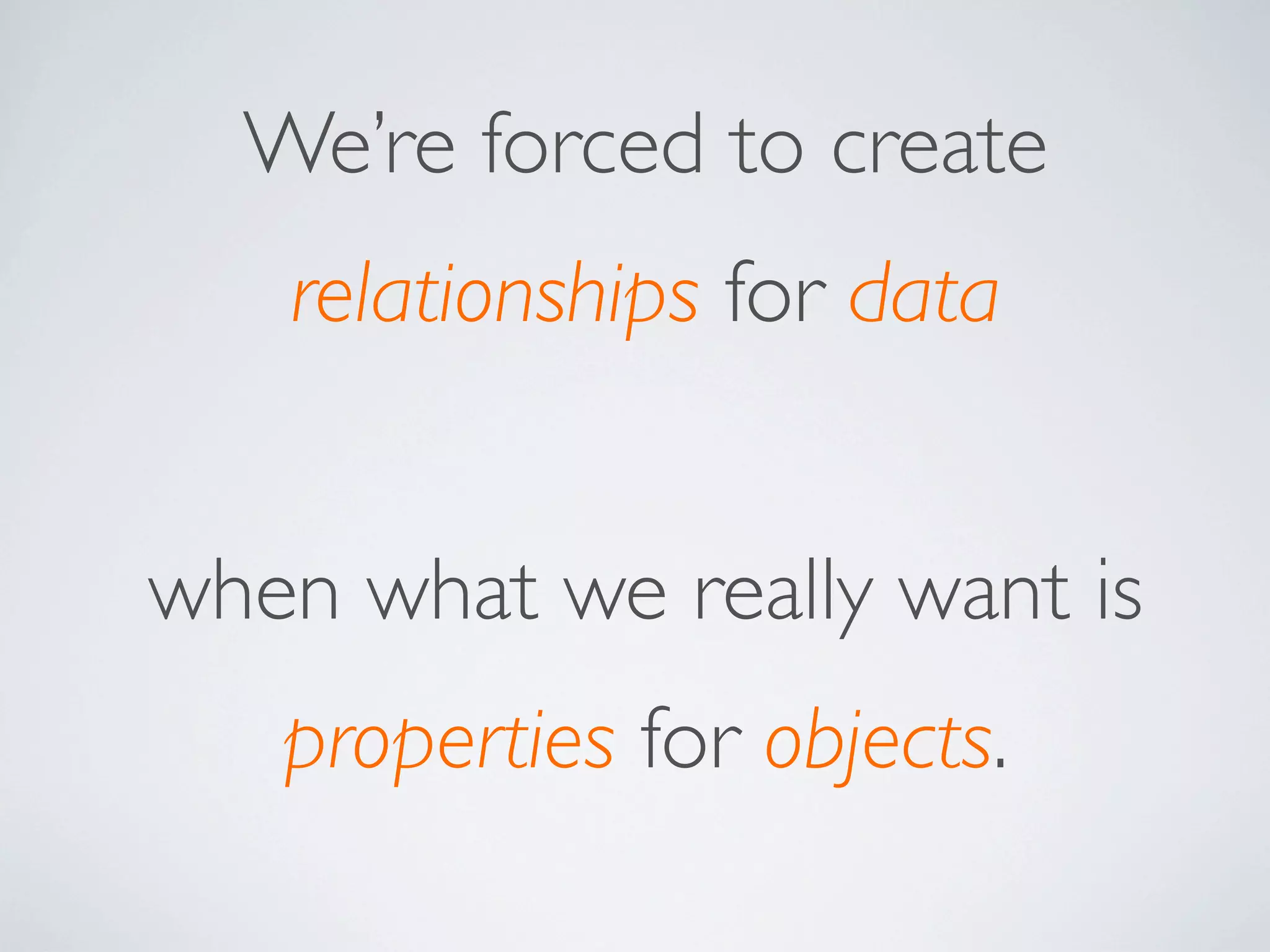


![@alex = Person.new( :name => "alex", :stalkings => [ Friend.new("Jim"), Friend.new("Bob")] )](https://image.slidesharecdn.com/practicalrubyprojectswithmongodb-rubykaigi-100829003551-phpapp02/75/Practical-Ruby-Projects-with-MongoDB-Ruby-Kaigi-2010-23-2048.jpg)
![NATIVE RUBY OBJECT <Person:0x10017d030 @name="alex", @stalkings= [#<Friend:0x10017d0a8 @name="Jim">, #<Friend:0x10017d058 @name="Bob"> ]>](https://image.slidesharecdn.com/practicalrubyprojectswithmongodb-rubykaigi-100829003551-phpapp02/75/Practical-Ruby-Projects-with-MongoDB-Ruby-Kaigi-2010-24-2048.jpg)
![JSON REPRESENTATION @alex.to_json => { name: "alex", stalkings: [{ name: "Jim" }, { name: "Bob" }] }](https://image.slidesharecdn.com/practicalrubyprojectswithmongodb-rubykaigi-100829003551-phpapp02/75/Practical-Ruby-Projects-with-MongoDB-Ruby-Kaigi-2010-25-2048.jpg)
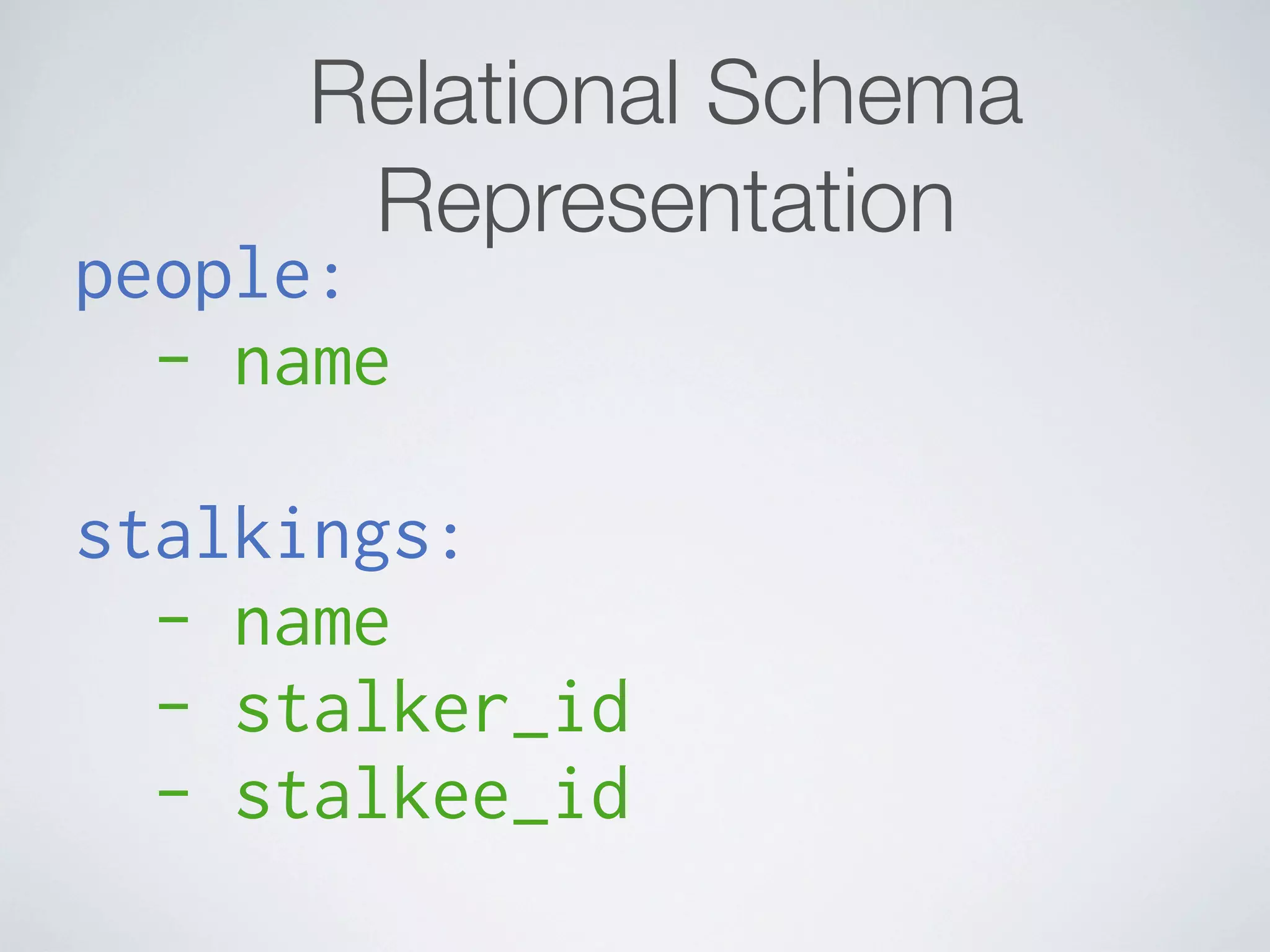
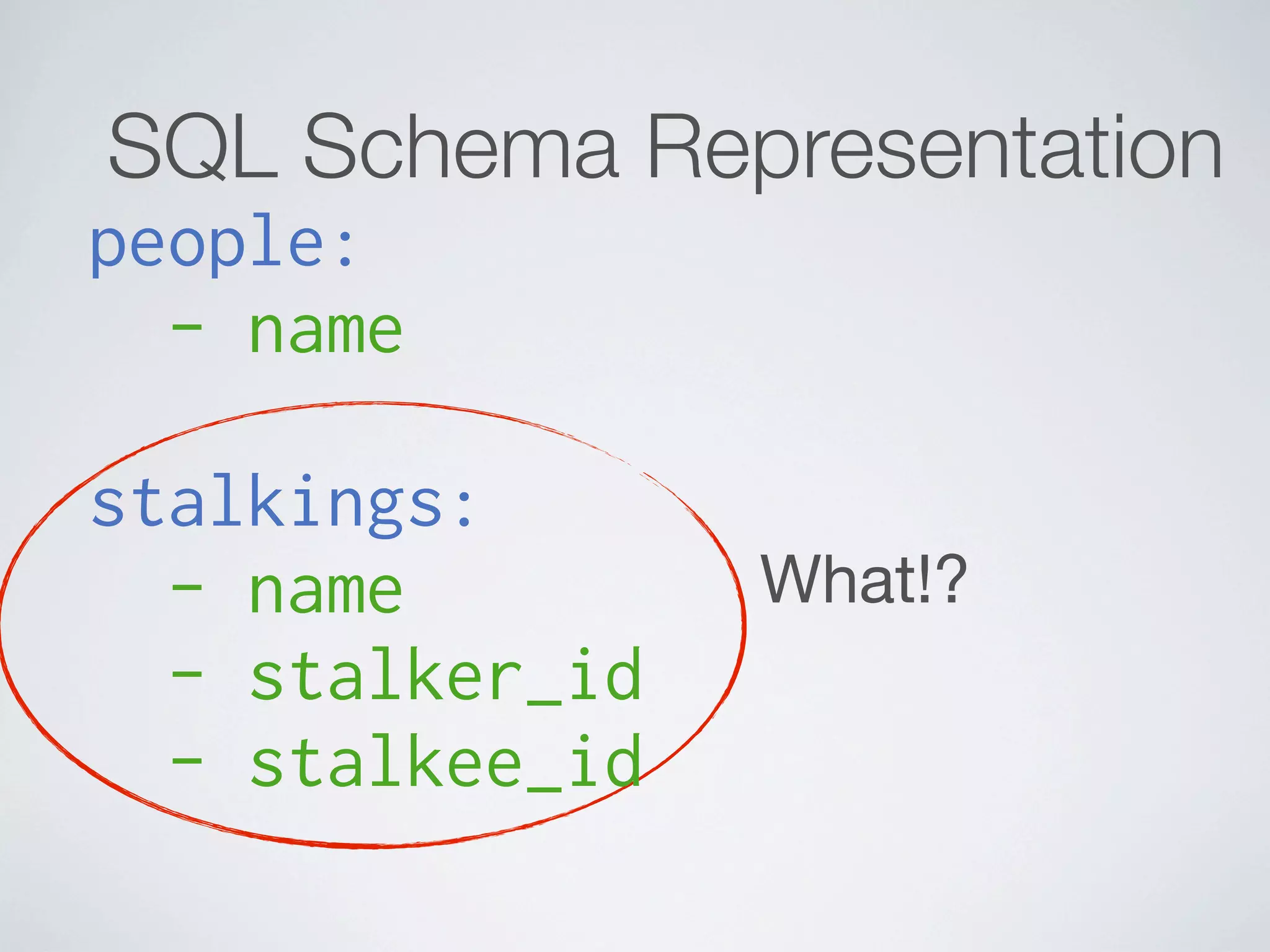
![Ruby -> JSON -> SQL <Person:0x10017d030 @name="alex", @stalkings= Ruby [#<Friend:0x10017d0a8 @name="Jim">, #<Friend:0x10017d058 @name="Bob"> ]> @alex.to_json JSON { name: "alex", stalkings: [{ name: "Jim" }, { name: "Bob" }] } people: - name SQL stalkings: - name - stalker_id - stalkee_id](https://image.slidesharecdn.com/practicalrubyprojectswithmongodb-rubykaigi-100829003551-phpapp02/75/Practical-Ruby-Projects-with-MongoDB-Ruby-Kaigi-2010-28-2048.jpg)
![Ruby -> JSON -> SQL <Person:0x10017d030 @name="alex", @stalkings= Ruby [#<Friend:0x10017d0a8 @name="Jim">, #<Friend:0x10017d058 @name="Bob"> ]> @alex.to_json JSON { name: "alex", stalkings: [{ name: "Jim" }, { name: "Bob" }] } people: - name Feels like we’re working SQL stalkings: too hard here - name - stalker_id - stalkee_id](https://image.slidesharecdn.com/practicalrubyprojectswithmongodb-rubykaigi-100829003551-phpapp02/75/Practical-Ruby-Projects-with-MongoDB-Ruby-Kaigi-2010-29-2048.jpg)




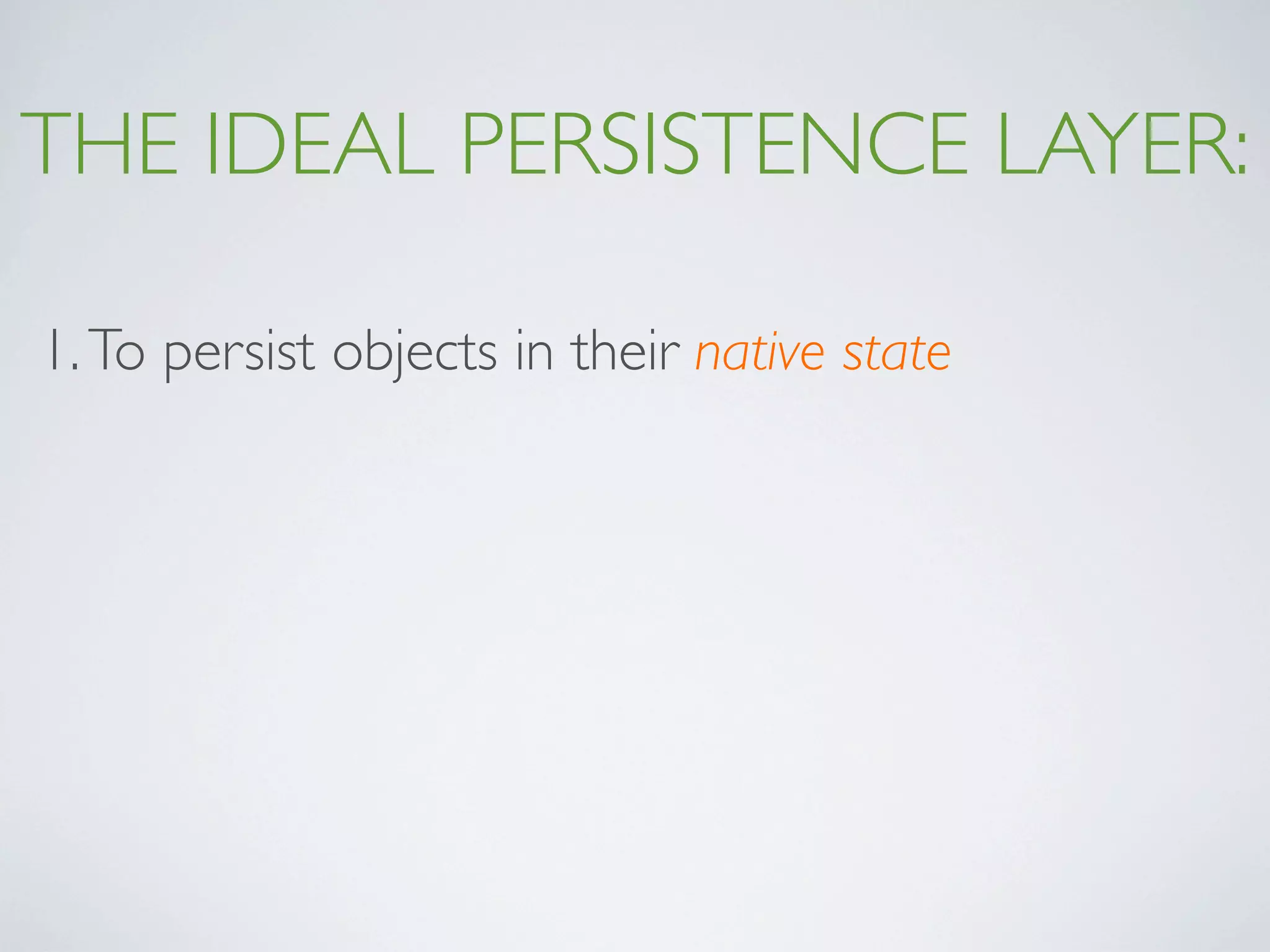
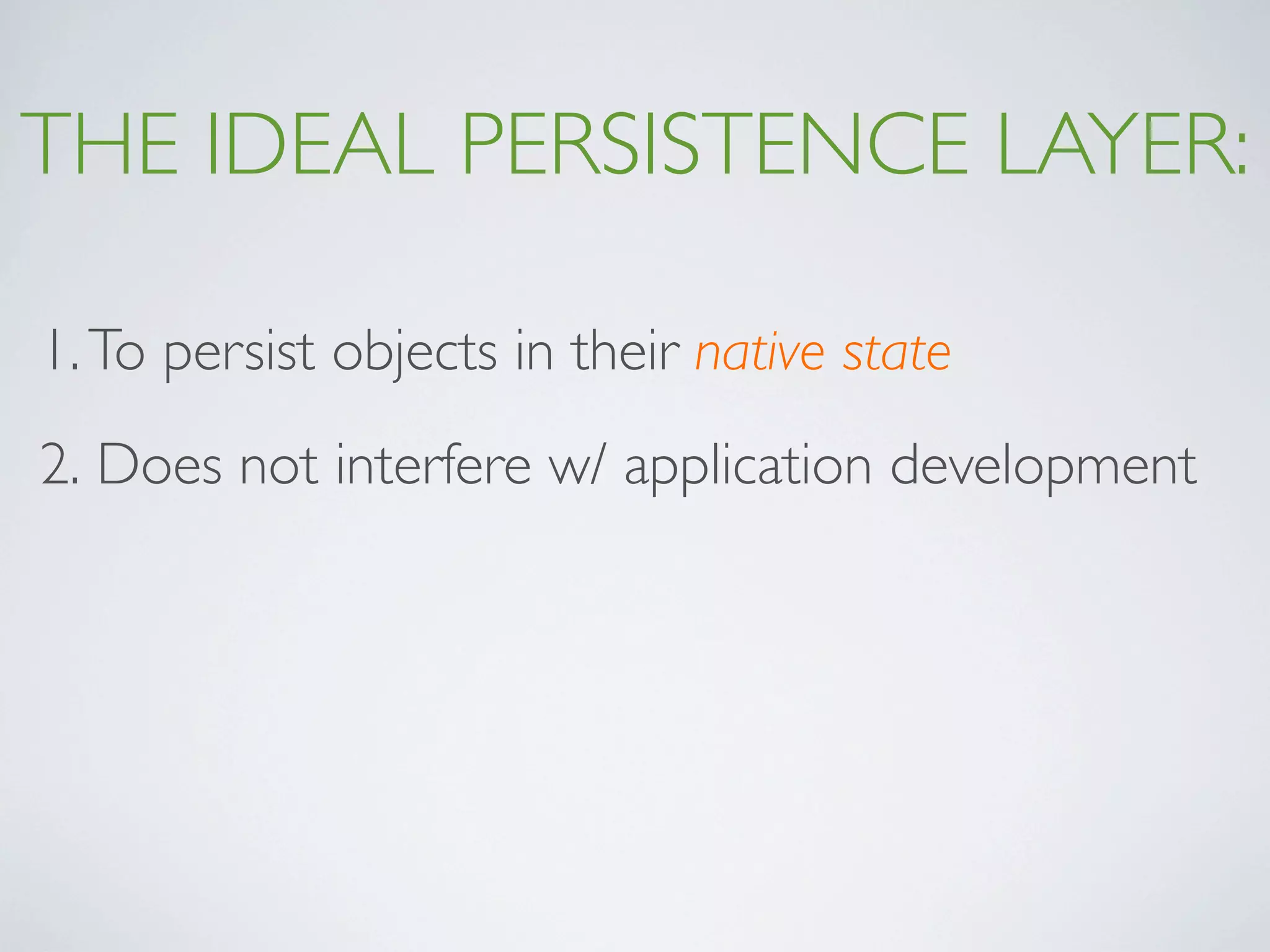
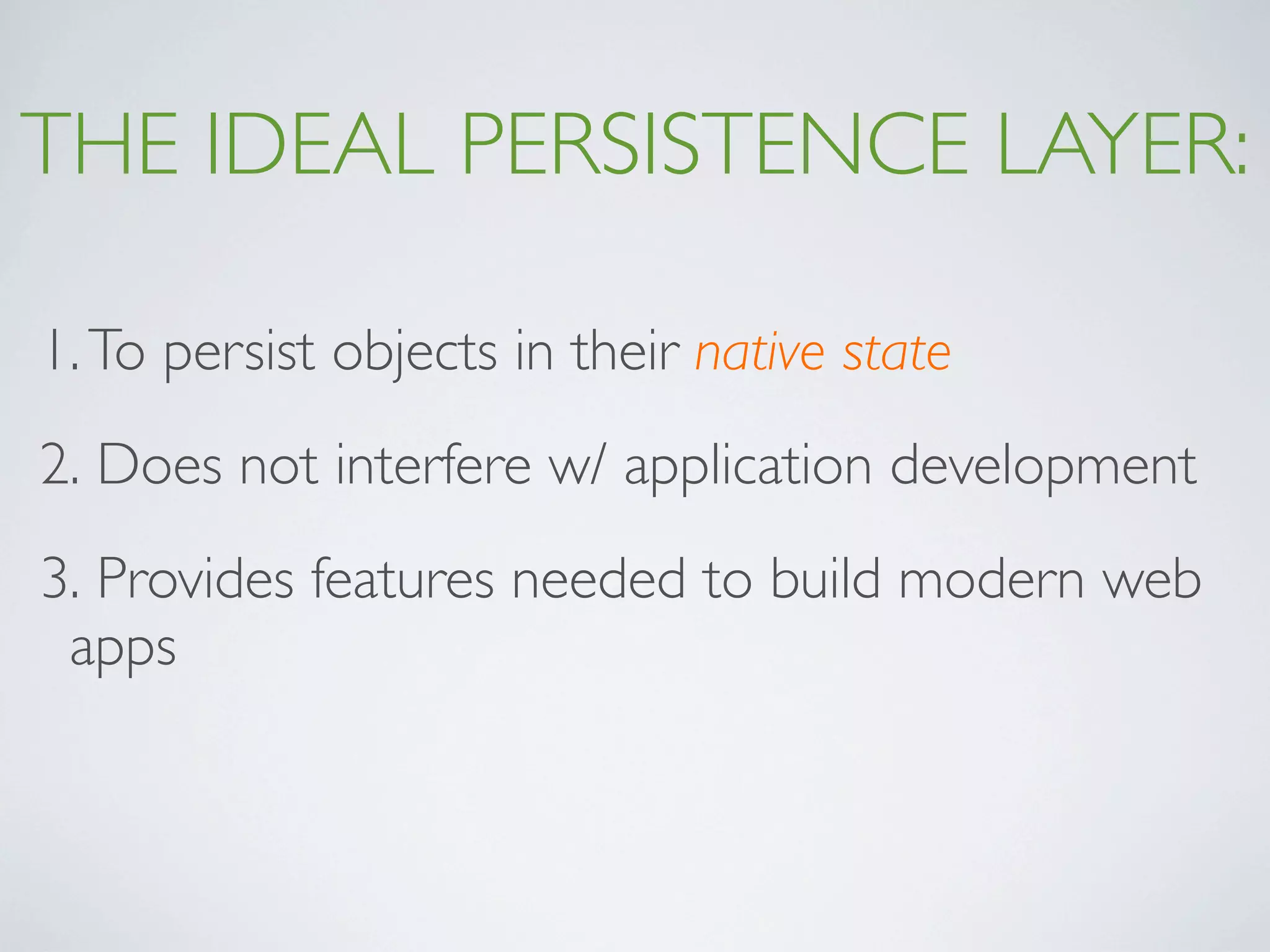

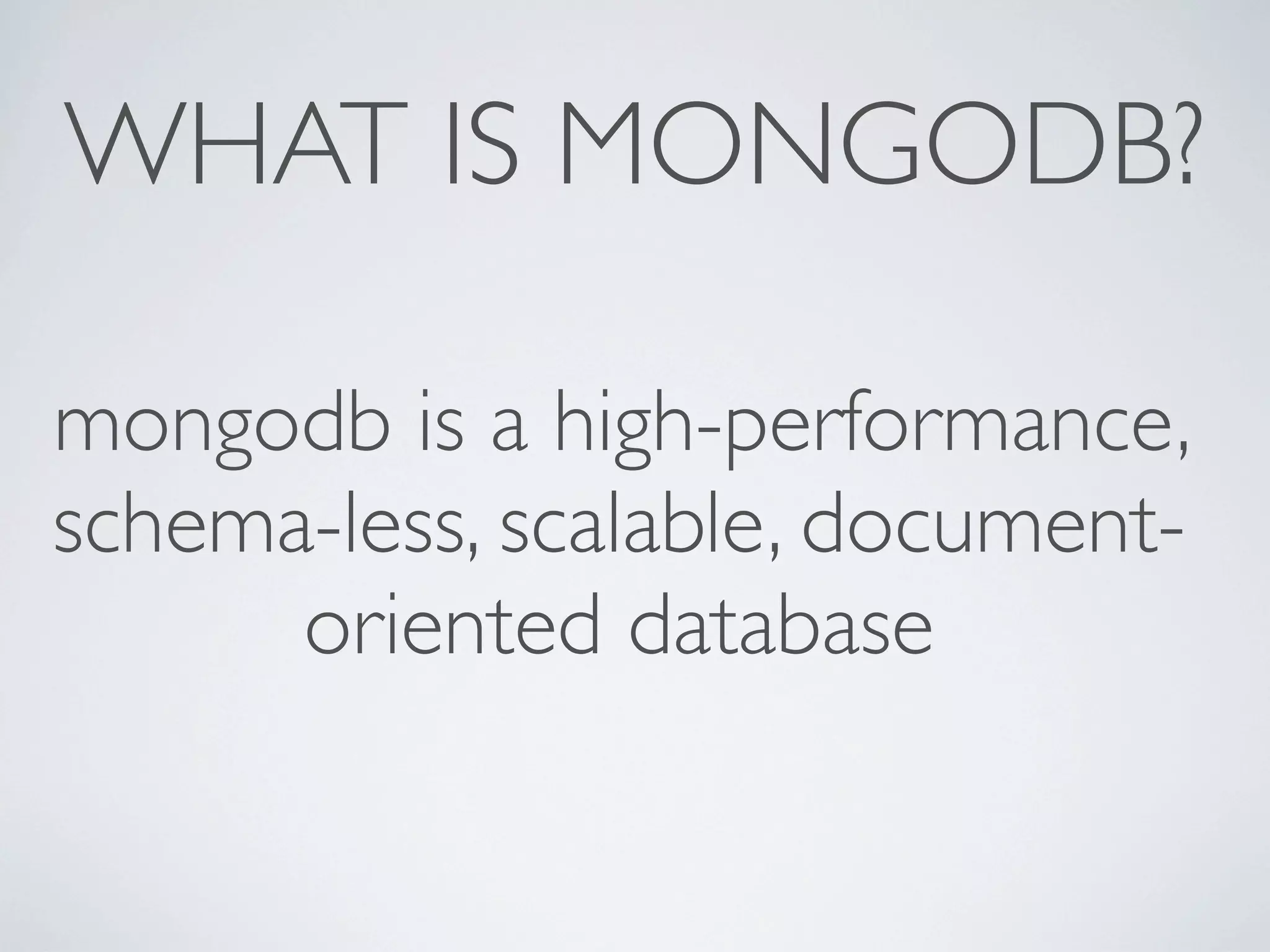



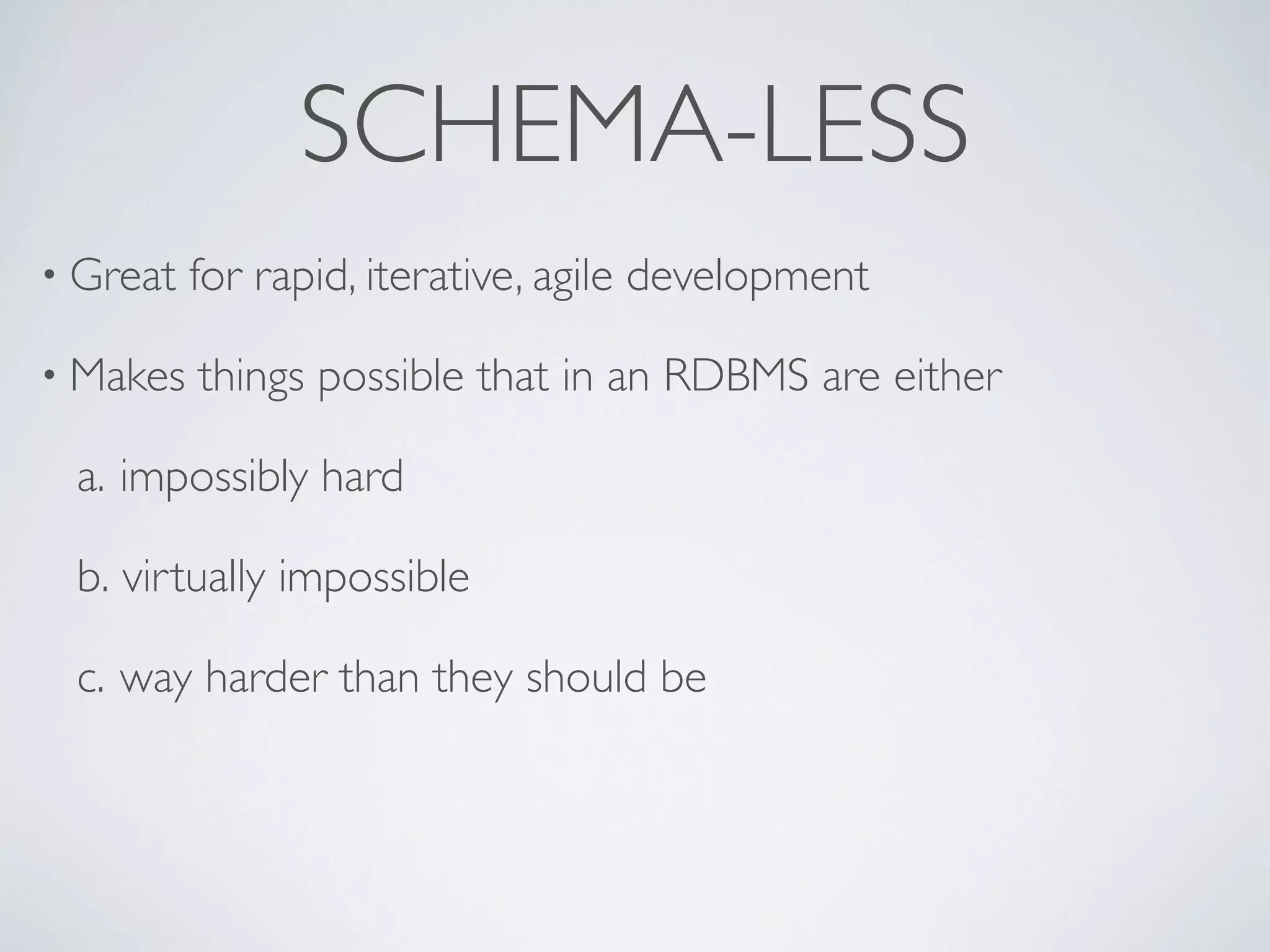
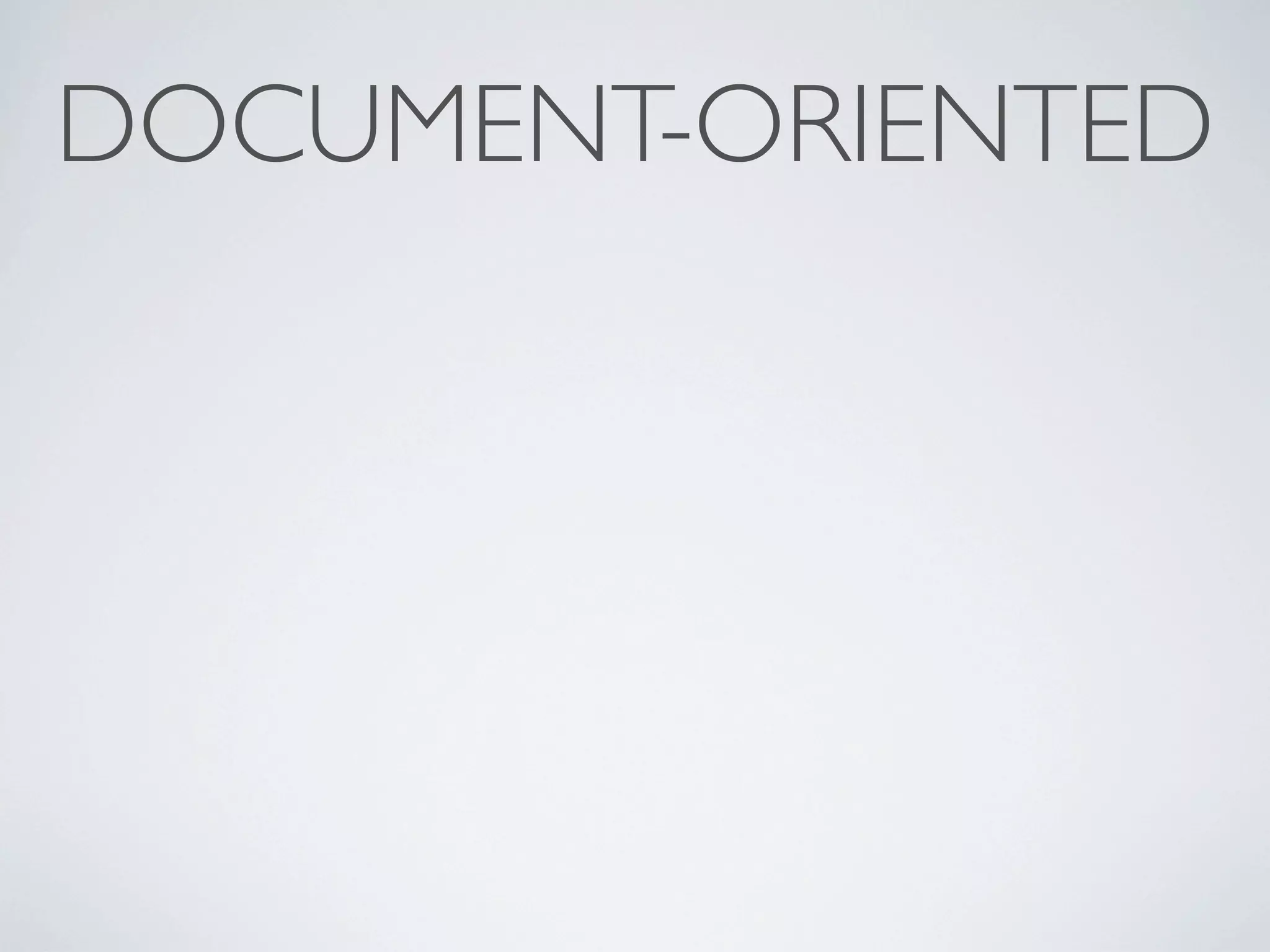
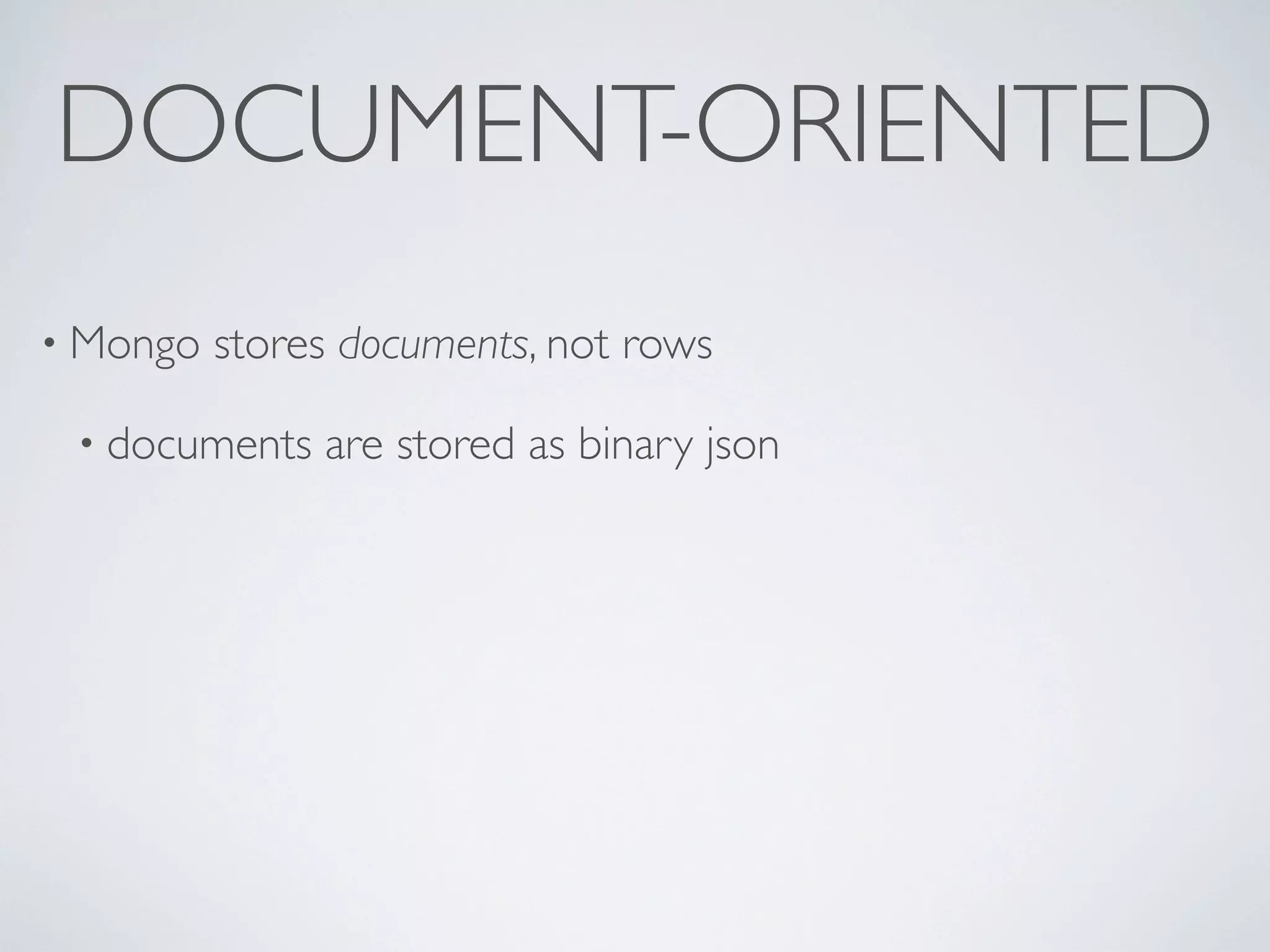
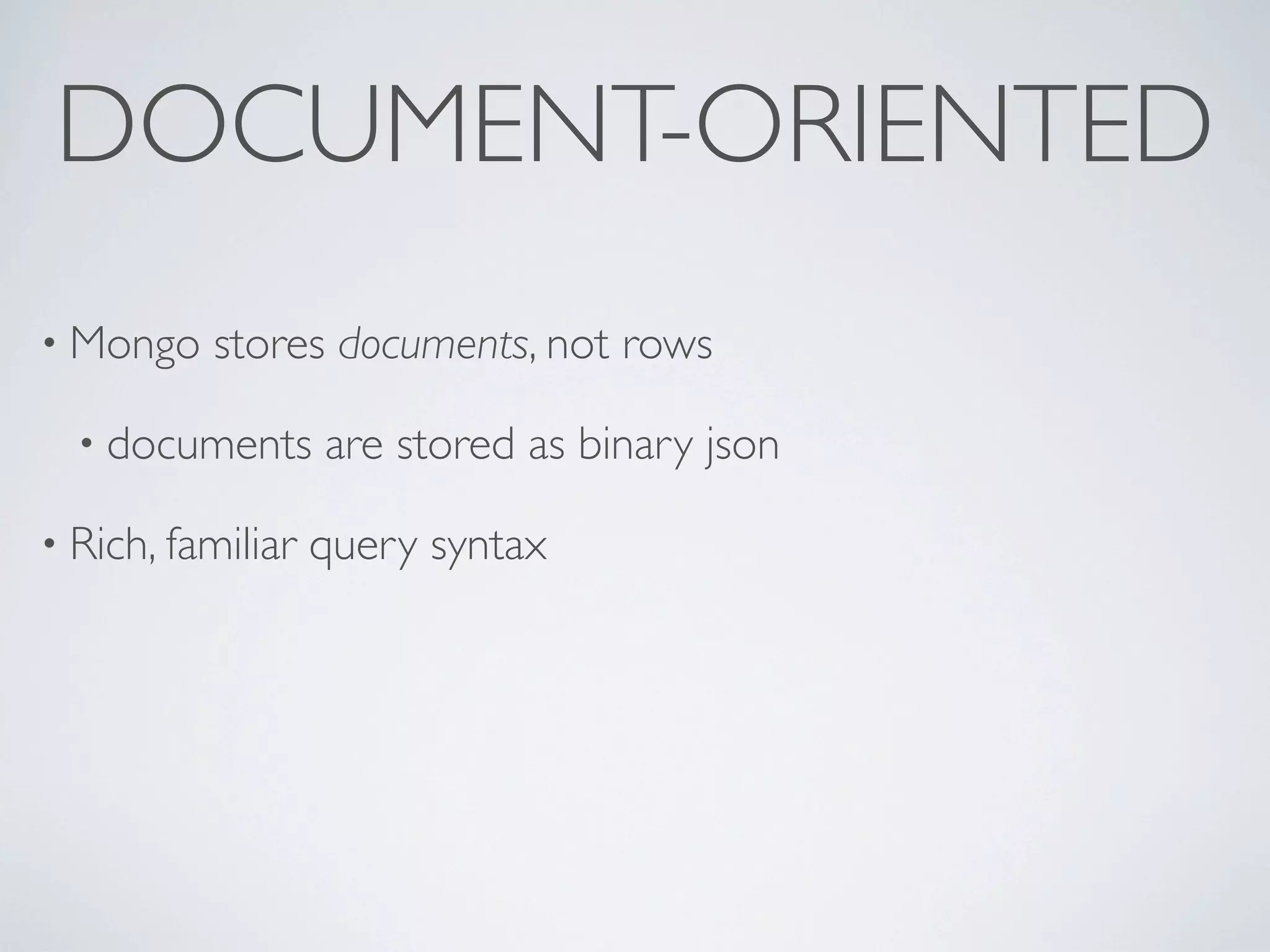
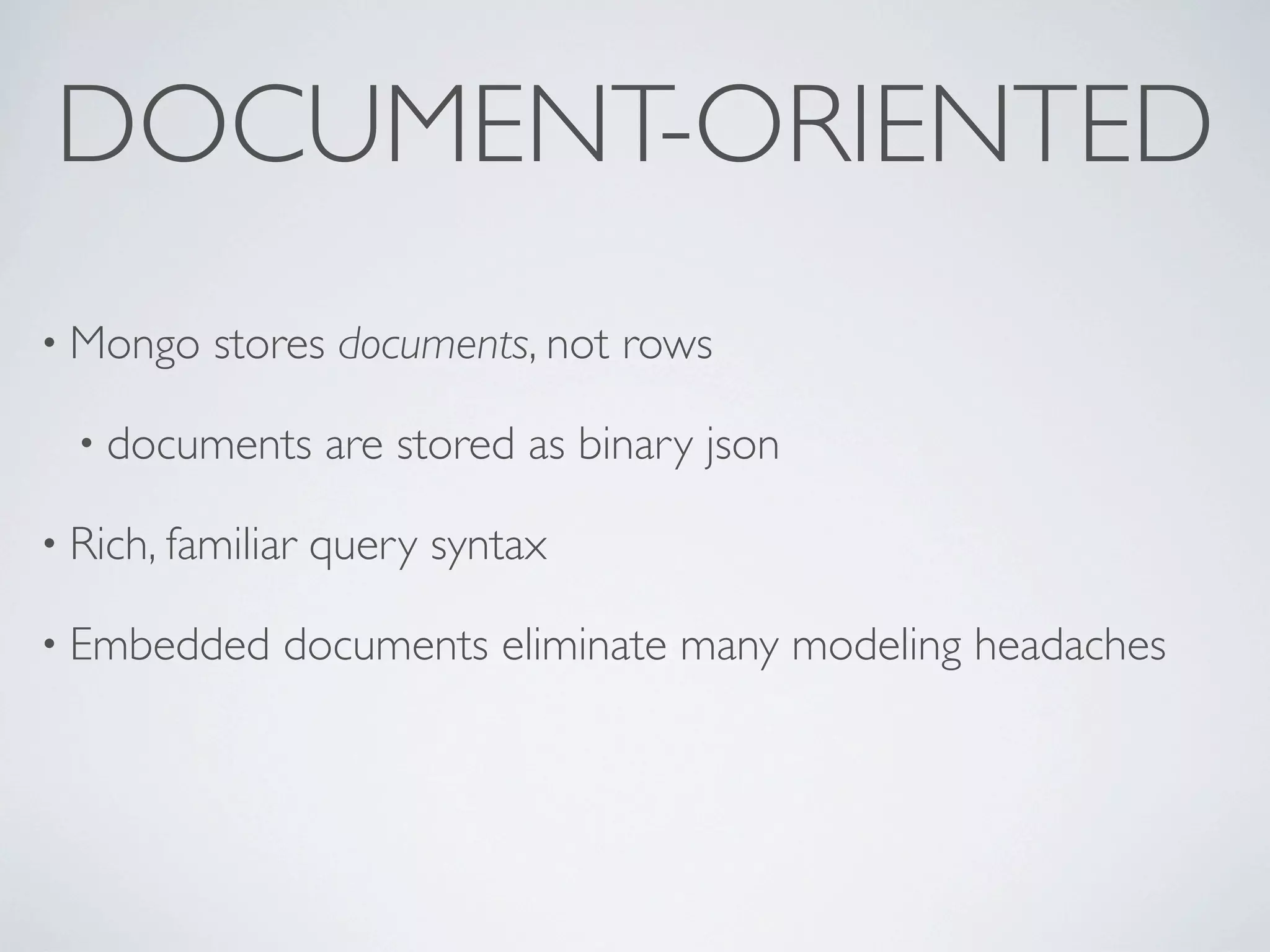
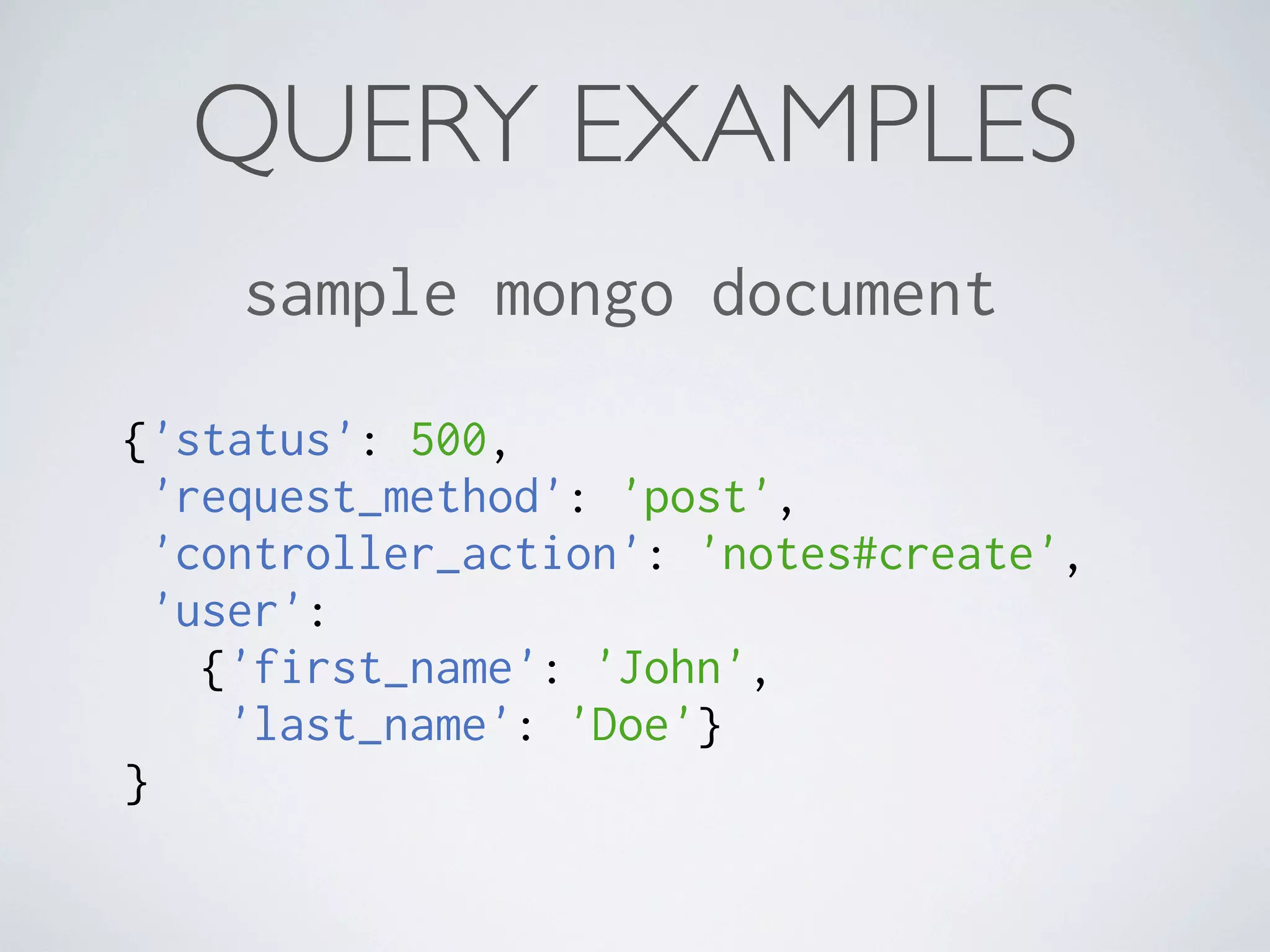
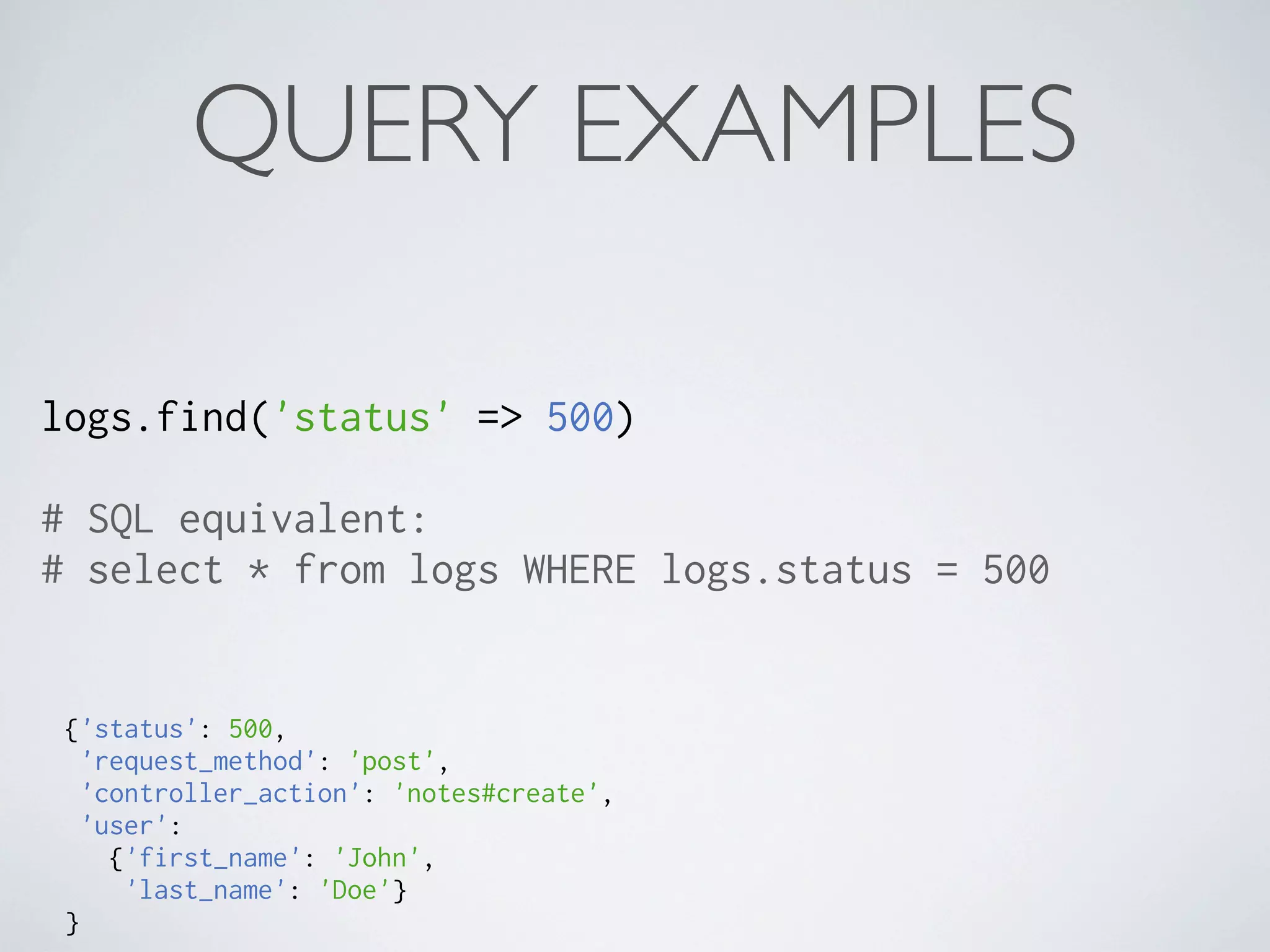
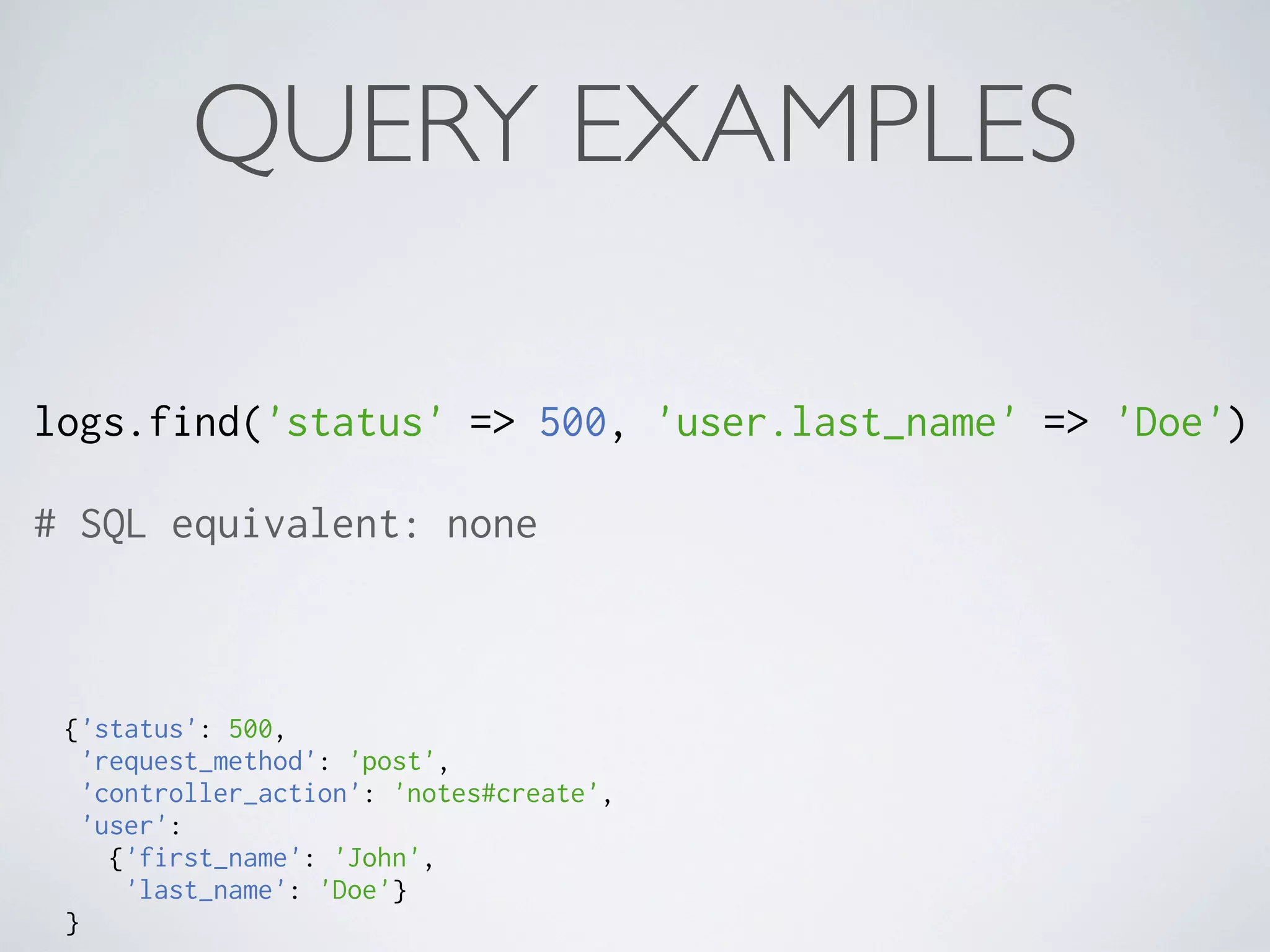
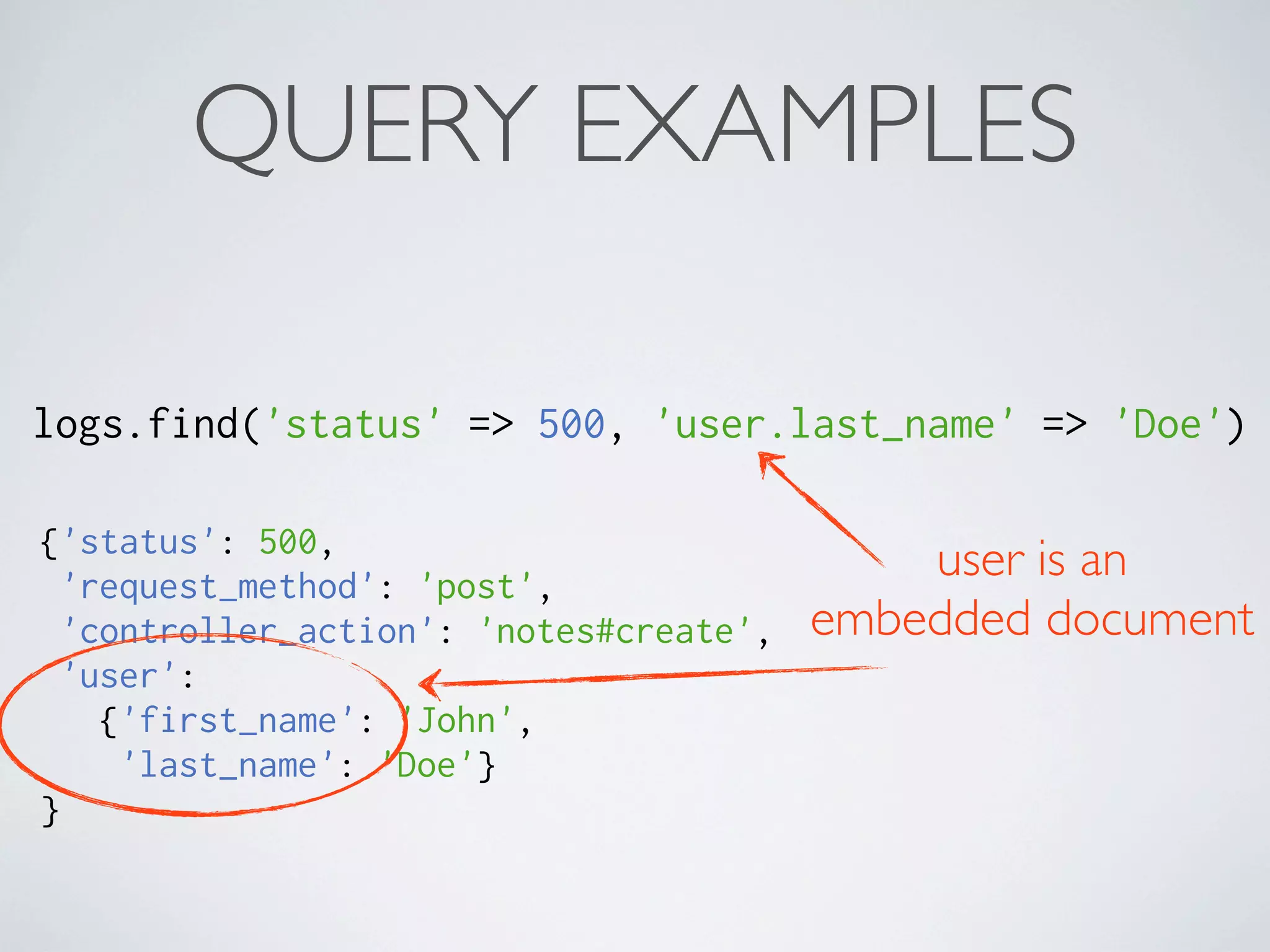
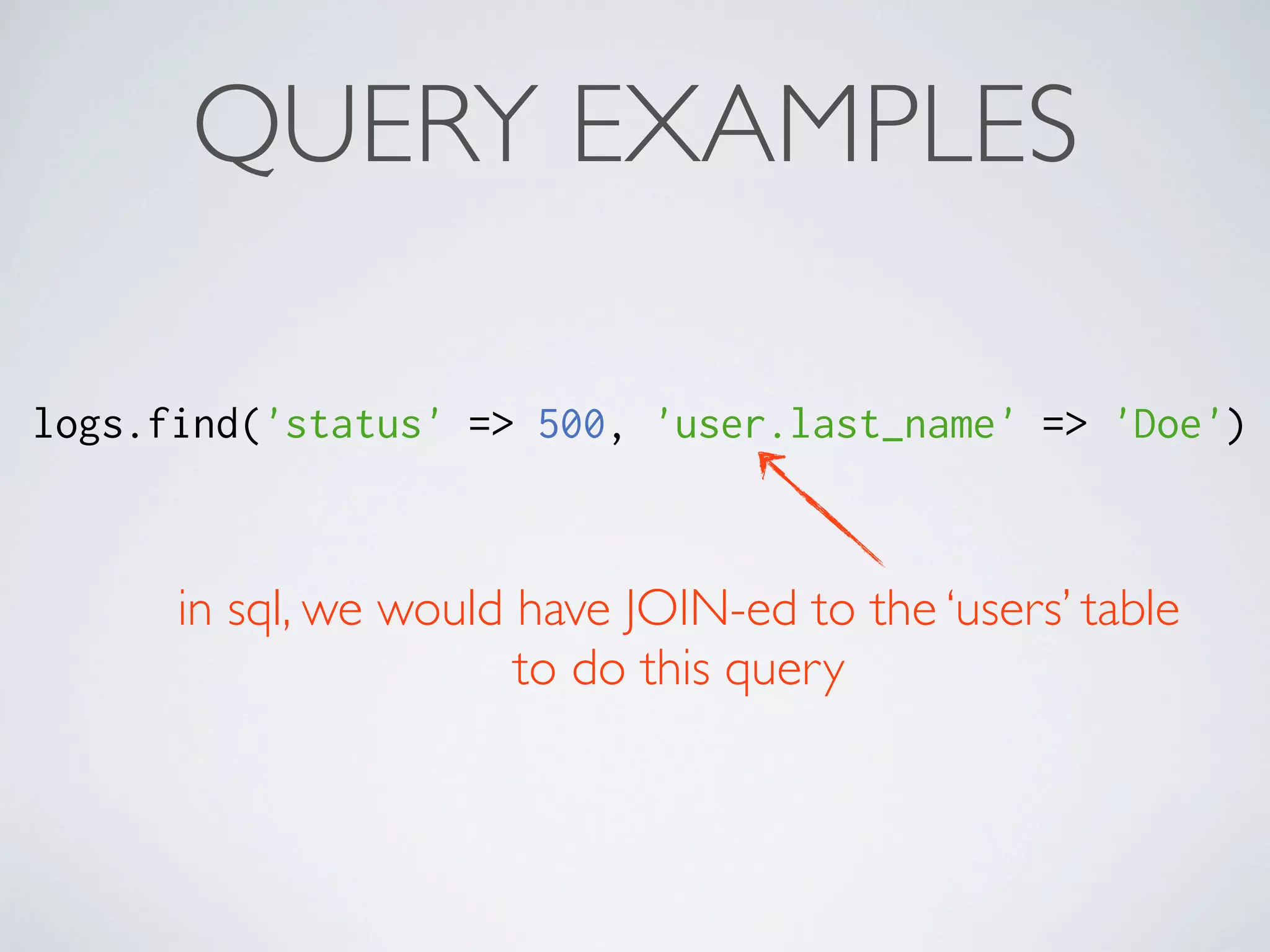
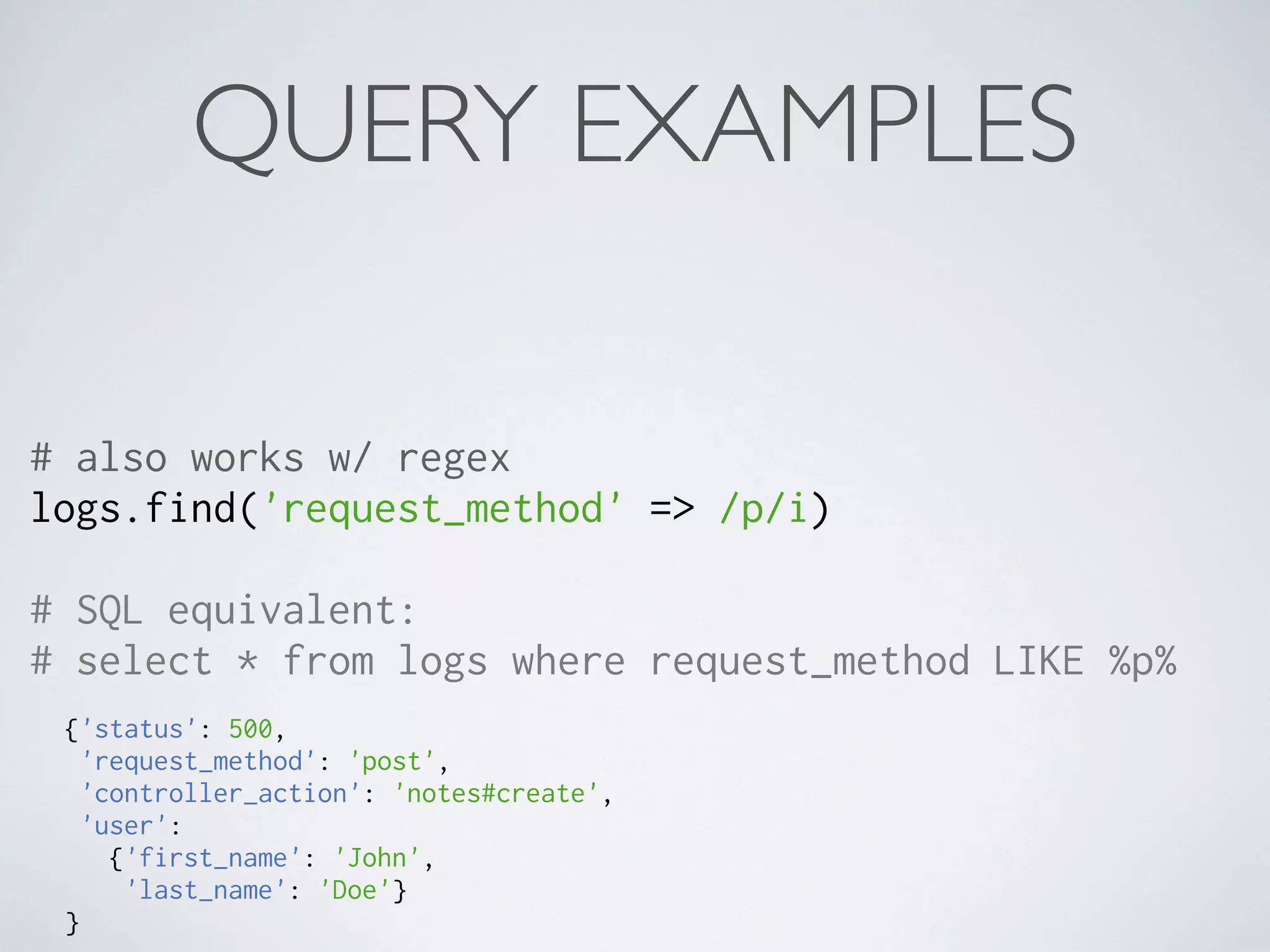

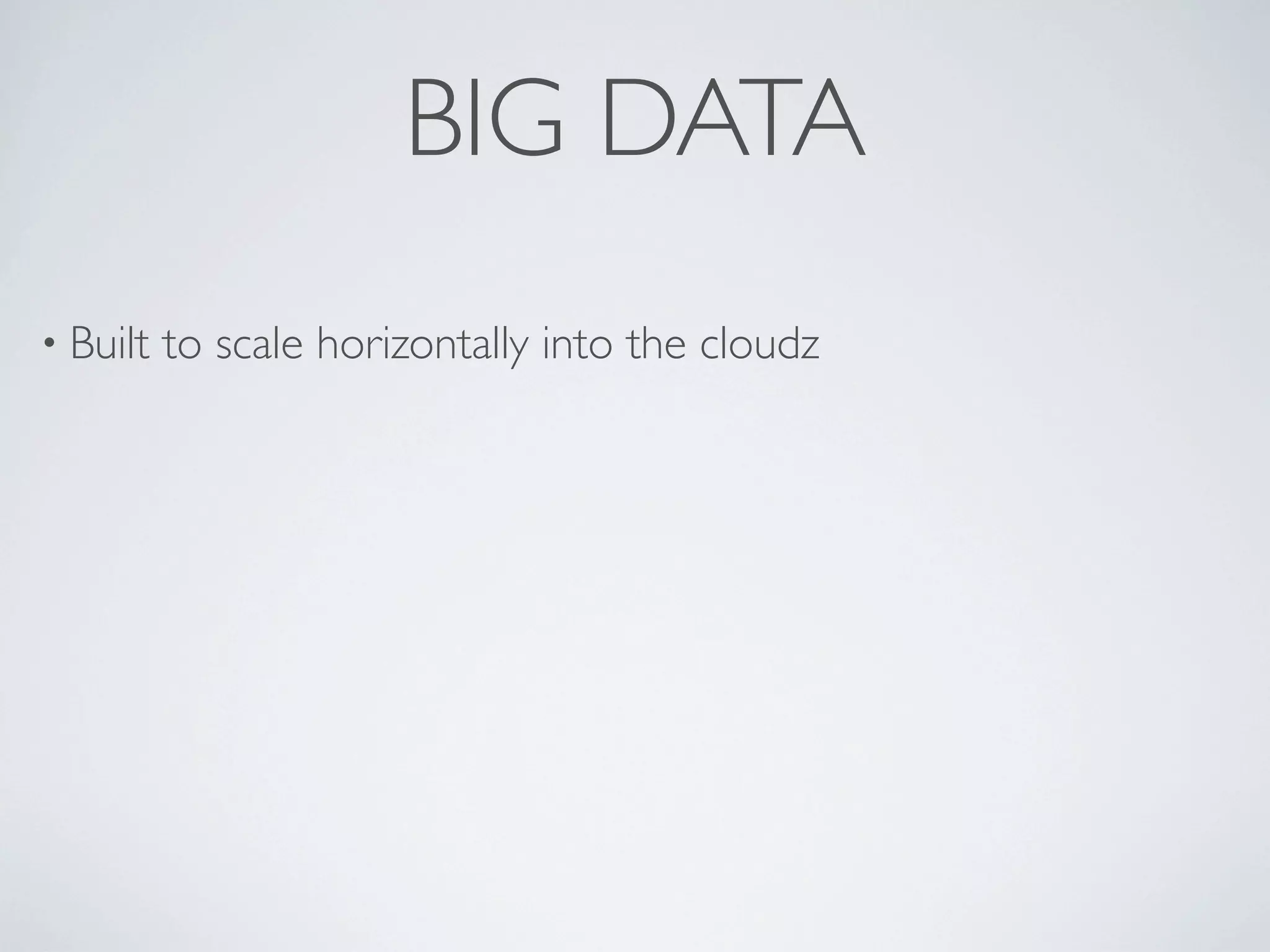
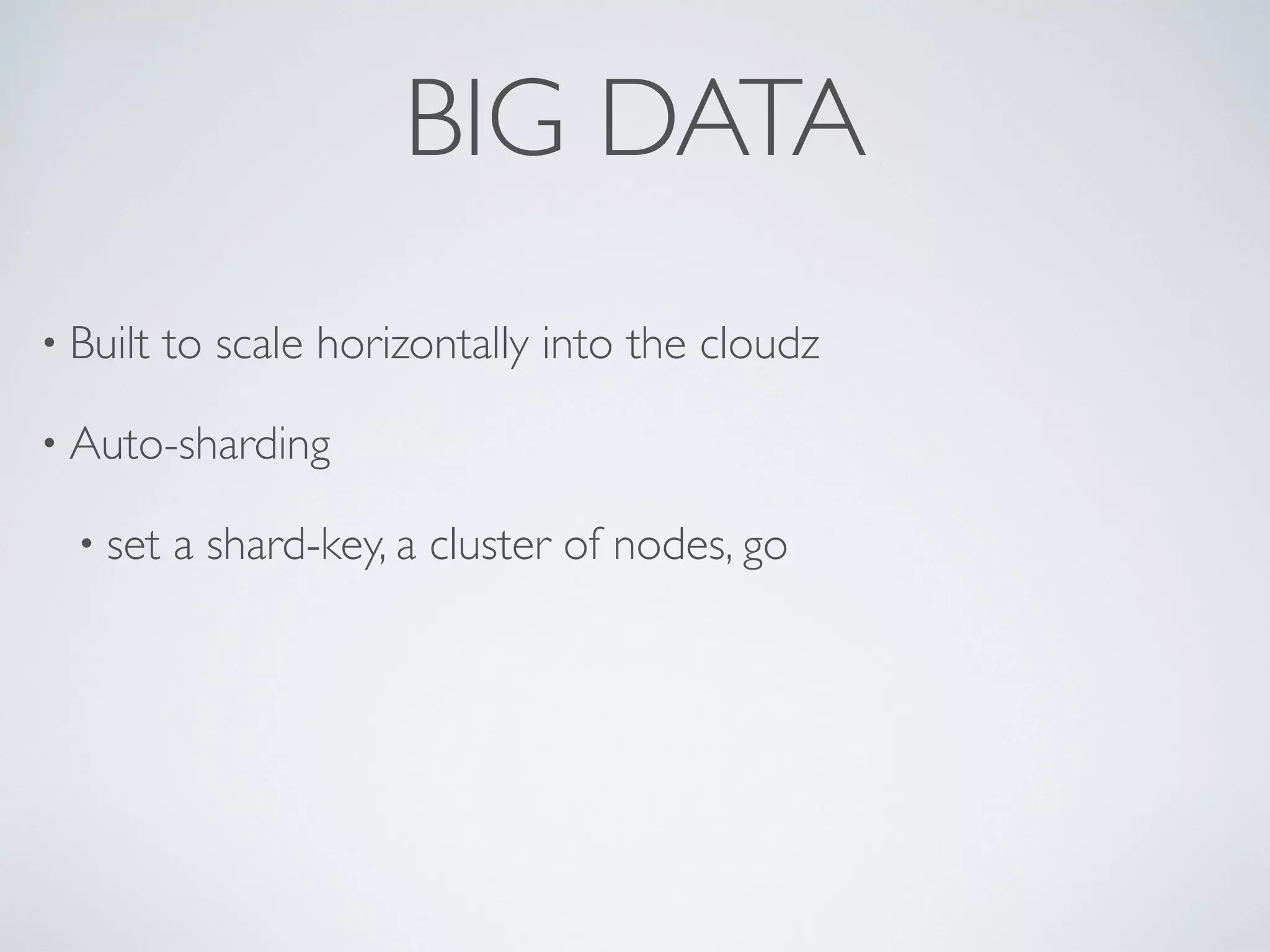
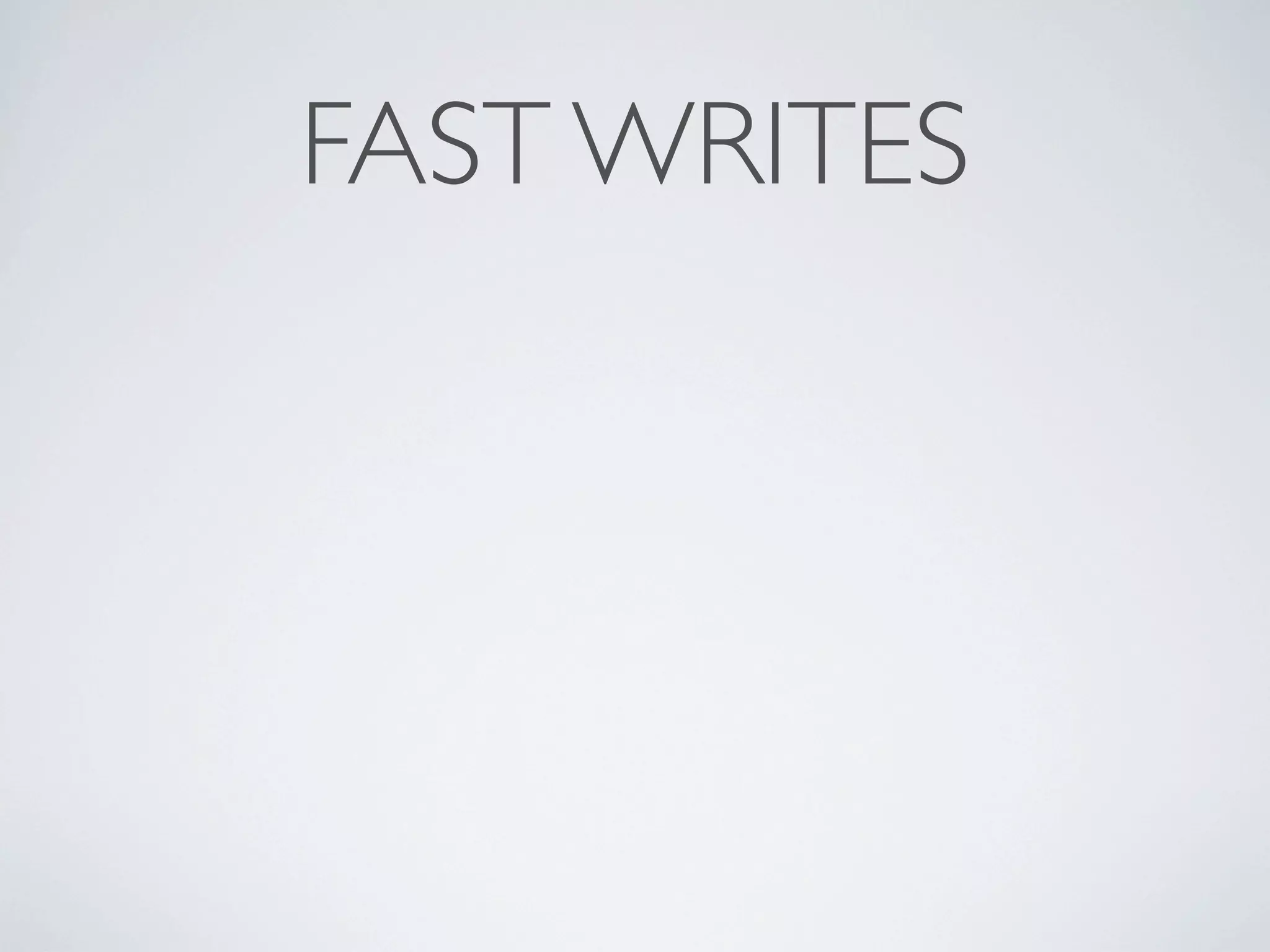
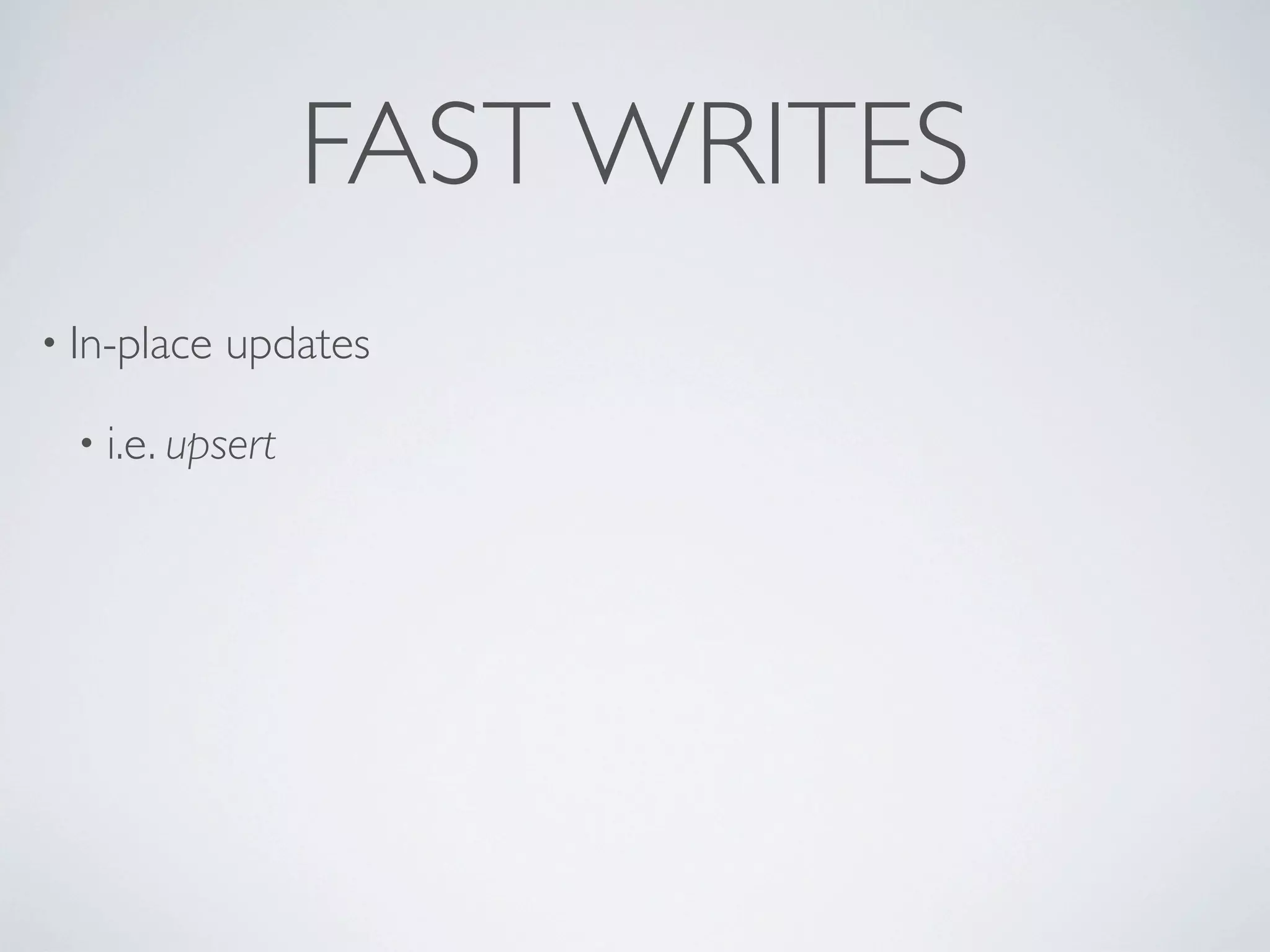
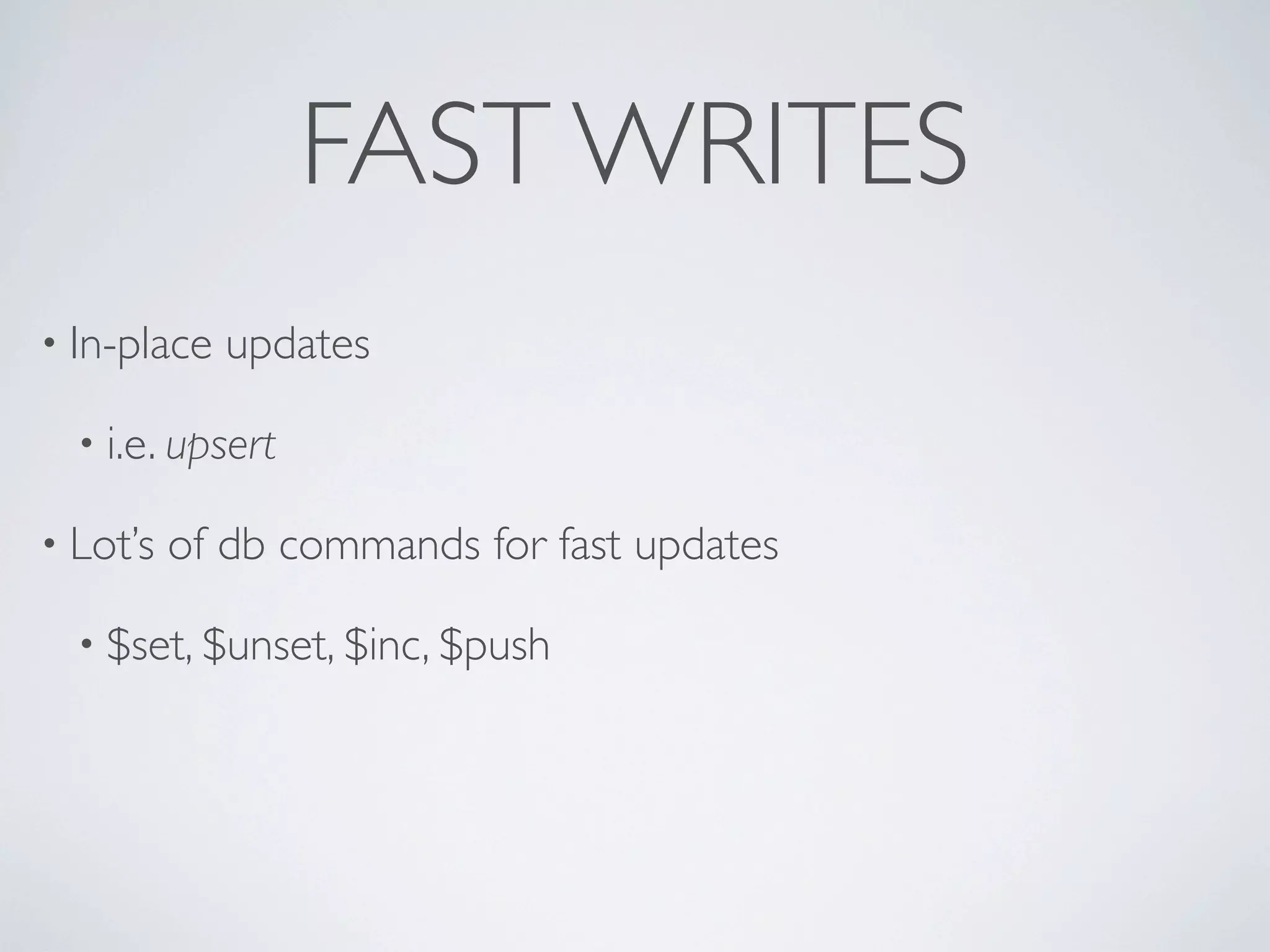
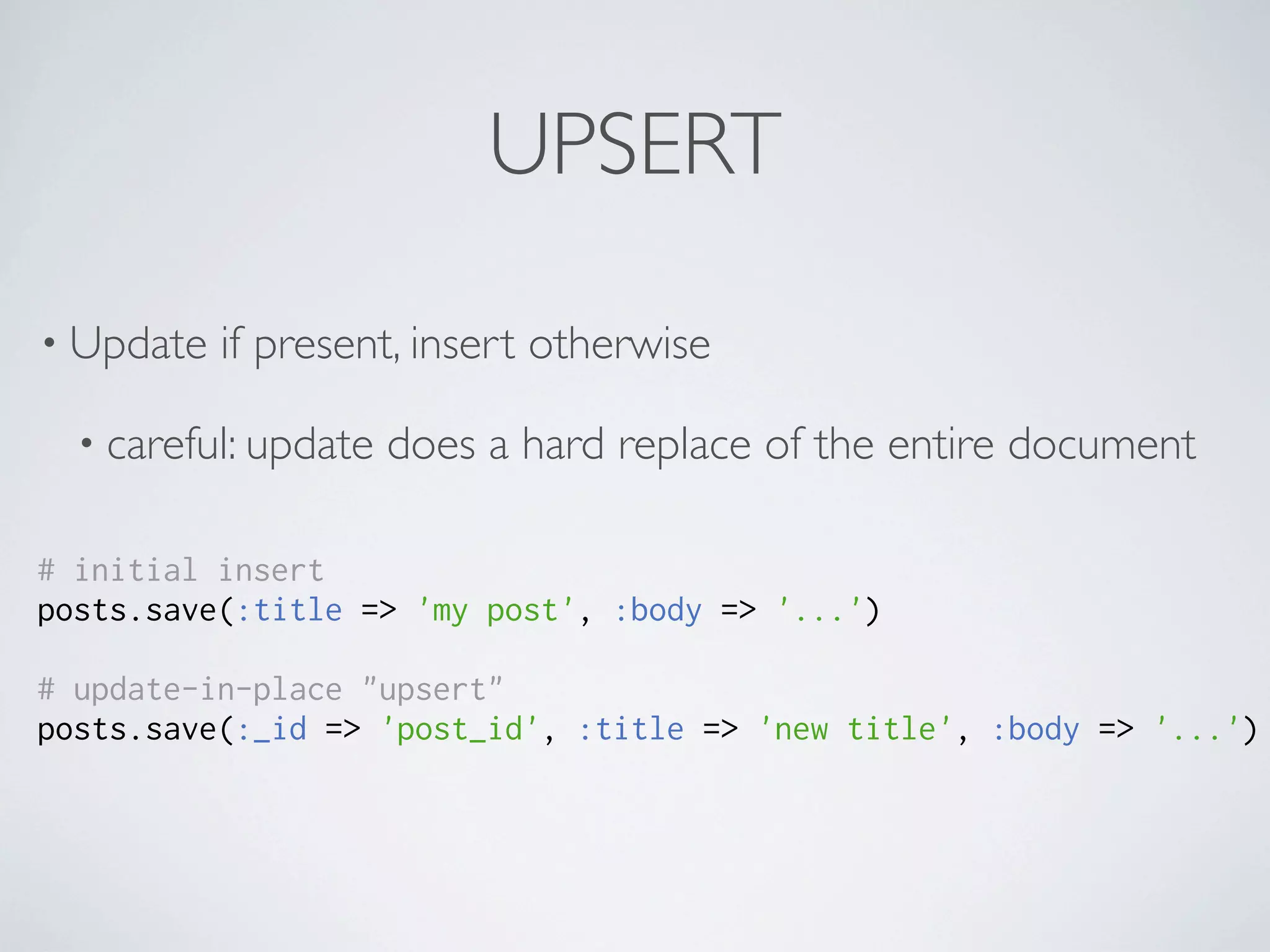
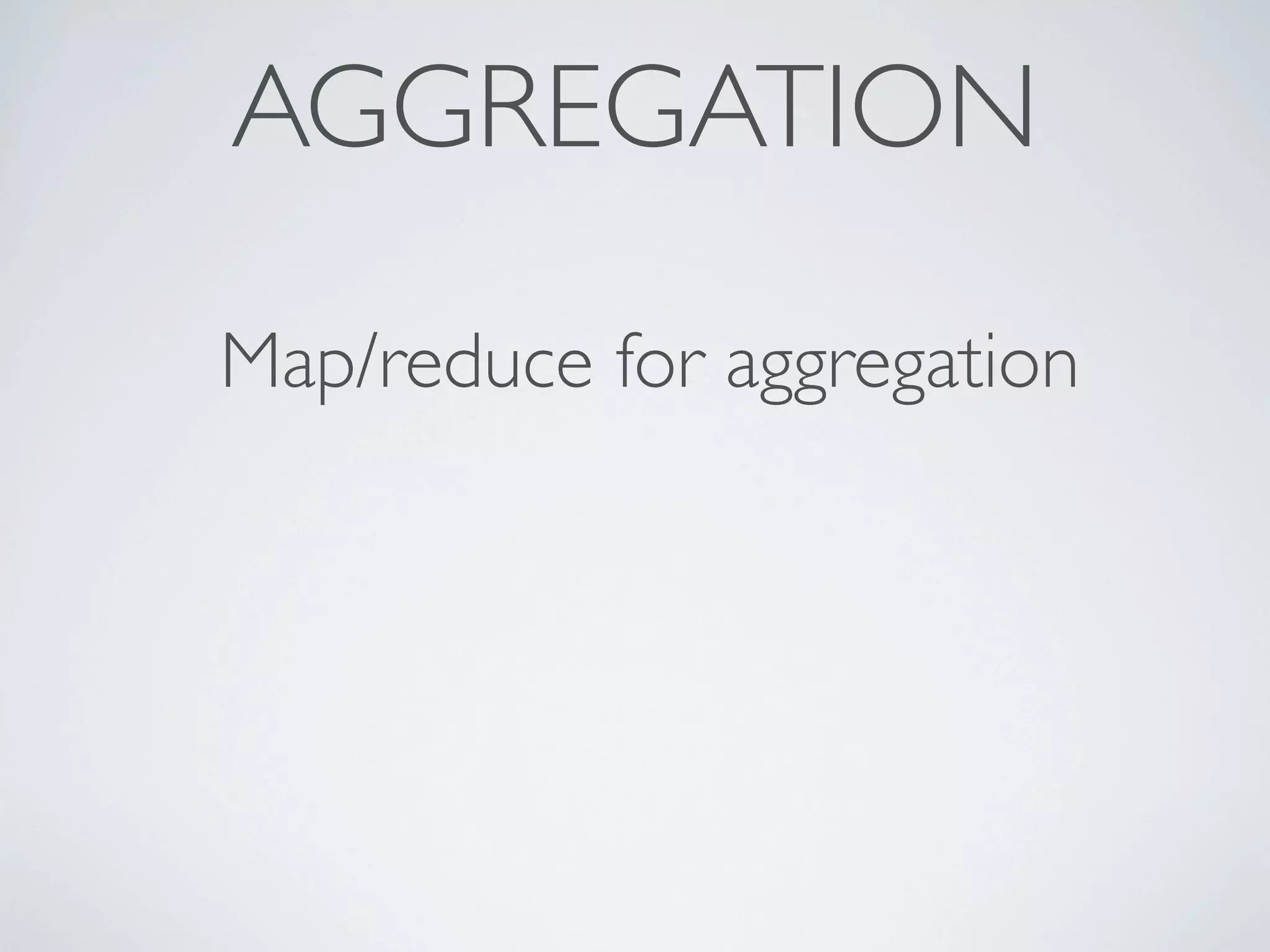
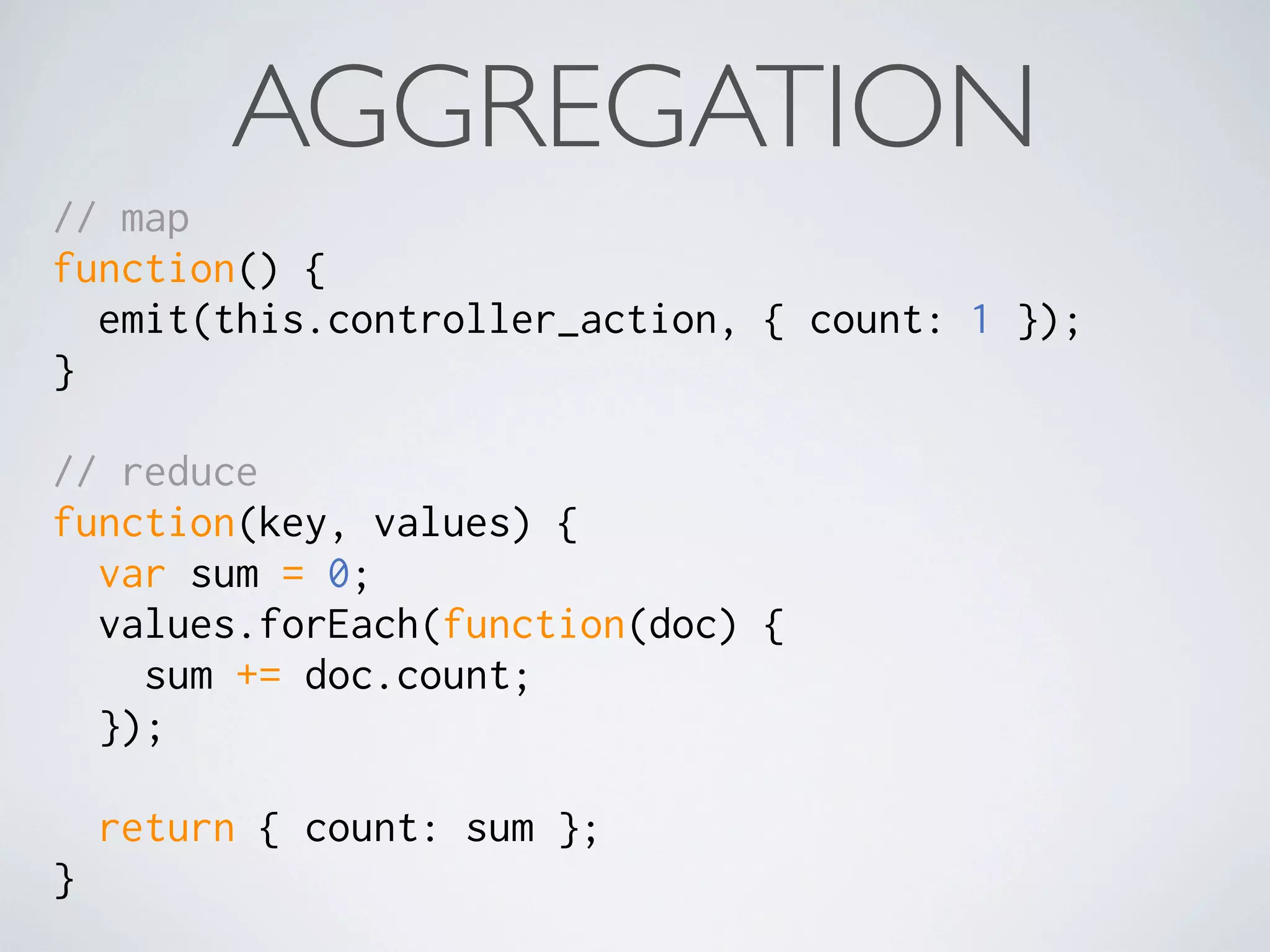
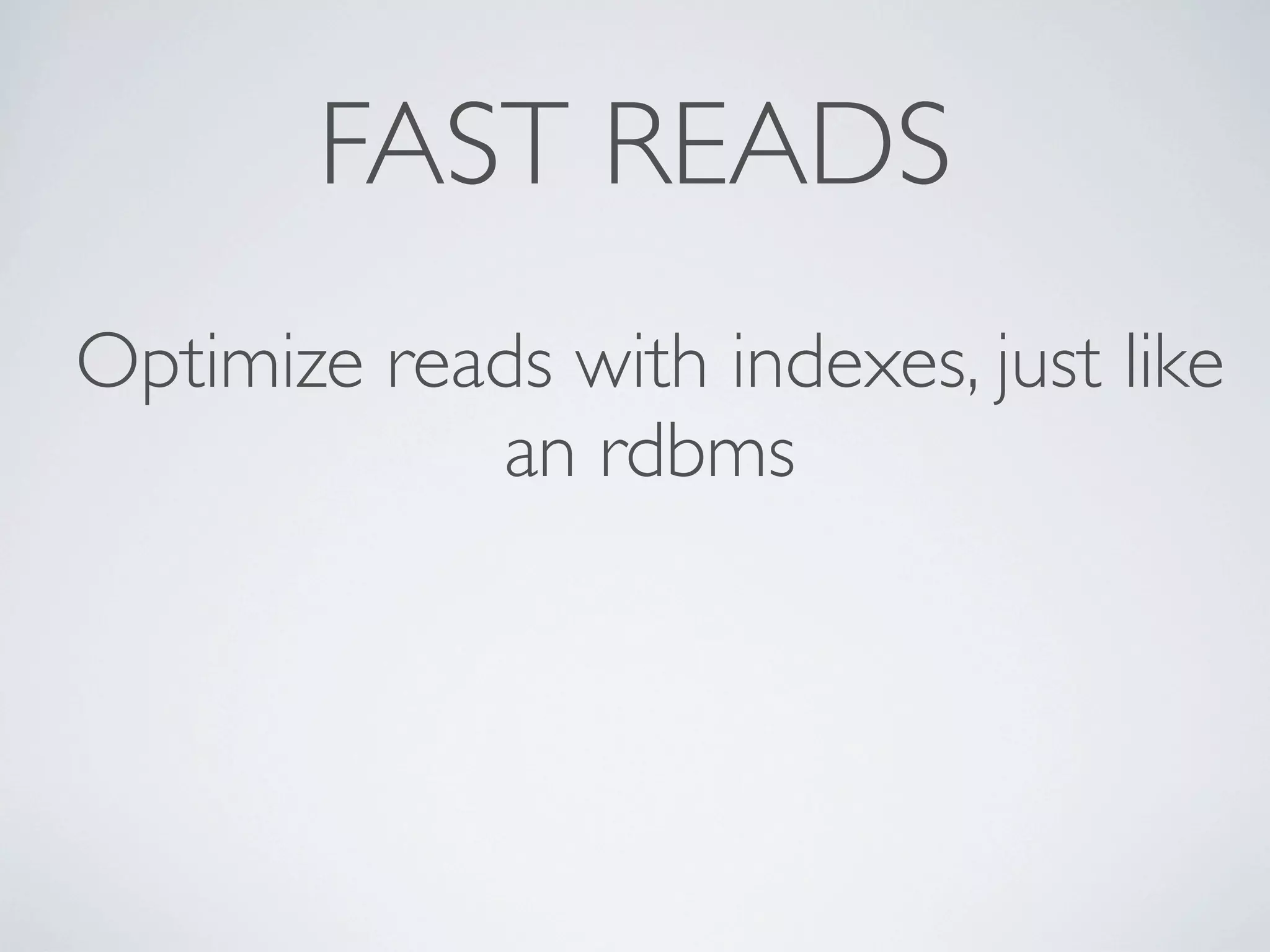
![# index is only created if it does not exist logs.create_index('status') # can index on embedded documents logs.create_index('user.first_name') # create compound indexes logs.create_index( [['user.first_name', 1], ['user.last_name', 1]] )](https://image.slidesharecdn.com/practicalrubyprojectswithmongodb-rubykaigi-100829003551-phpapp02/75/Practical-Ruby-Projects-with-MongoDB-Ruby-Kaigi-2010-63-2048.jpg)


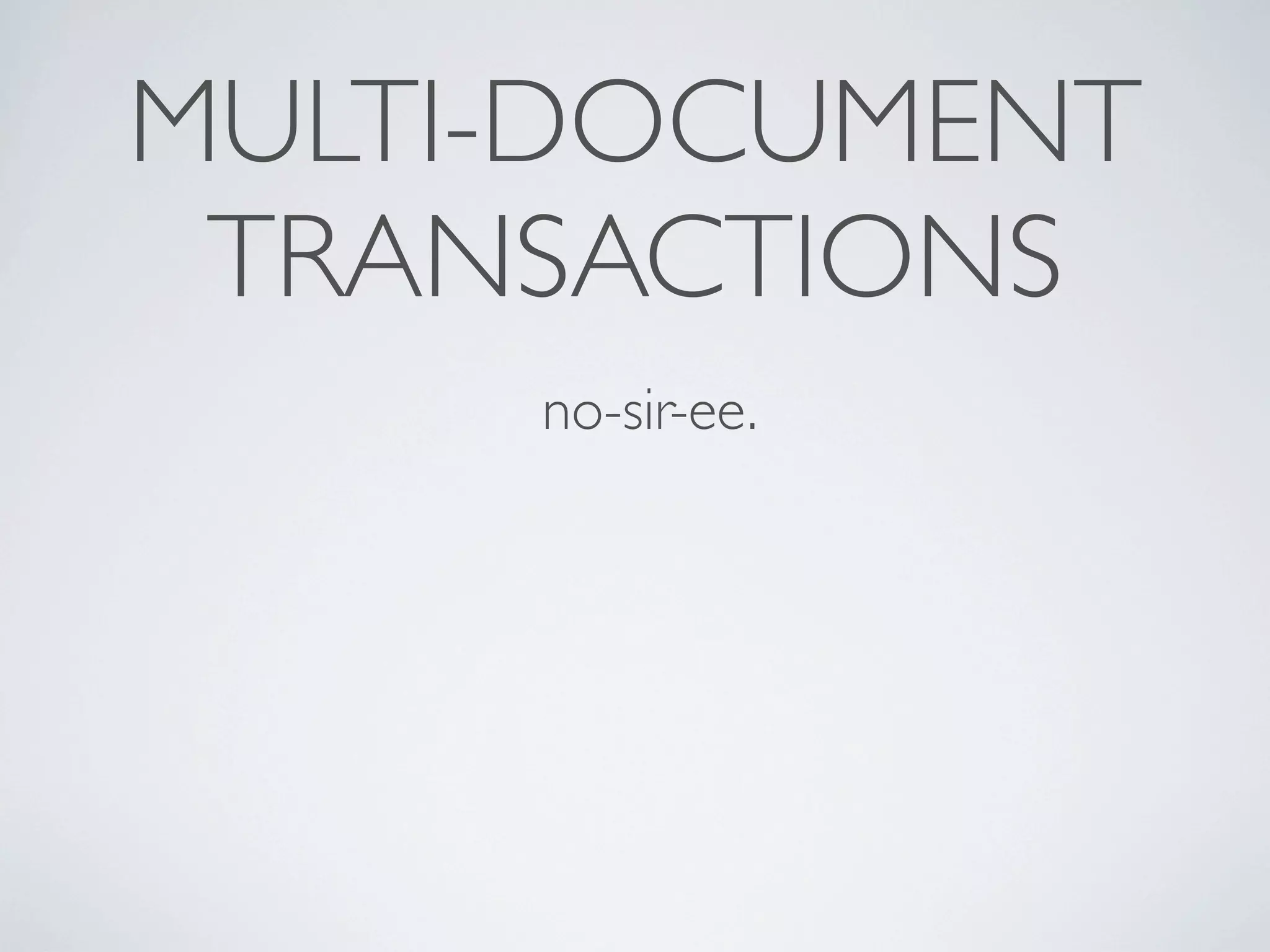


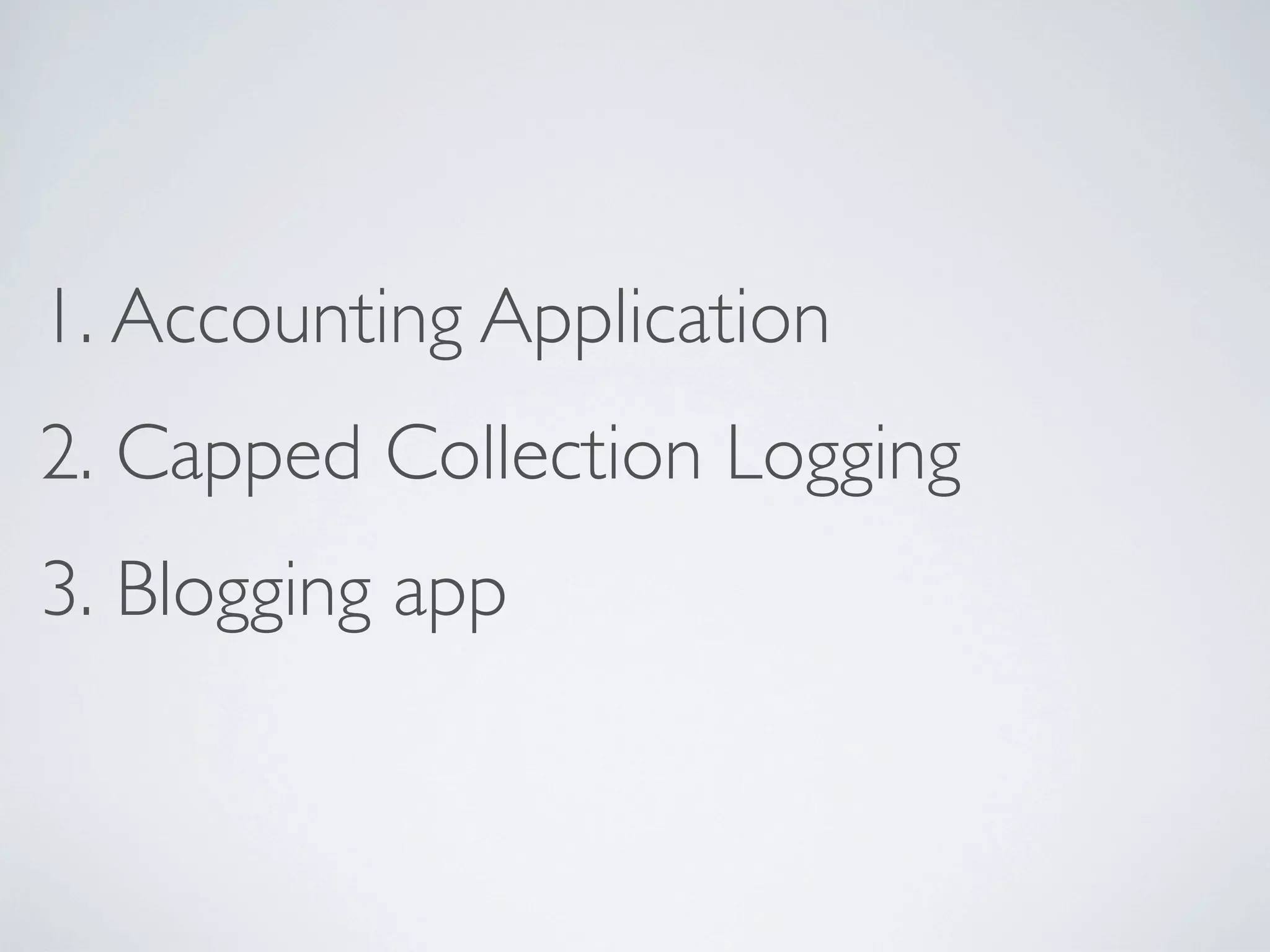

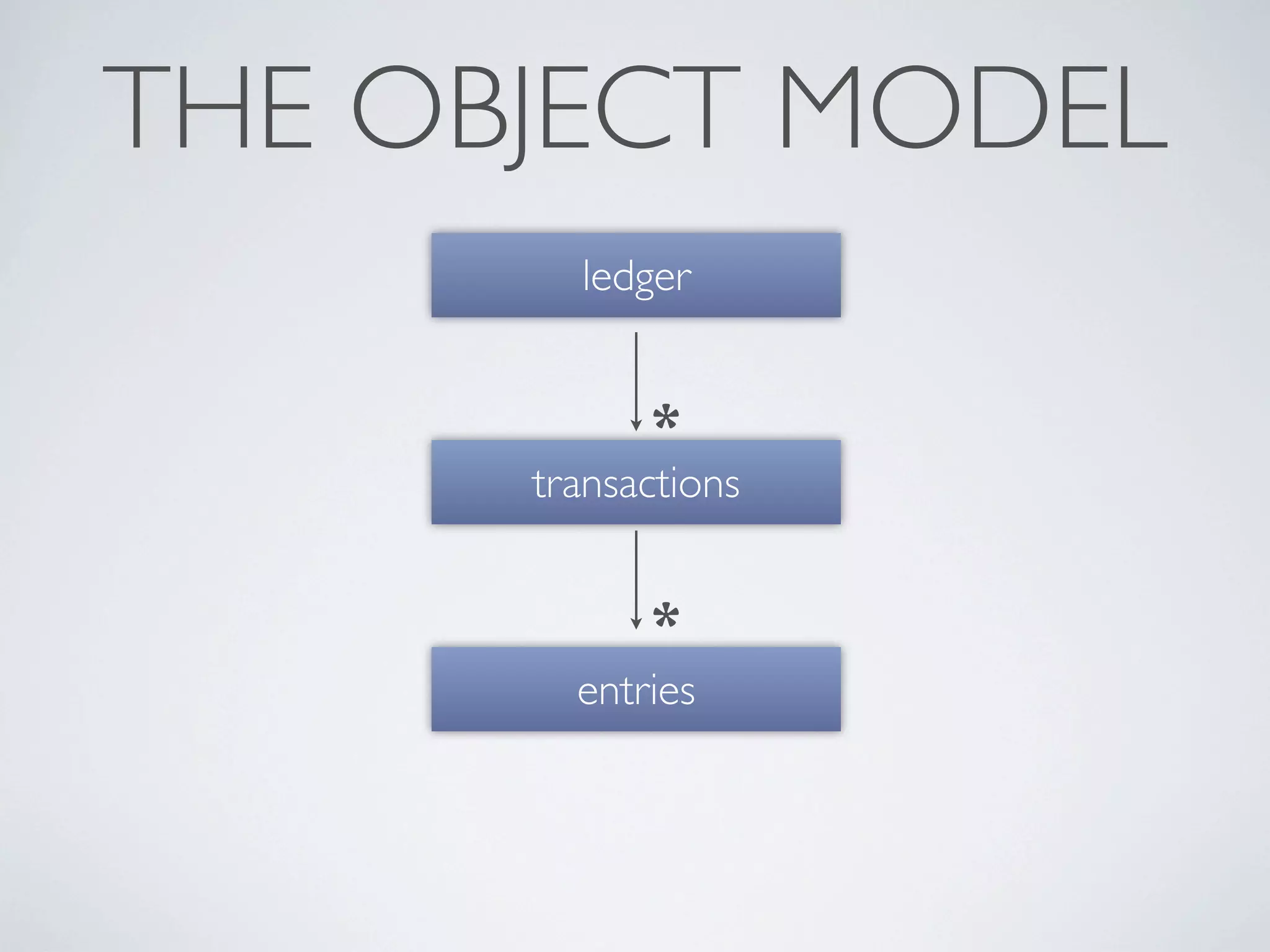
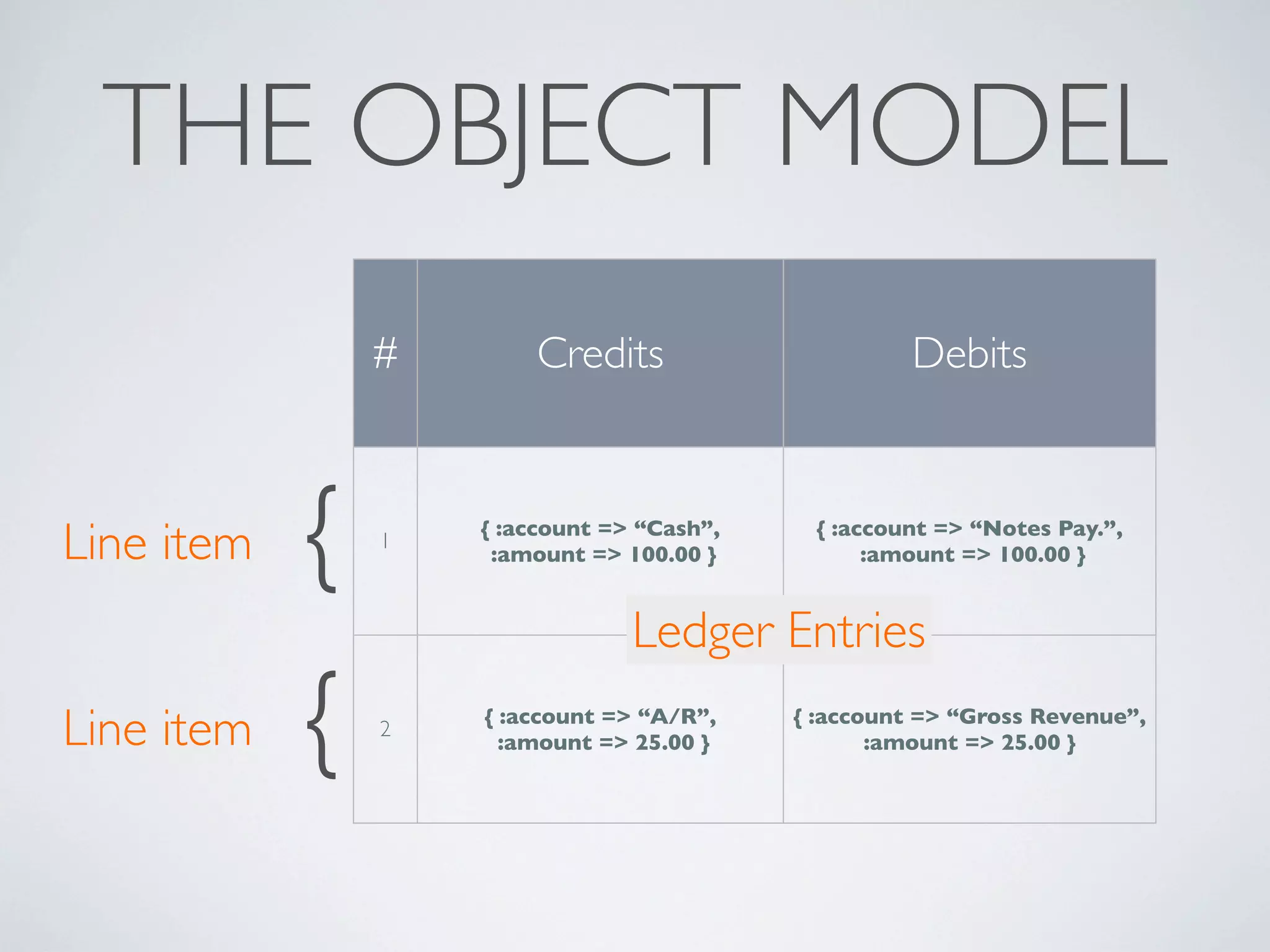
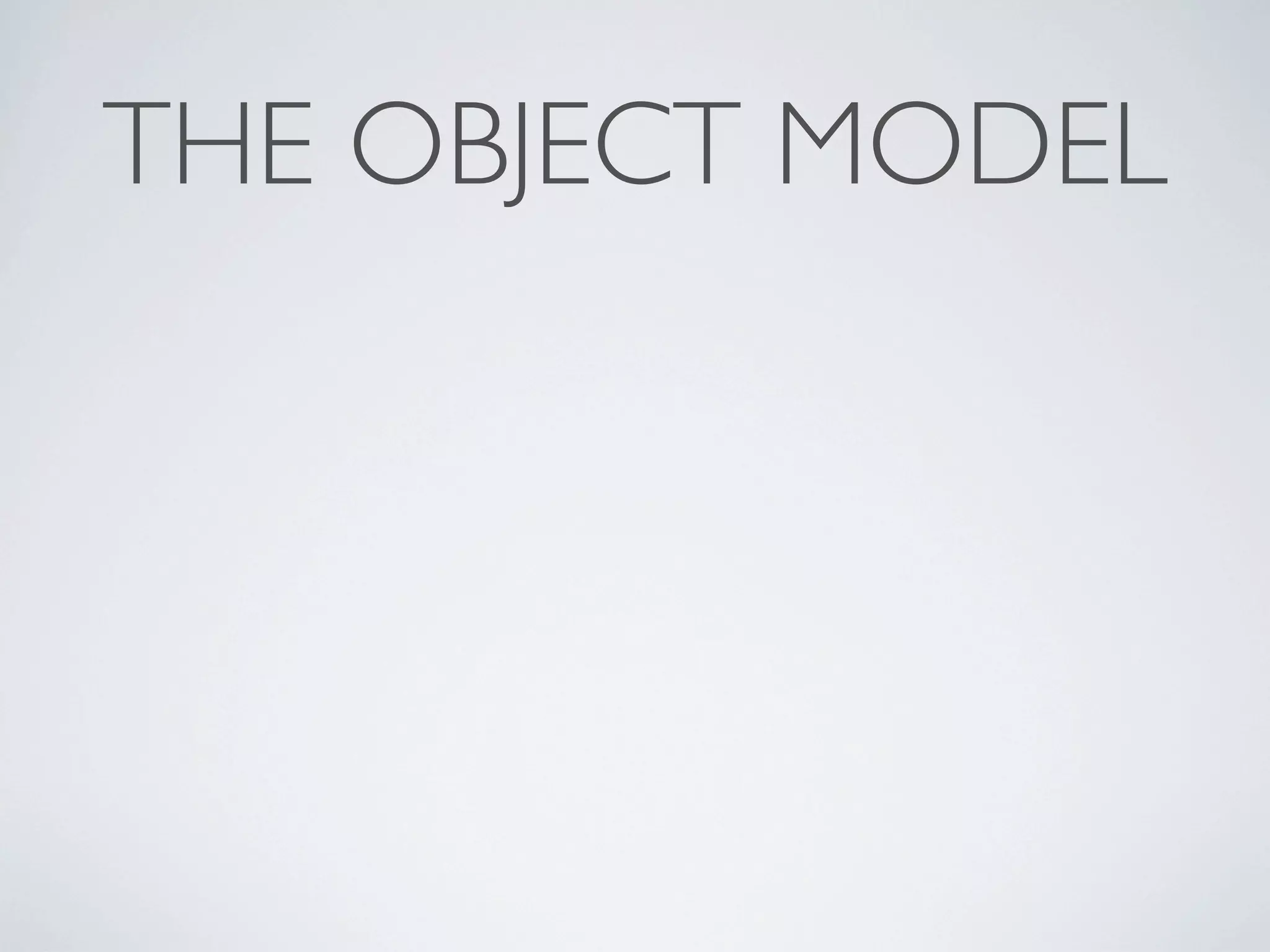
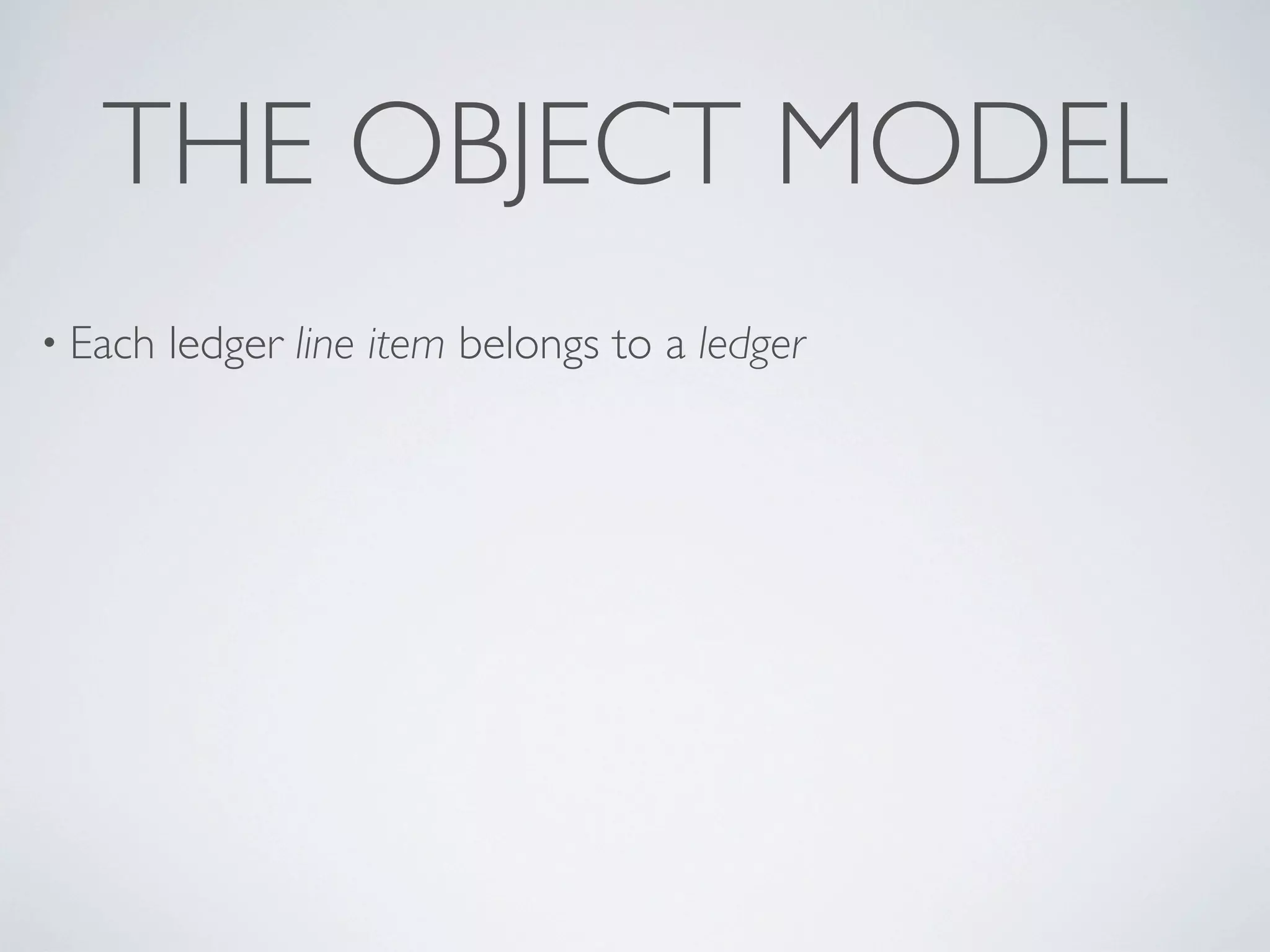
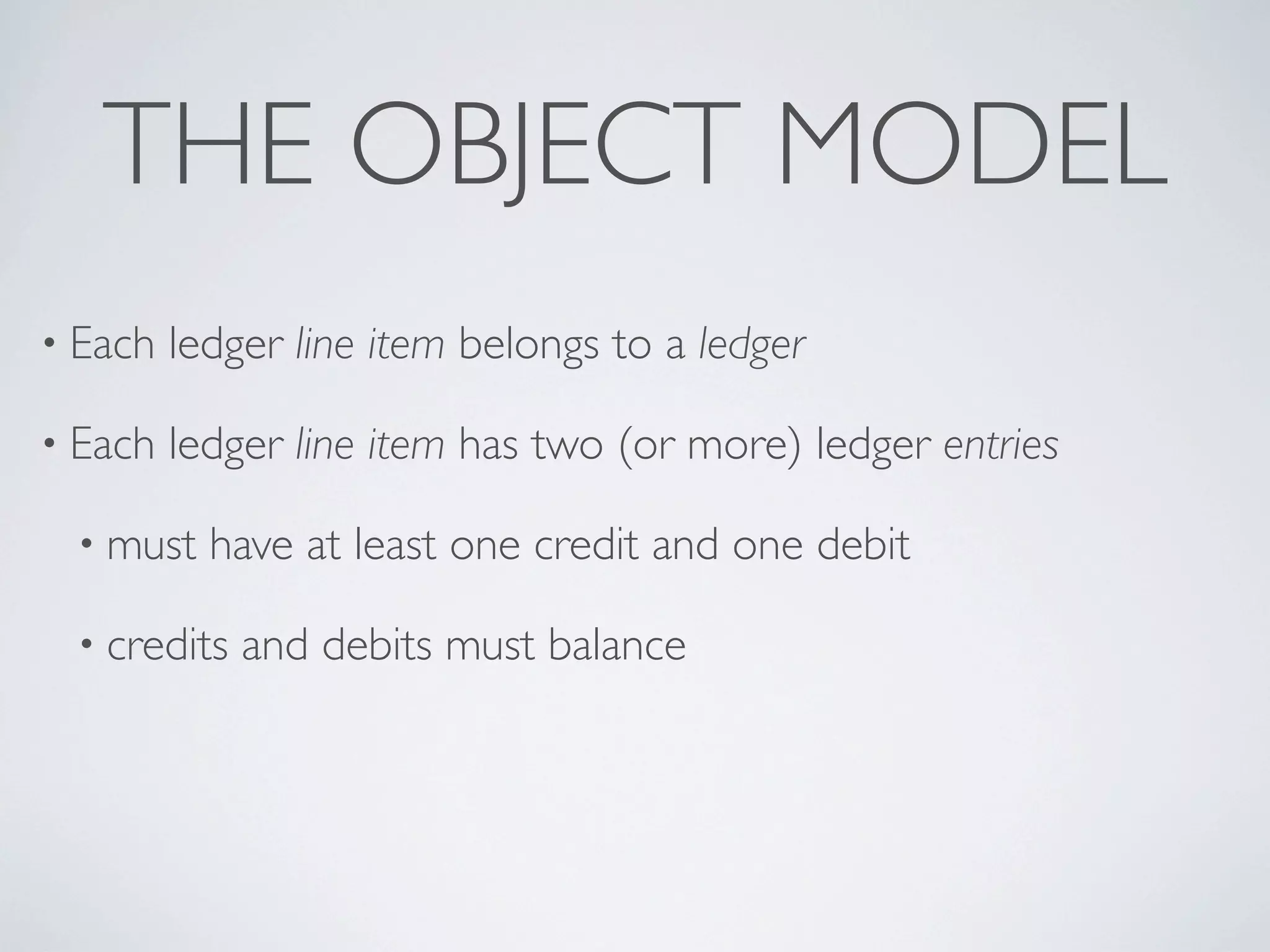
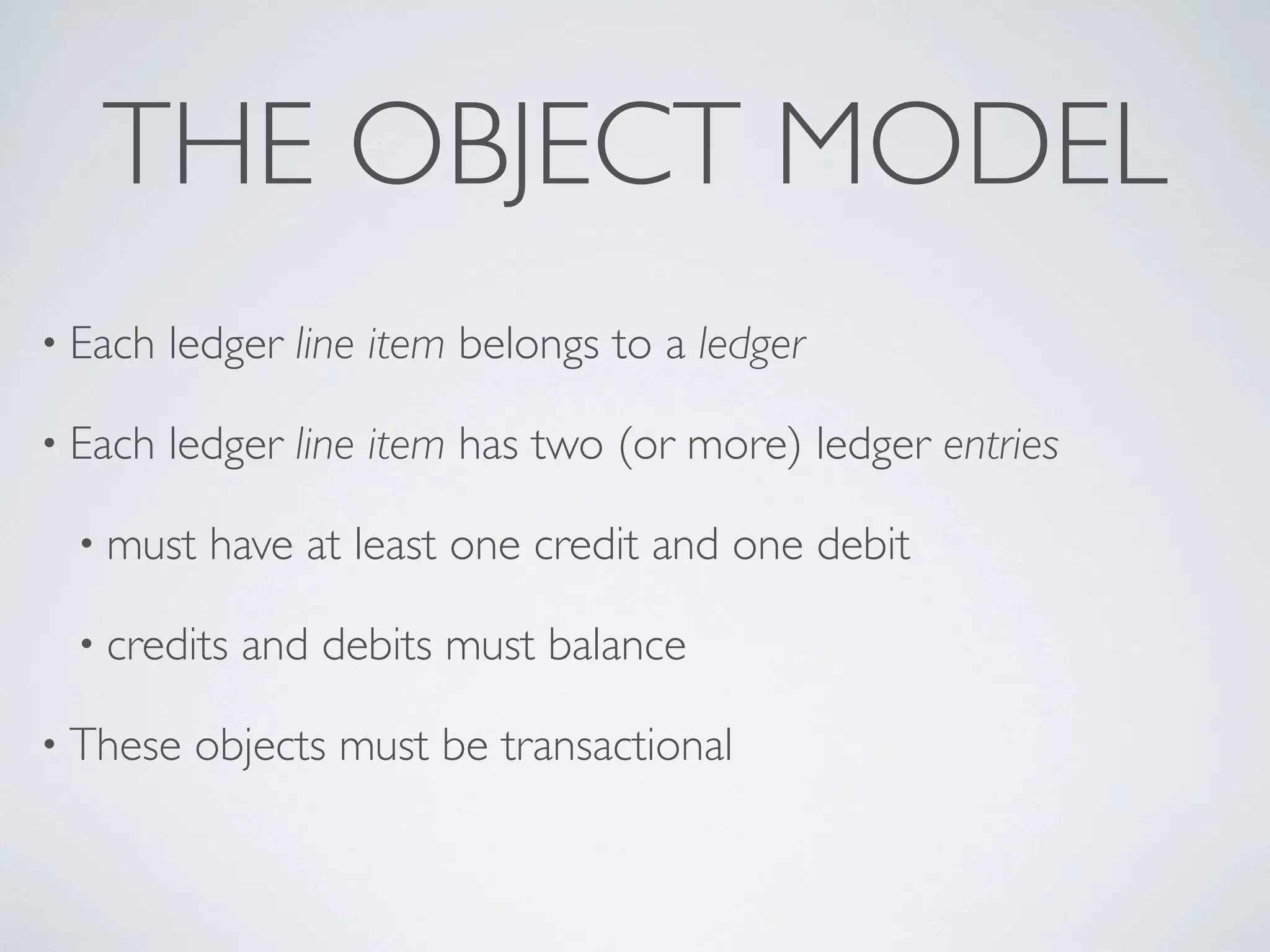
![SQL-BASED OBJECT MODEL @debit = Entry.new(:account => 'Cash', :amount => 100.00, :type => 'credit') @credit = Entry.new(:account => 'Notes Pay.', :amount => 100.00, :type => 'debit') @line_item = LineItem.new(:ledger_id => 1, :entries => [@debit, @credit])](https://image.slidesharecdn.com/practicalrubyprojectswithmongodb-rubykaigi-100829003551-phpapp02/75/Practical-Ruby-Projects-with-MongoDB-Ruby-Kaigi-2010-77-2048.jpg)
![SQL-BASED OBJECT MODEL @debit = Entry.new(:account => 'Cash', :amount => 100.00, :type => 'credit') @credit = Entry.new(:account => 'Notes Pay.', :amount => 100.00, :type => 'debit') @line_item = LineItem.new :ledger_id => 1, :entries => [@debit, @credit] In a relational schema, we need a database transaction to ensure multi-row atomicity](https://image.slidesharecdn.com/practicalrubyprojectswithmongodb-rubykaigi-100829003551-phpapp02/75/Practical-Ruby-Projects-with-MongoDB-Ruby-Kaigi-2010-78-2048.jpg)
![SQL-BASED OBJECT MODEL @debit = Entry.new(:account => 'Cash', :amount => 100.00, :type => 'credit') @credit = Entry.new(:account => 'Notes Pay.', :amount => 100.00, :type => 'debit') @line_item = LineItem.new :ledger_id => 1, :entries => [@debit, @credit] Because we need to create 3 new records in the database here](https://image.slidesharecdn.com/practicalrubyprojectswithmongodb-rubykaigi-100829003551-phpapp02/75/Practical-Ruby-Projects-with-MongoDB-Ruby-Kaigi-2010-79-2048.jpg)
![MONGO-FIED MODELING @line_item = LineItem.new(:ledger_id => 1, :entries => [ {:account => 'Cash', :type => 'debit', :amount => 100}, {:account => 'Notes pay.', :type => 'debit', :amount => 100} ] )](https://image.slidesharecdn.com/practicalrubyprojectswithmongodb-rubykaigi-100829003551-phpapp02/75/Practical-Ruby-Projects-with-MongoDB-Ruby-Kaigi-2010-80-2048.jpg)
![MONGO-FIED MODELING @line_item = LineItem.new(:ledger_id => 1, :entries => [ {:account => 'Cash', :type => 'debit', :amount => 100}, {:account => 'Notes pay.', :type => 'debit', :amount => 100} ] ) This is the perfect case for embedded documents.](https://image.slidesharecdn.com/practicalrubyprojectswithmongodb-rubykaigi-100829003551-phpapp02/75/Practical-Ruby-Projects-with-MongoDB-Ruby-Kaigi-2010-81-2048.jpg)
![MONGO-FIED MODELING @line_item = LineItem.new(:ledger_id => 1, :entries => [ {:account => 'Cash', :type => 'debit', :amount => 100}, {:account => 'Notes pay.', :type => 'debit', :amount => 100} ] ) We will never have more than a few entries (usually two)](https://image.slidesharecdn.com/practicalrubyprojectswithmongodb-rubykaigi-100829003551-phpapp02/75/Practical-Ruby-Projects-with-MongoDB-Ruby-Kaigi-2010-82-2048.jpg)
![MONGO-FIED MODELING @line_item = LineItem.new(:ledger_id => 1, :entries => [ {:account => 'Cash', :type => 'debit', :amount => 100}, {:account => 'Notes pay.', :type => 'debit', :amount => 100} ] ) Embedded docs are perfect for “contains” many relationships](https://image.slidesharecdn.com/practicalrubyprojectswithmongodb-rubykaigi-100829003551-phpapp02/75/Practical-Ruby-Projects-with-MongoDB-Ruby-Kaigi-2010-83-2048.jpg)
![MONGO-FIED MODELING @line_item = LineItem.new(:ledger_id => 1, :entries => [ {:account => 'Cash', :type => 'debit', :amount => 100}, {:account => 'Notes pay.', :type => 'debit', :amount => 100} ] ) DB-level transactions no-longer needed. Mongo has single document atomicity.](https://image.slidesharecdn.com/practicalrubyprojectswithmongodb-rubykaigi-100829003551-phpapp02/75/Practical-Ruby-Projects-with-MongoDB-Ruby-Kaigi-2010-84-2048.jpg)

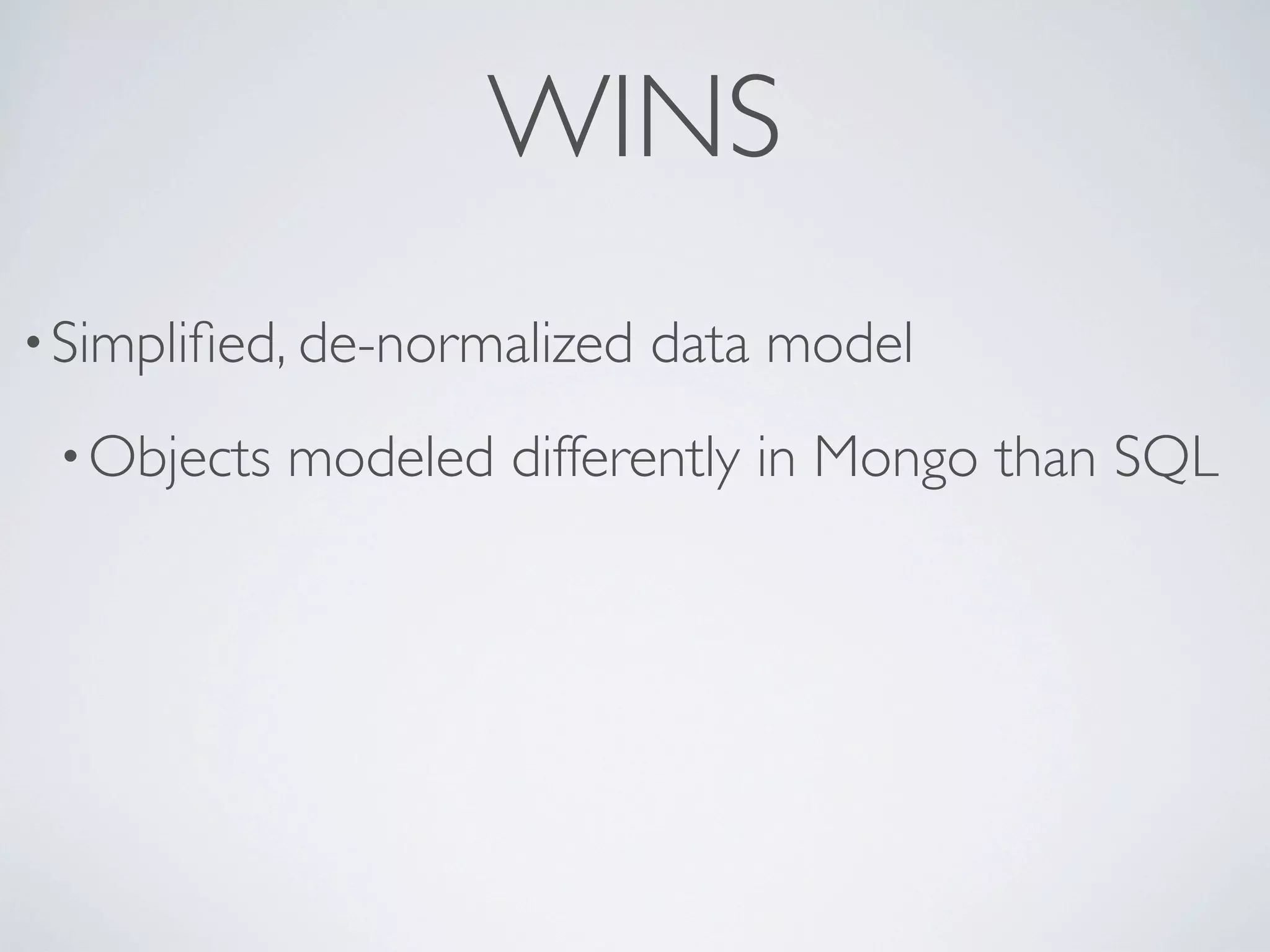
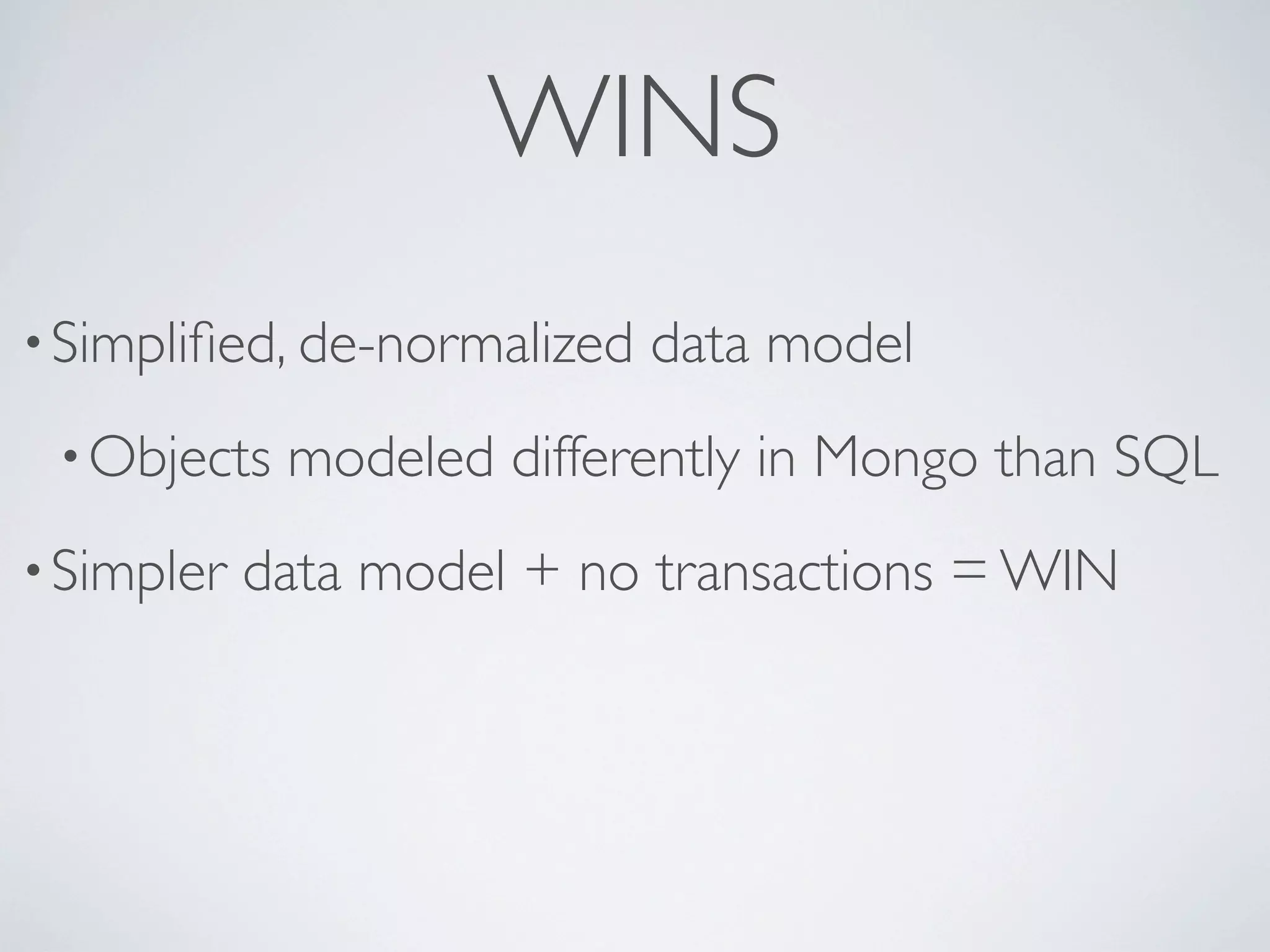

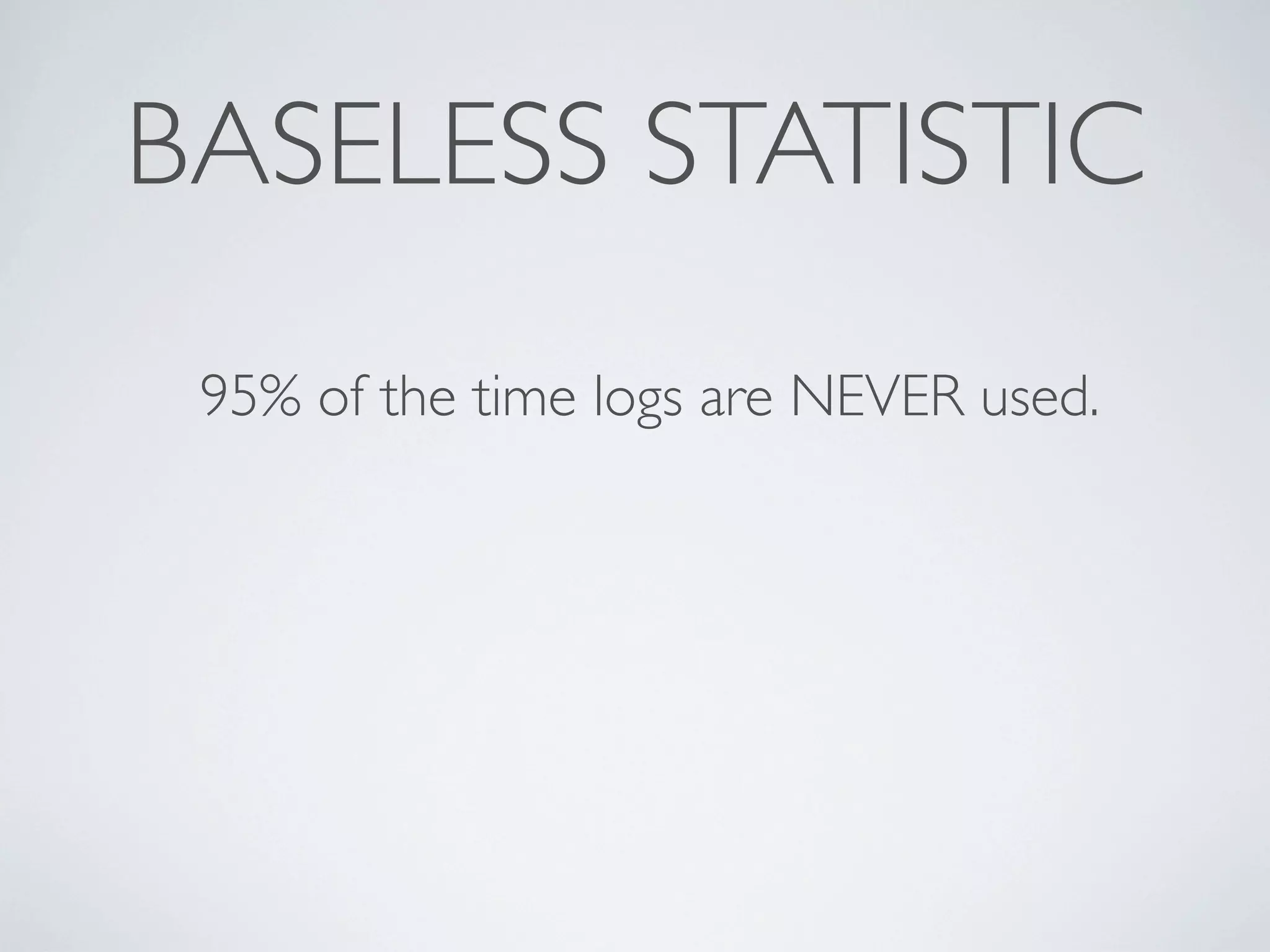
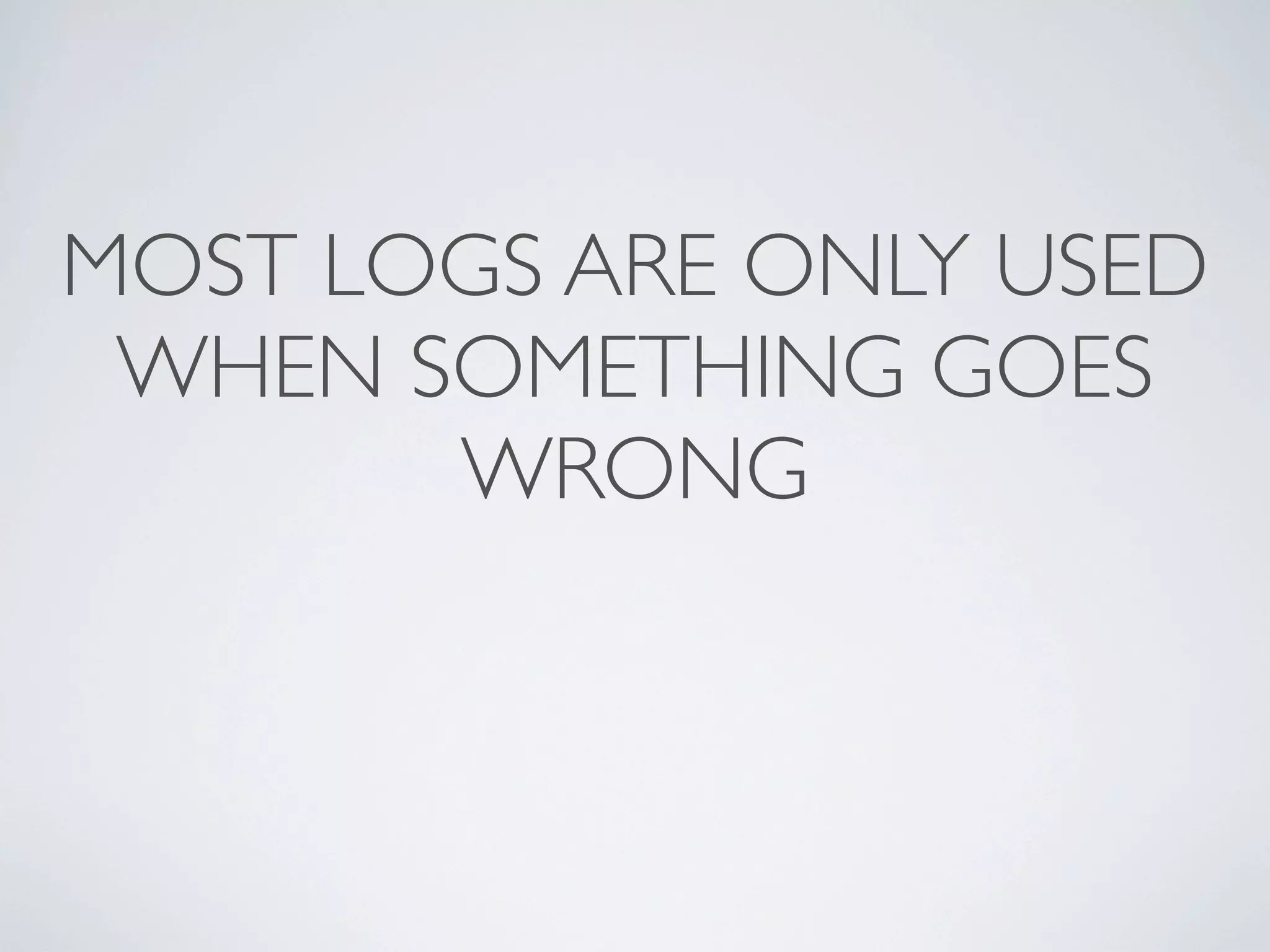
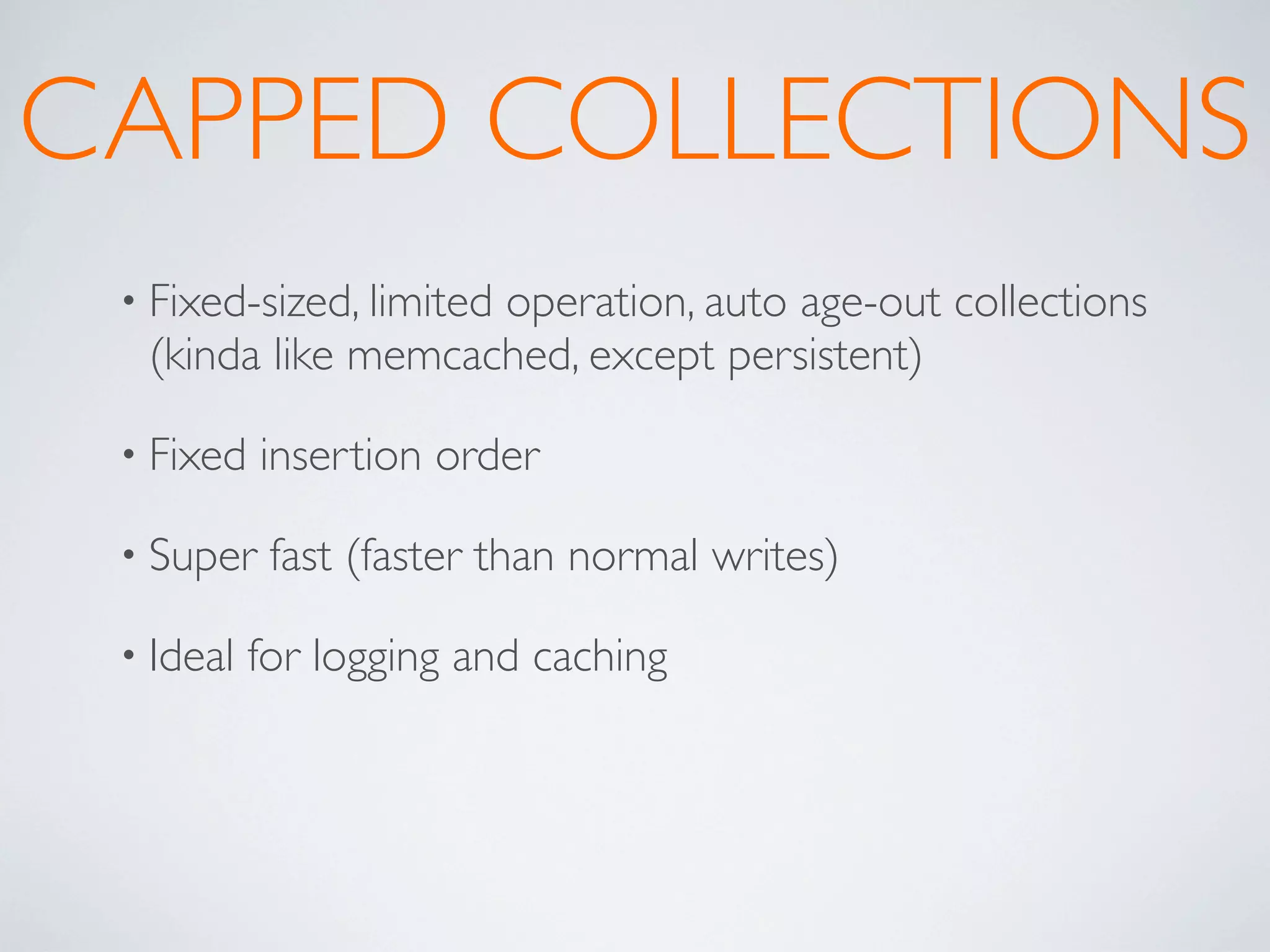
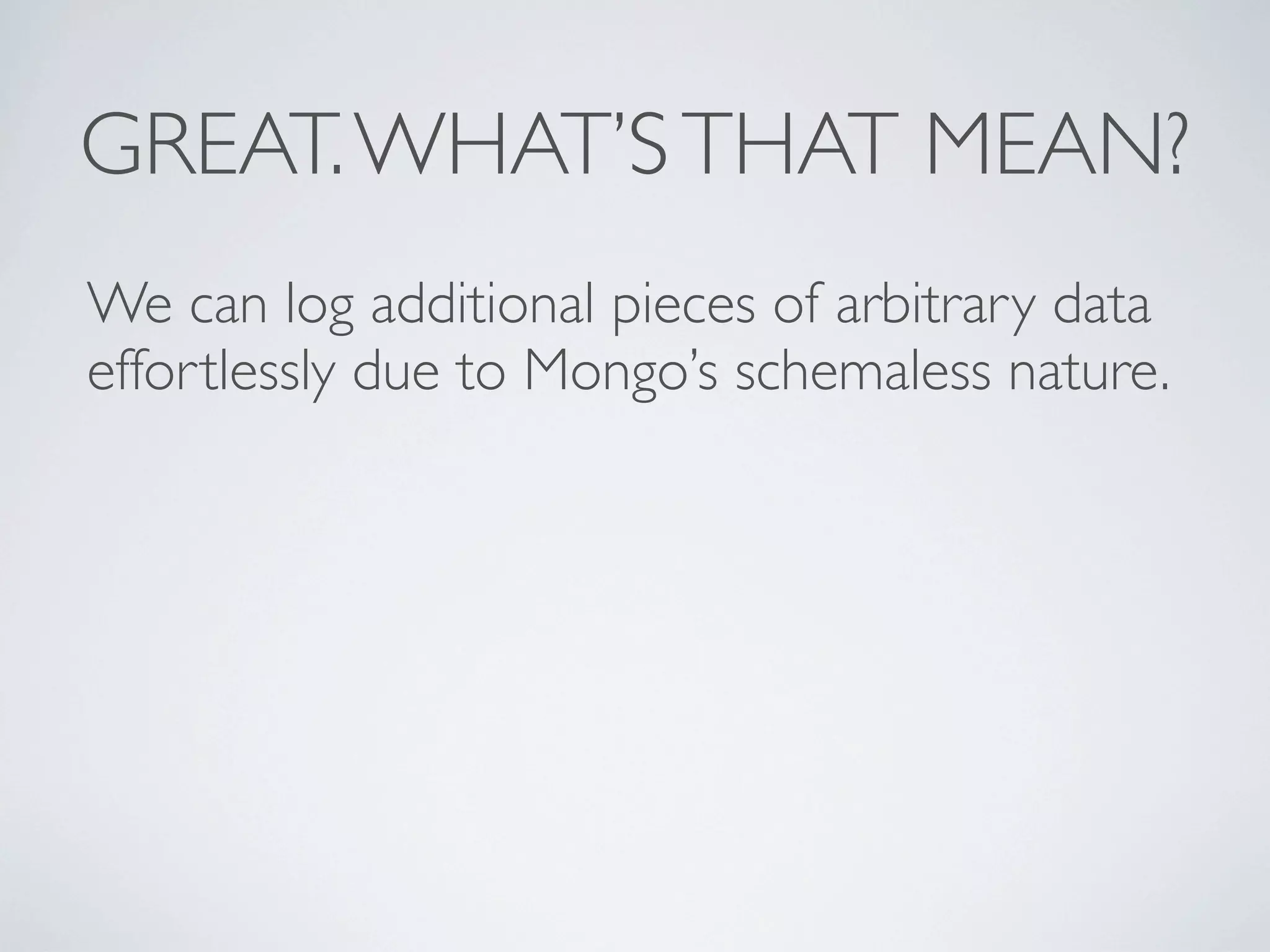



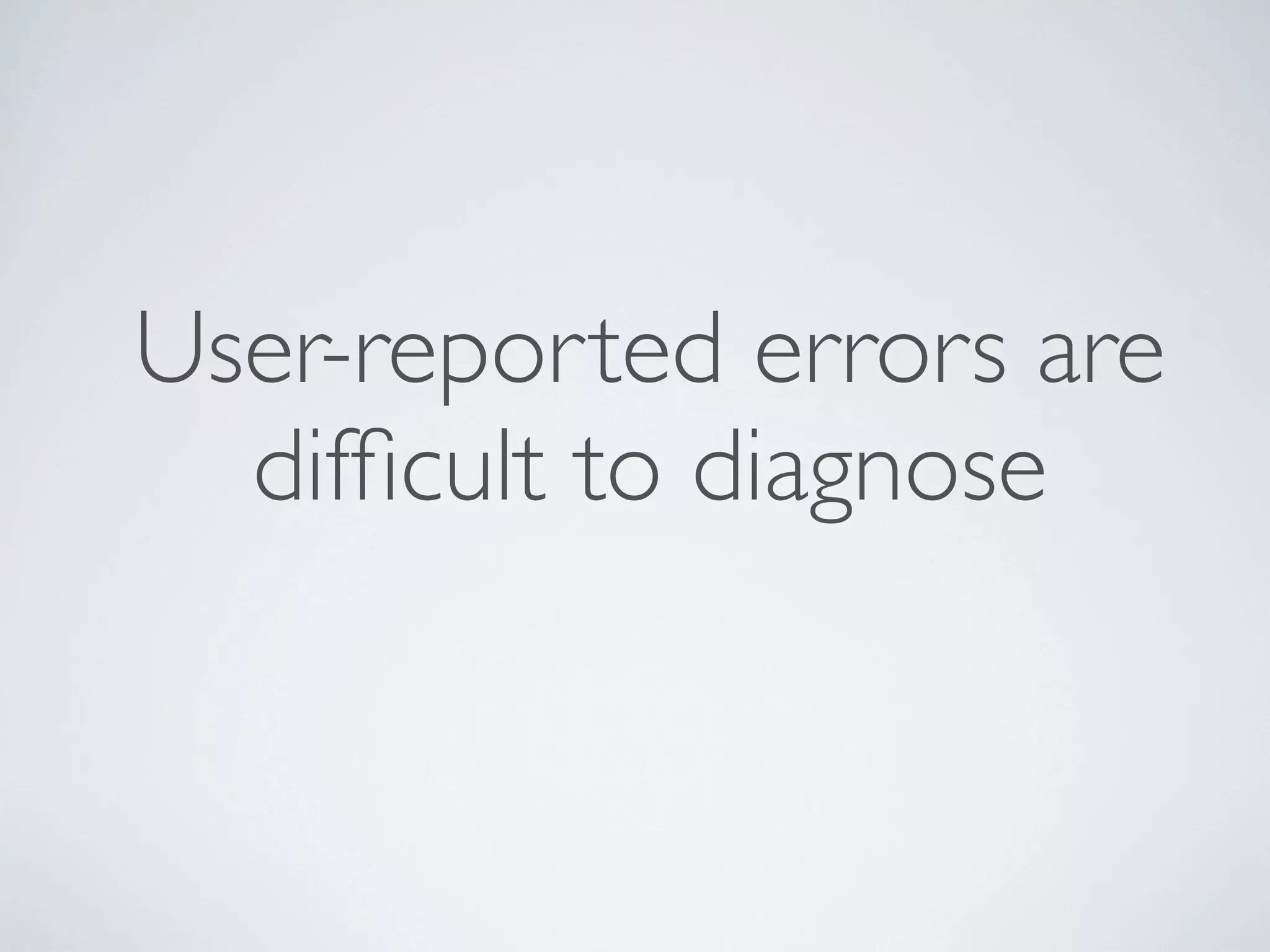

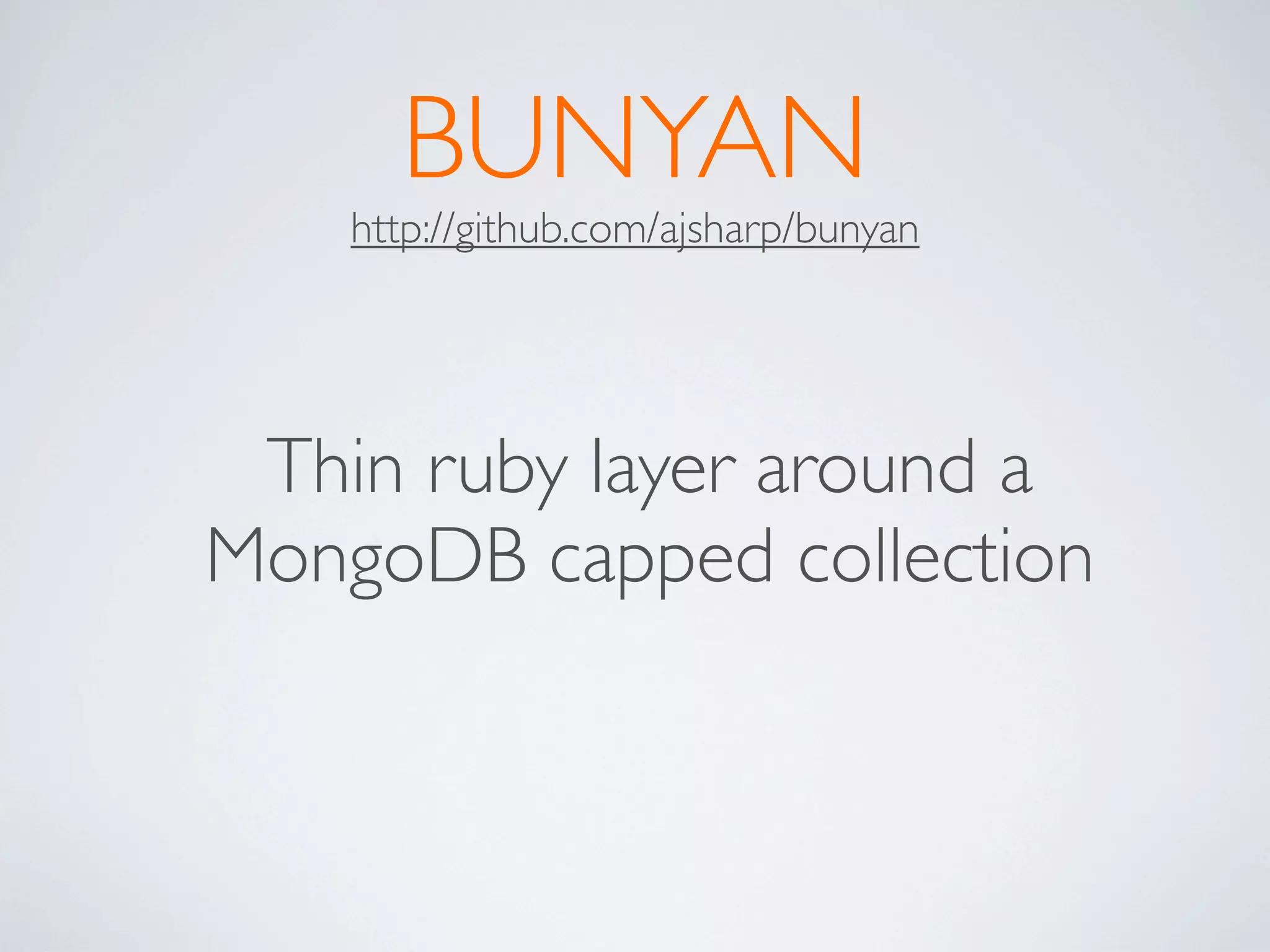
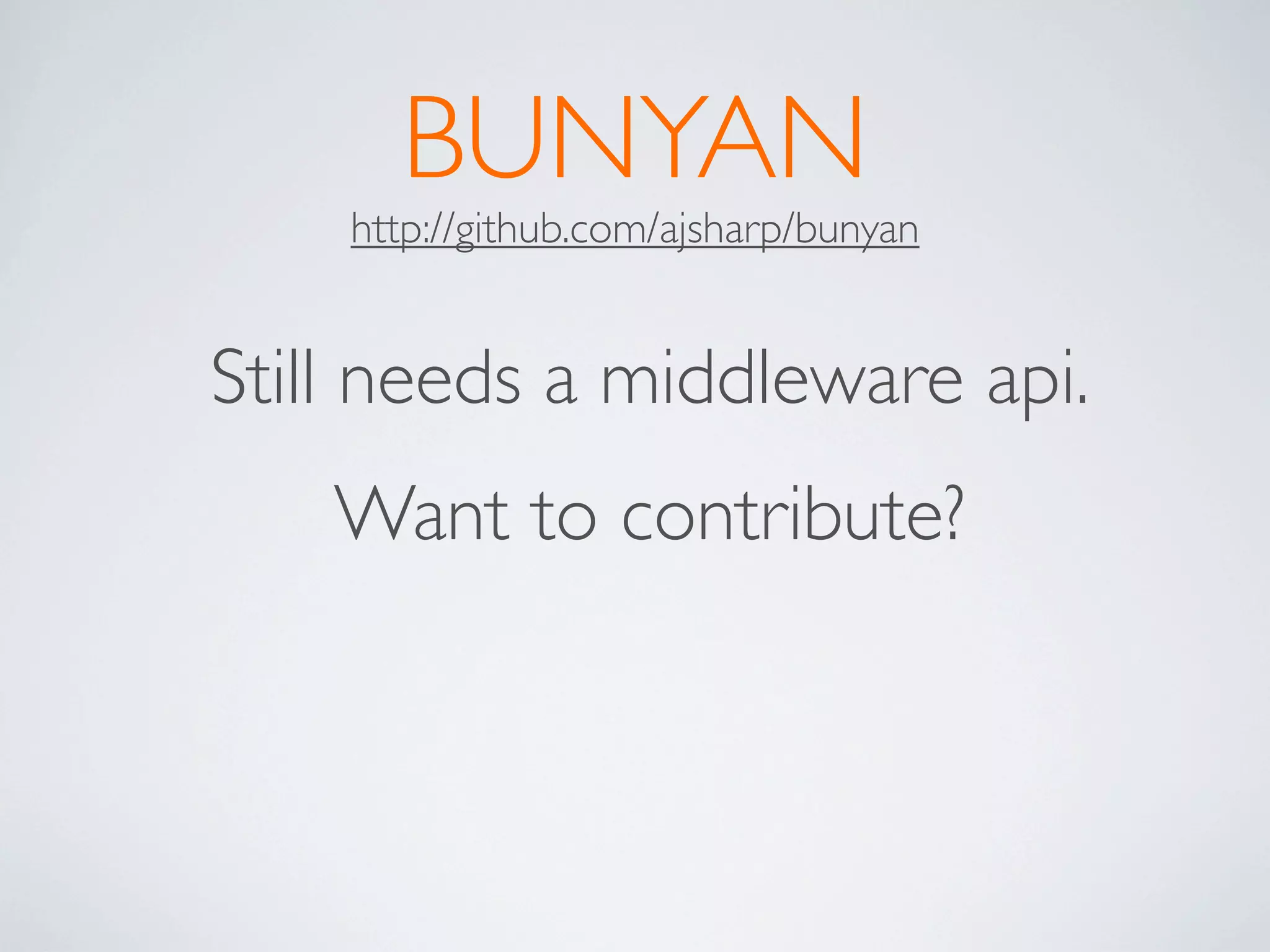
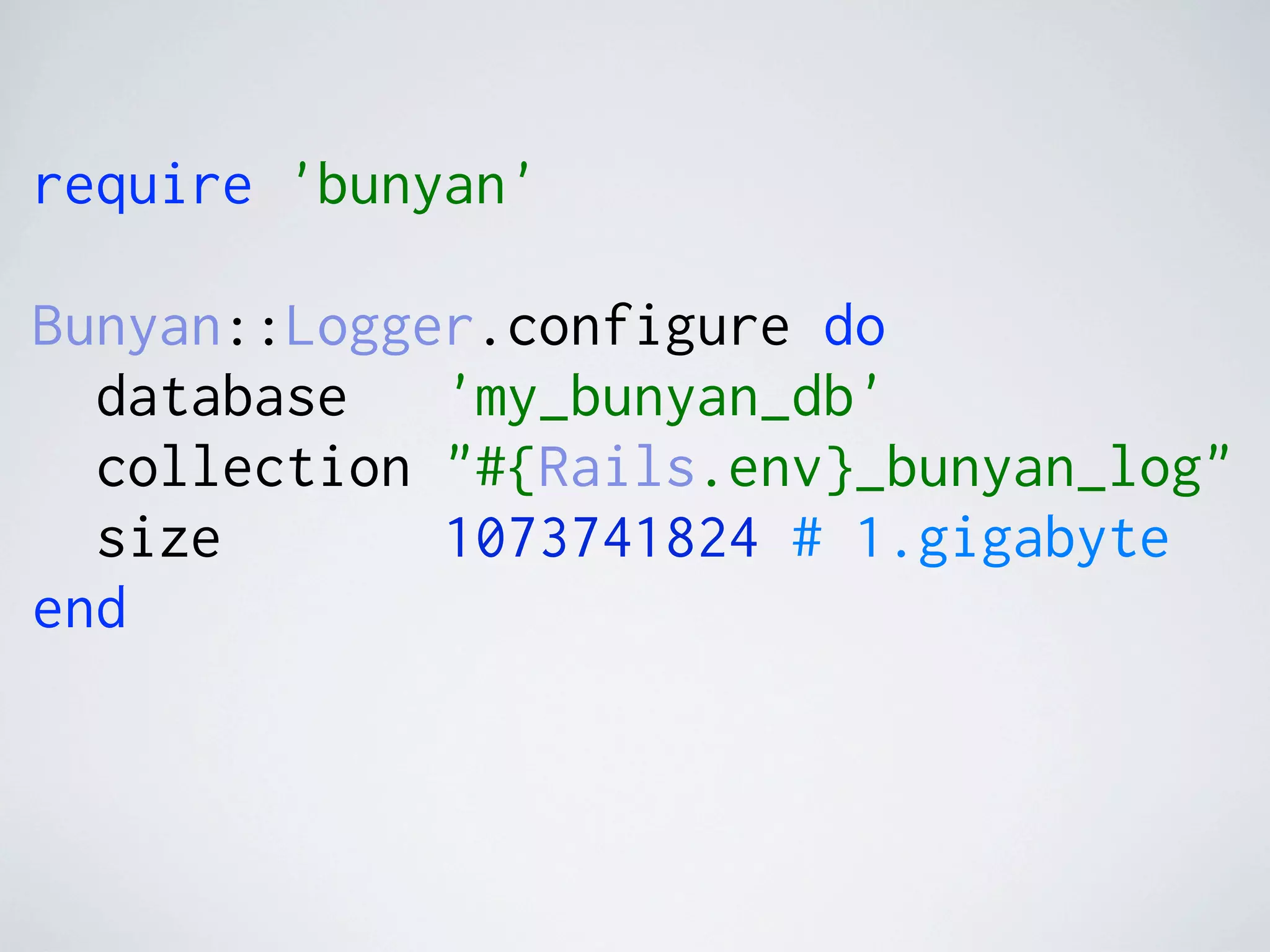
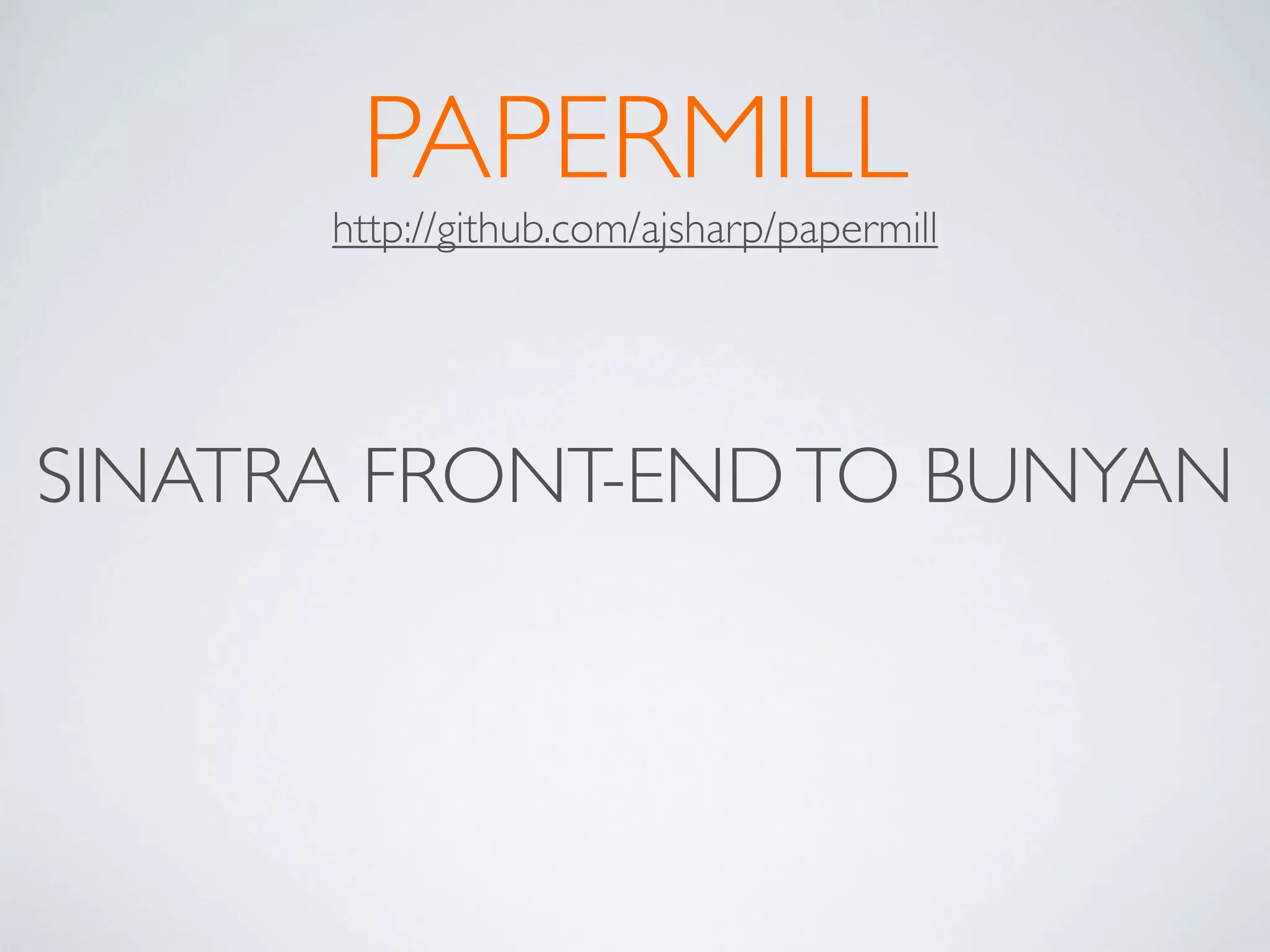
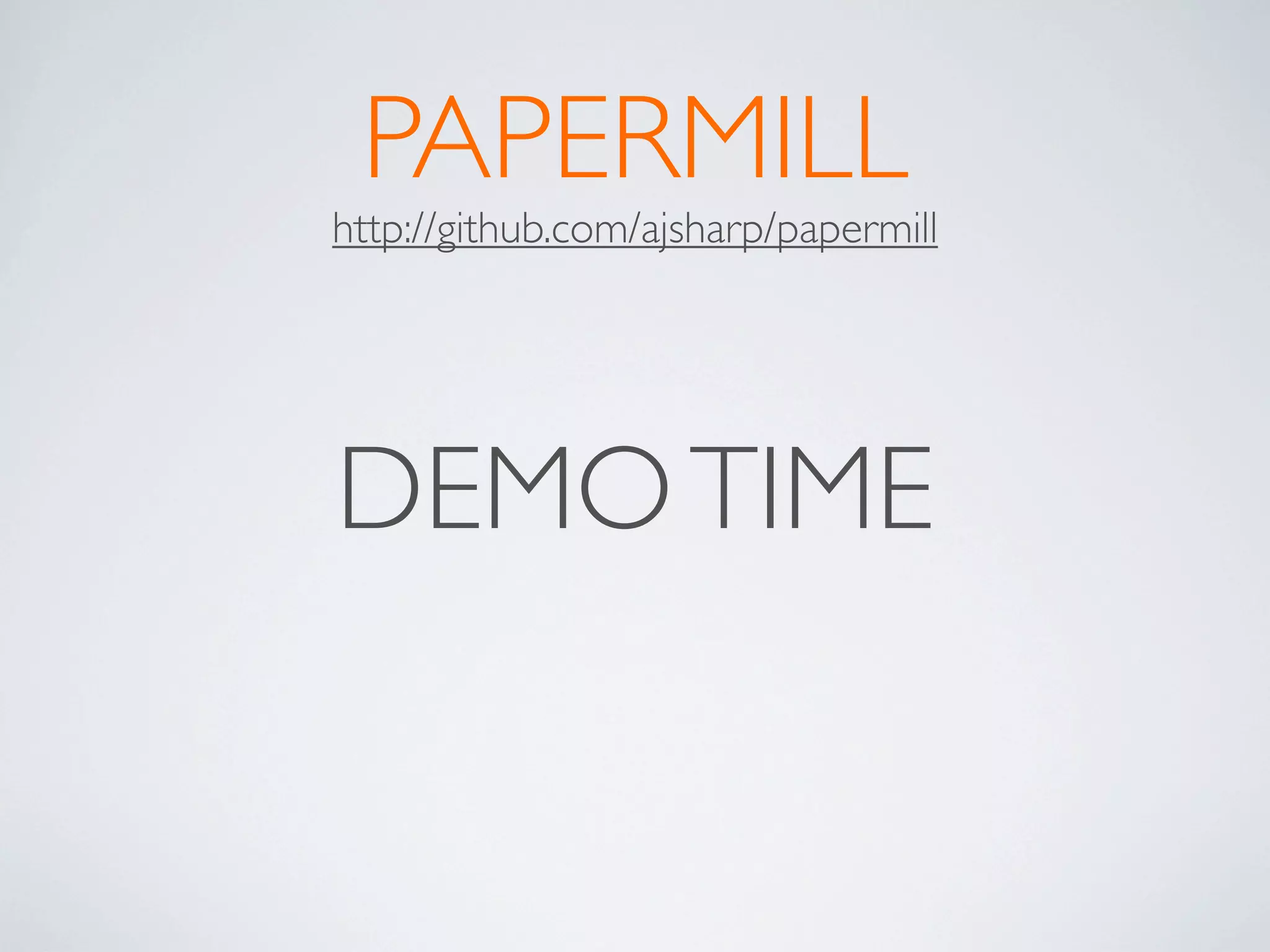


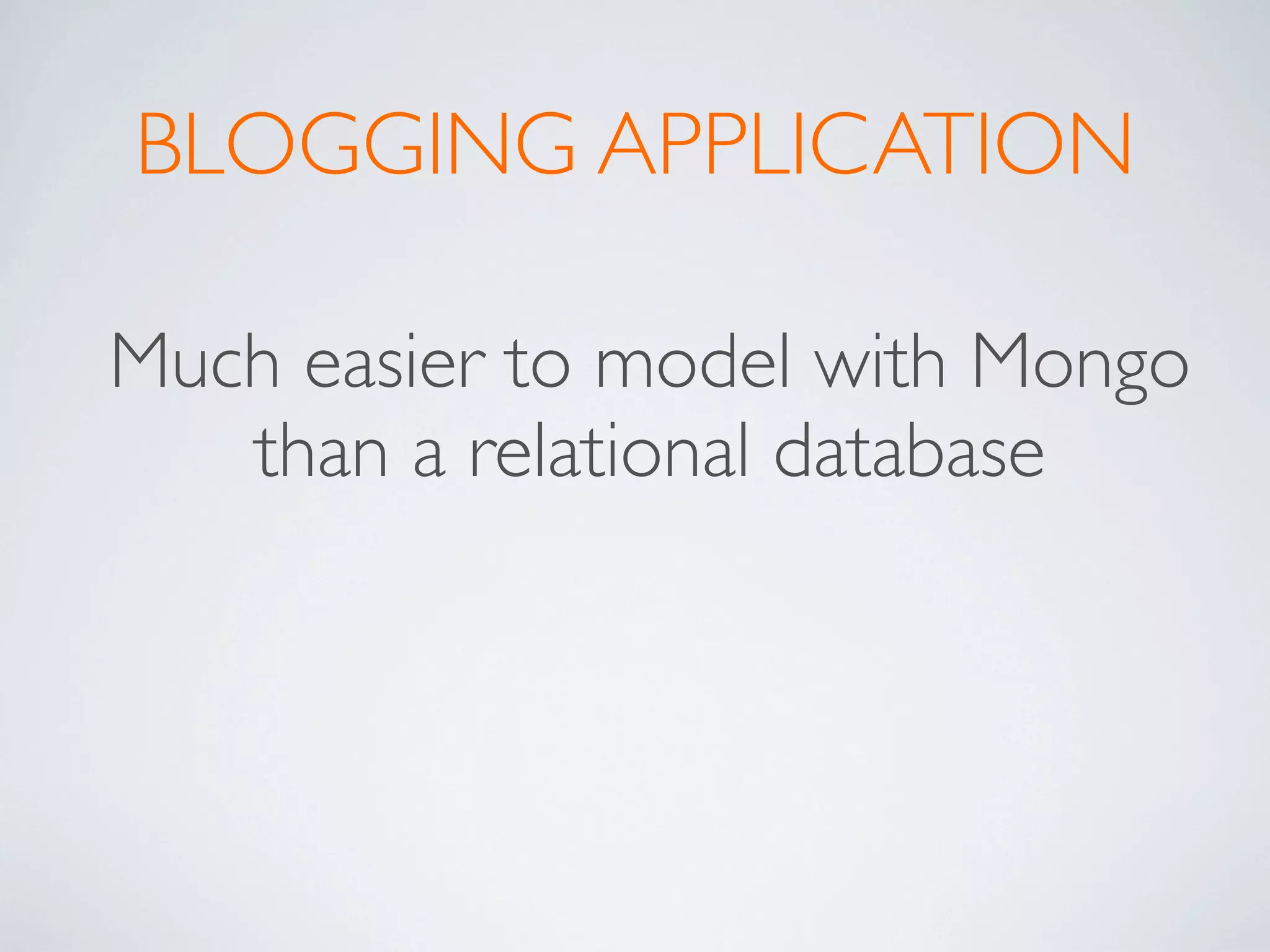
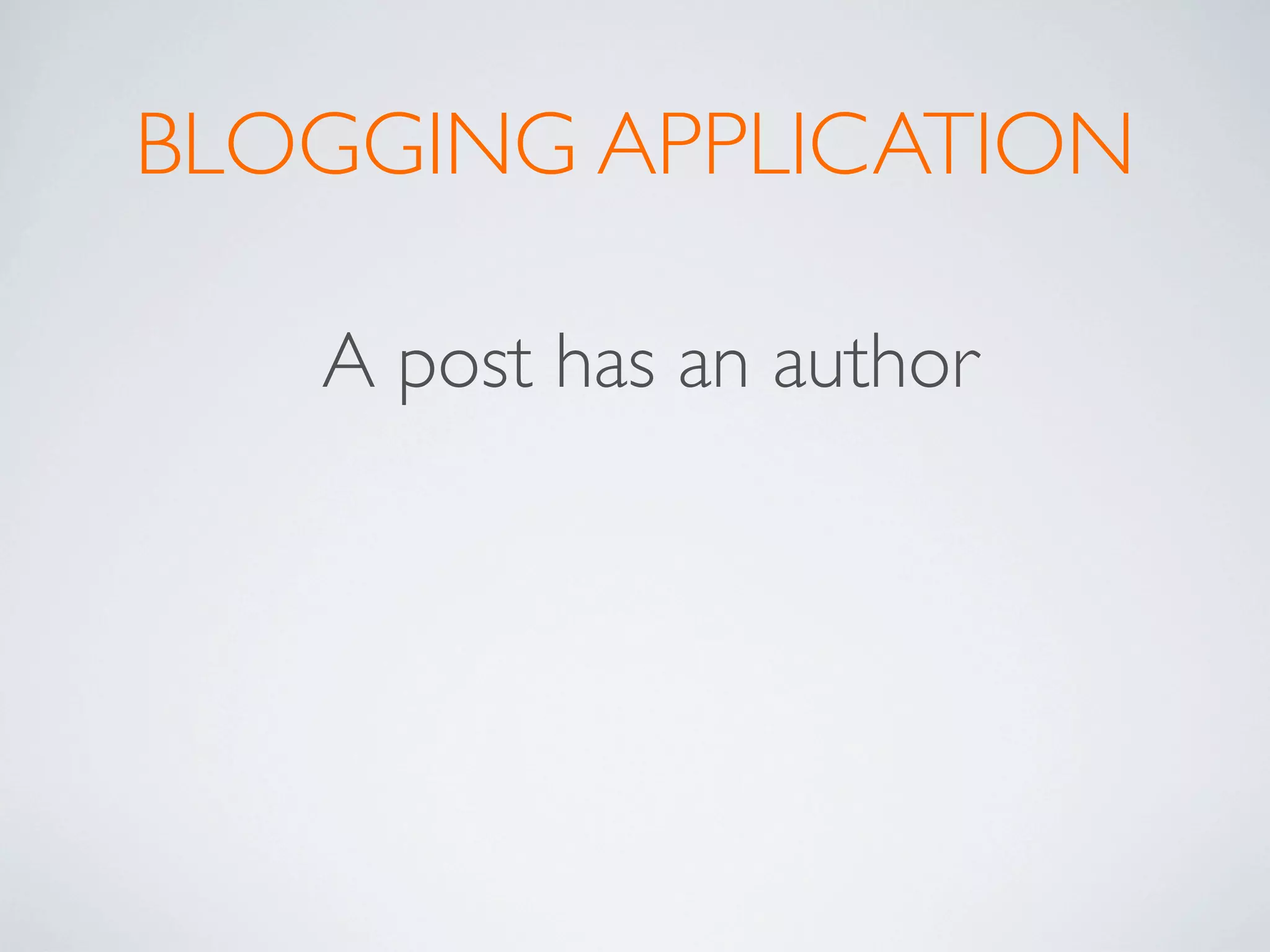
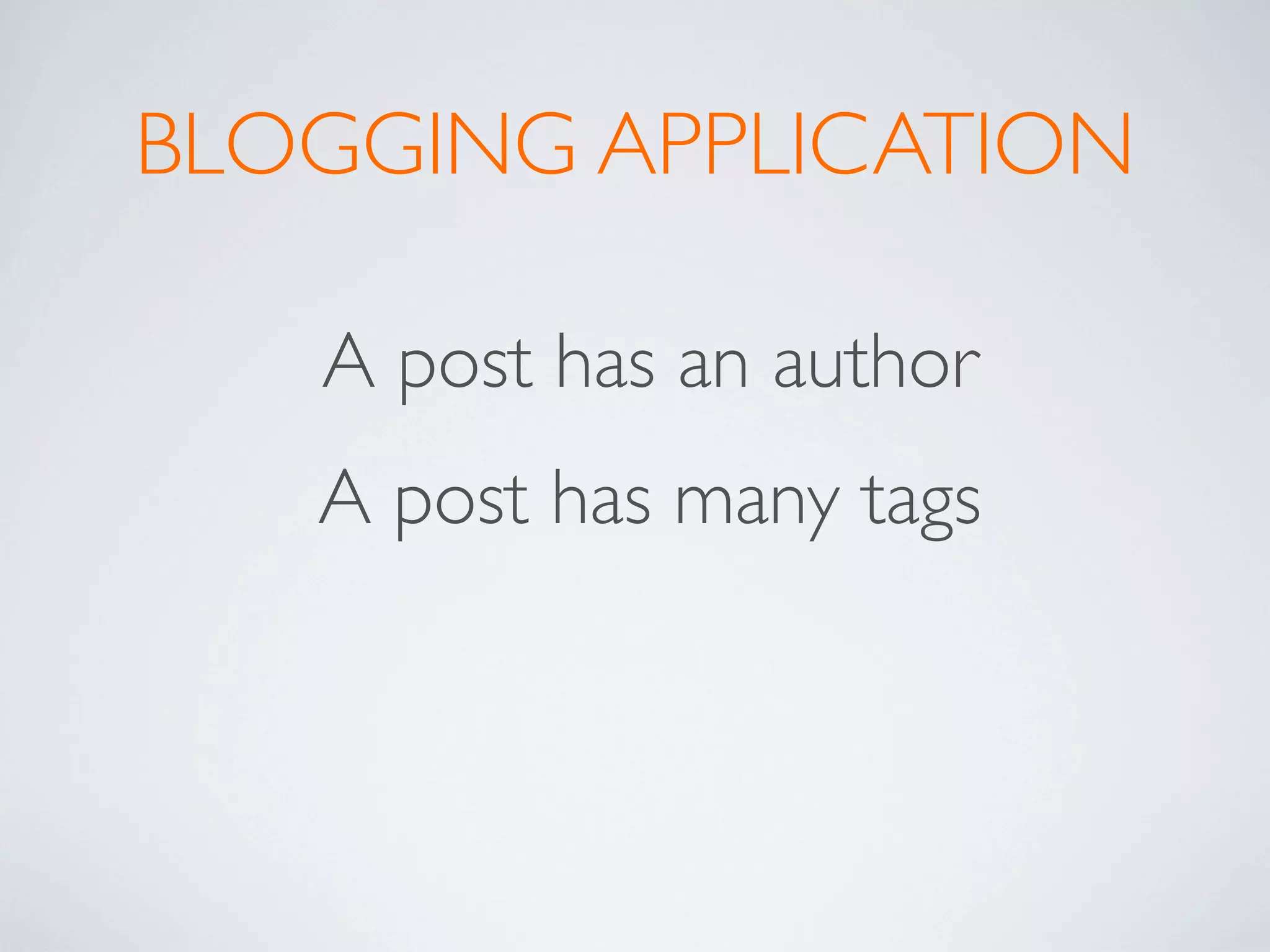
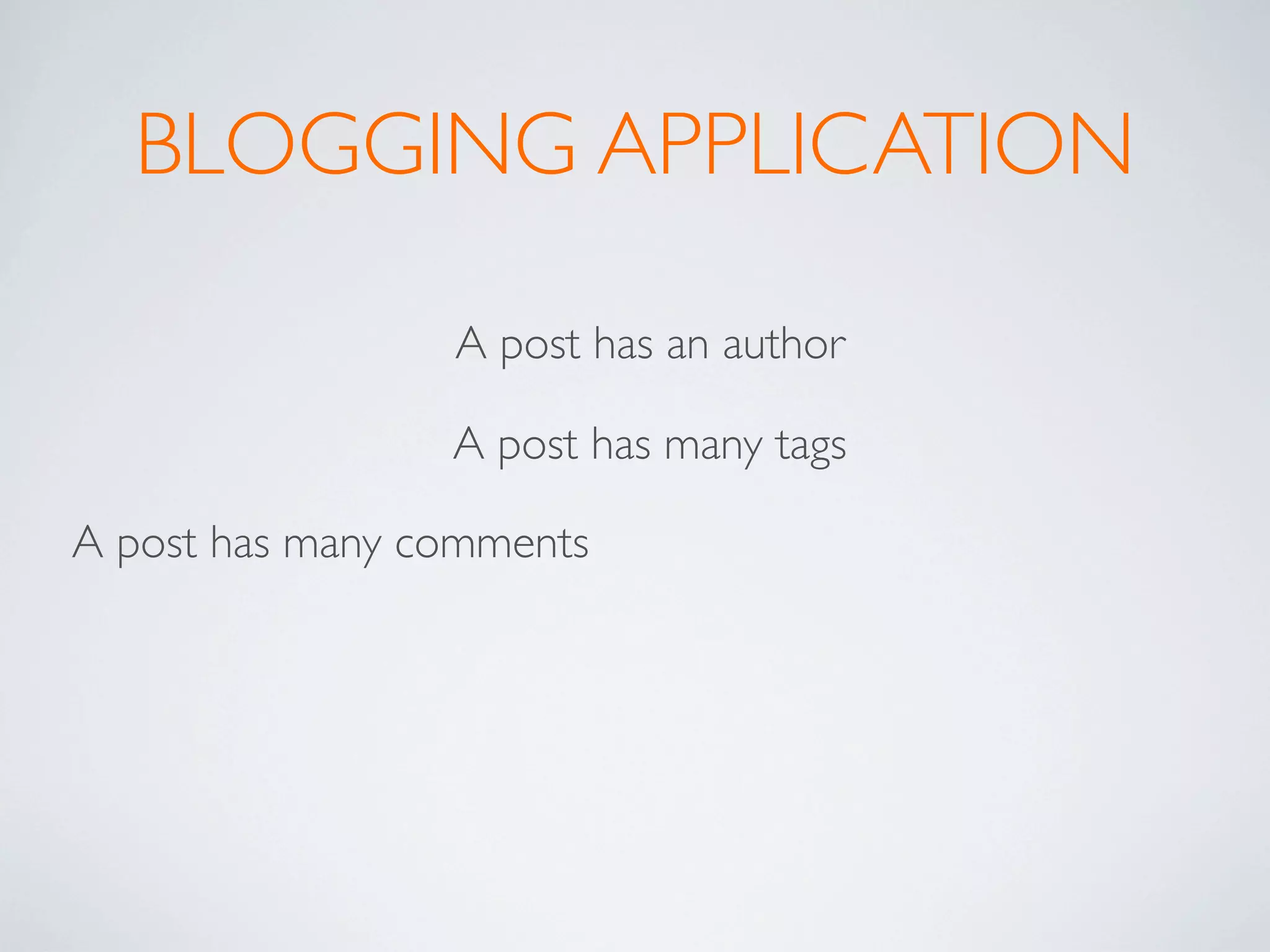
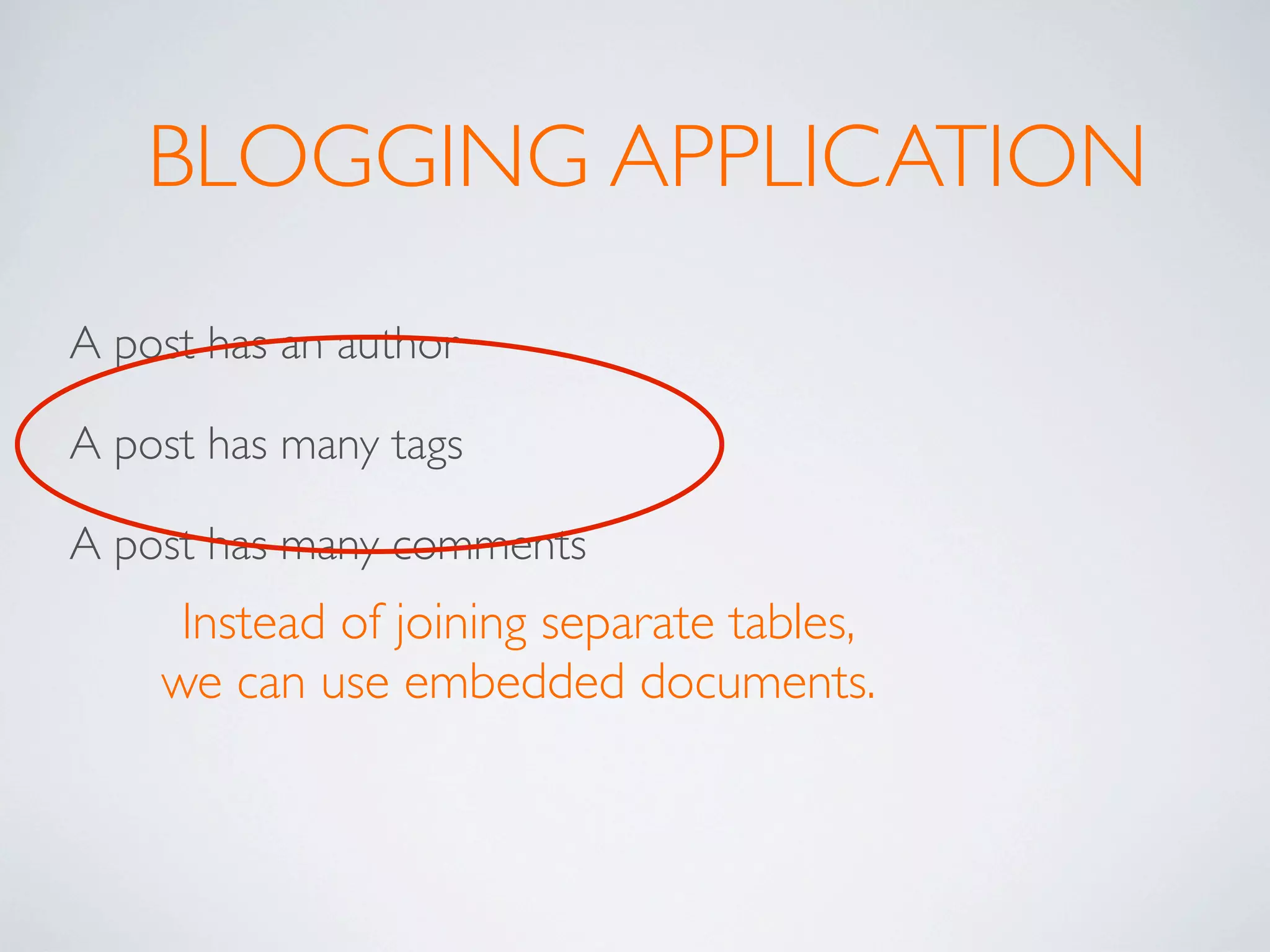

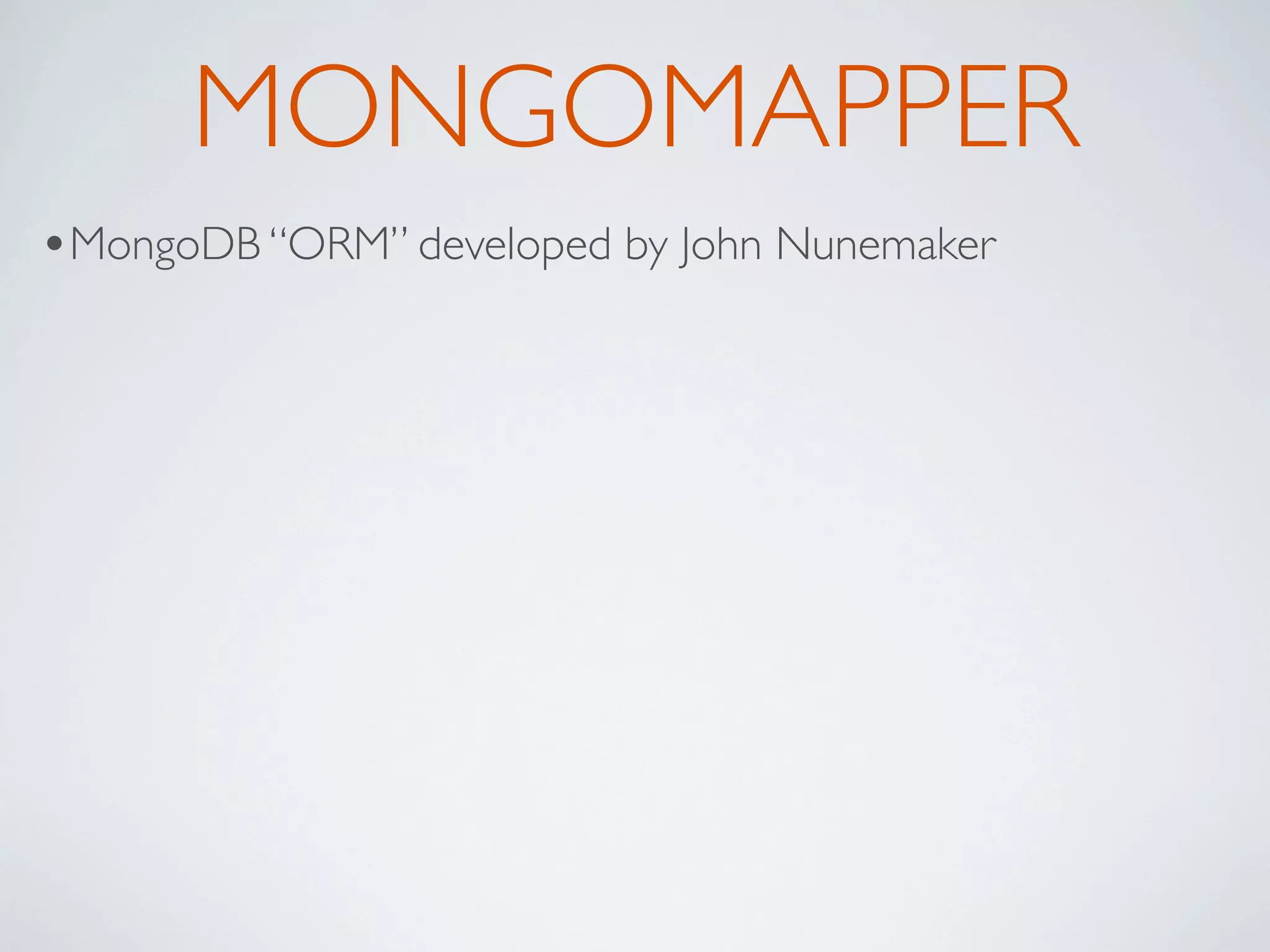
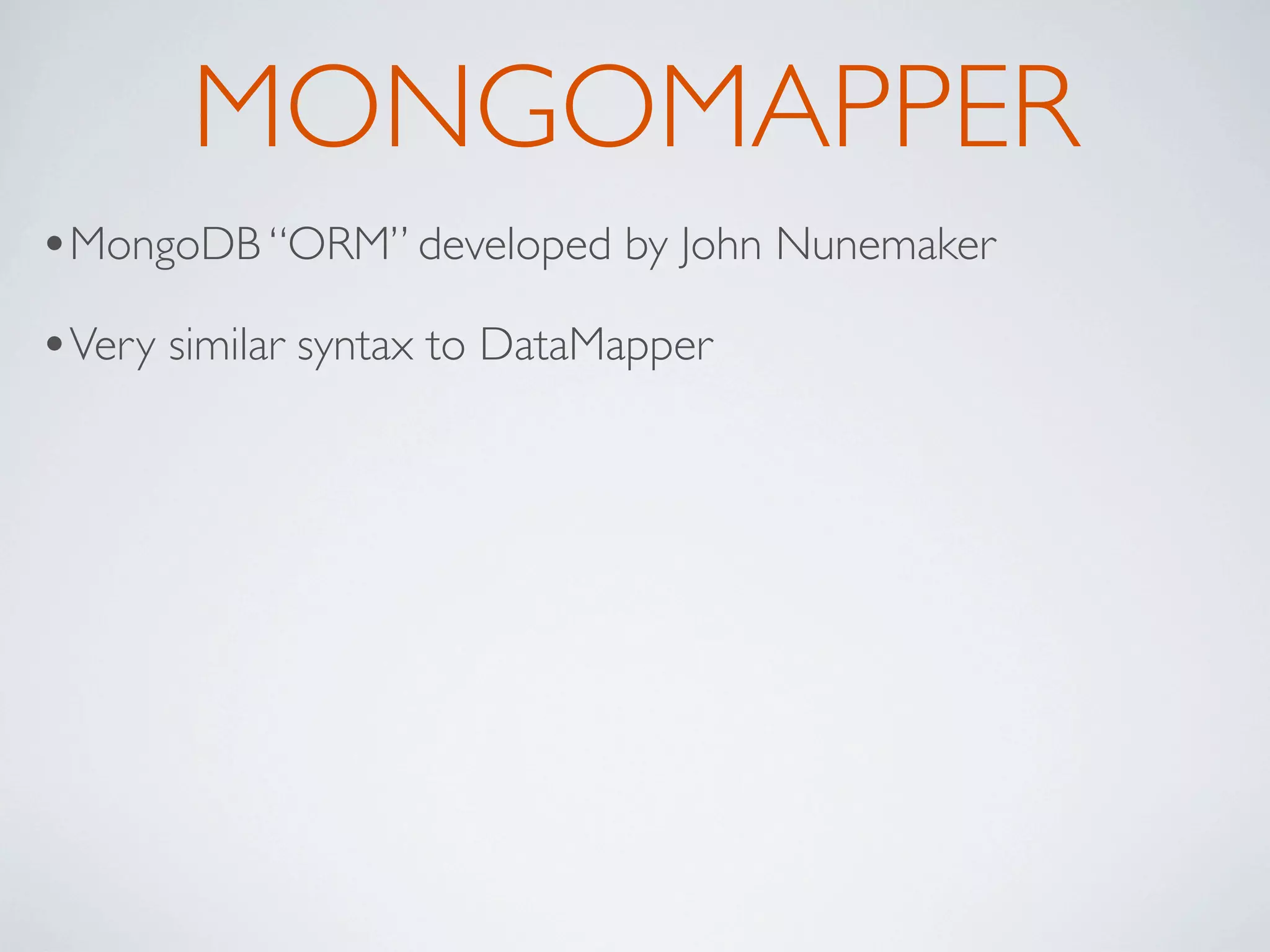
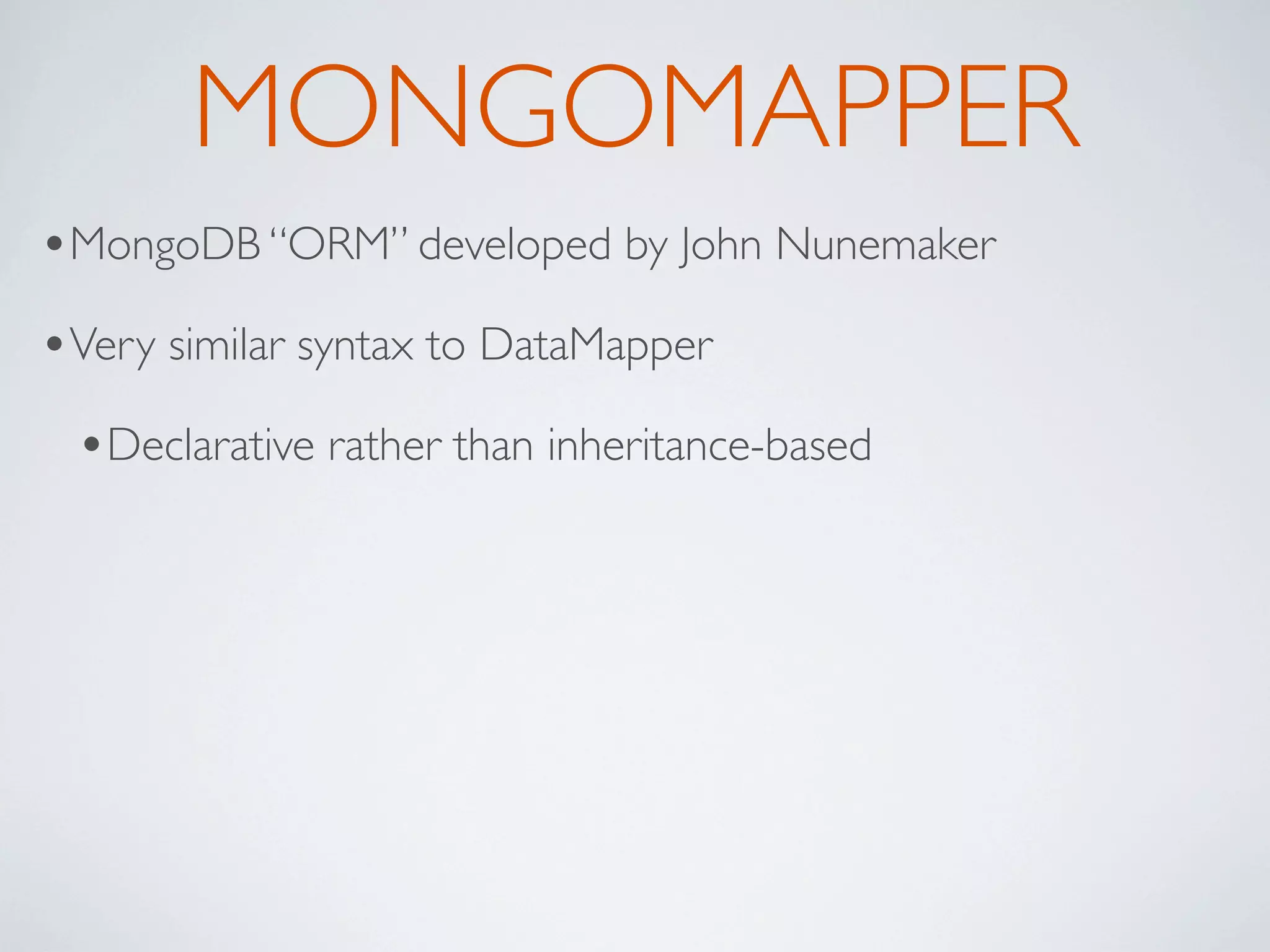
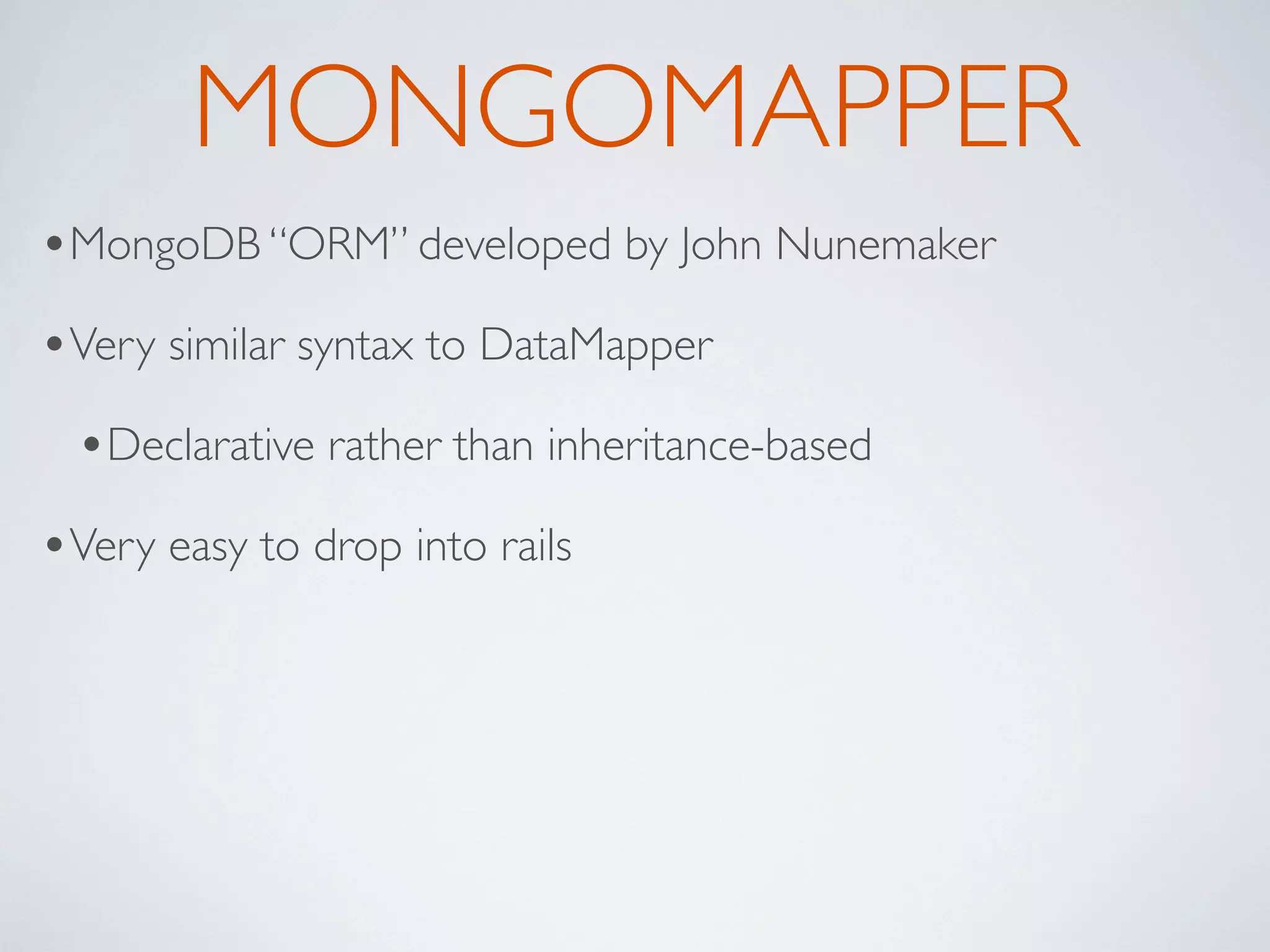
![MONGOMAPPER require 'mongo' connection = Mongo::Connection.new.db("blog_app") class Post include MongoMapper::Document belongs_to :author, :class_name => "User" key :title, String, :required => true key :body, String, :required => true key :author_id, Integer, :required => true key :published_at, Time key :published, Boolean, :default => false key :tags, Array, :default => [] timestamps! end](https://image.slidesharecdn.com/practicalrubyprojectswithmongodb-rubykaigi-100829003551-phpapp02/75/Practical-Ruby-Projects-with-MongoDB-Ruby-Kaigi-2010-115-2048.jpg)
